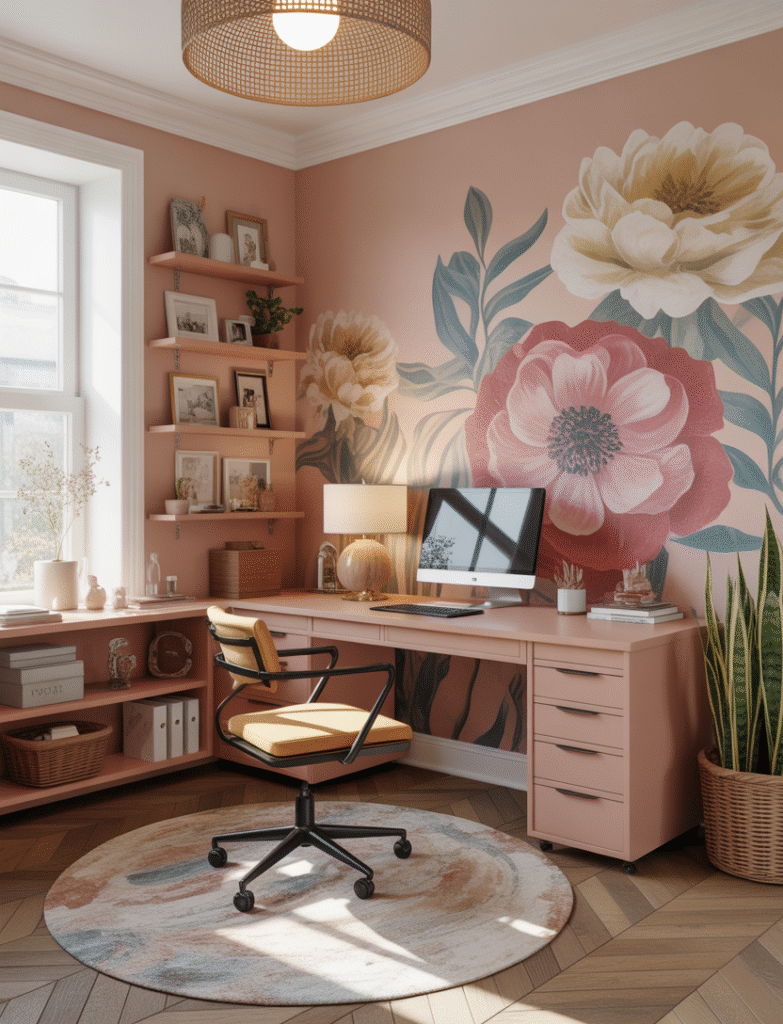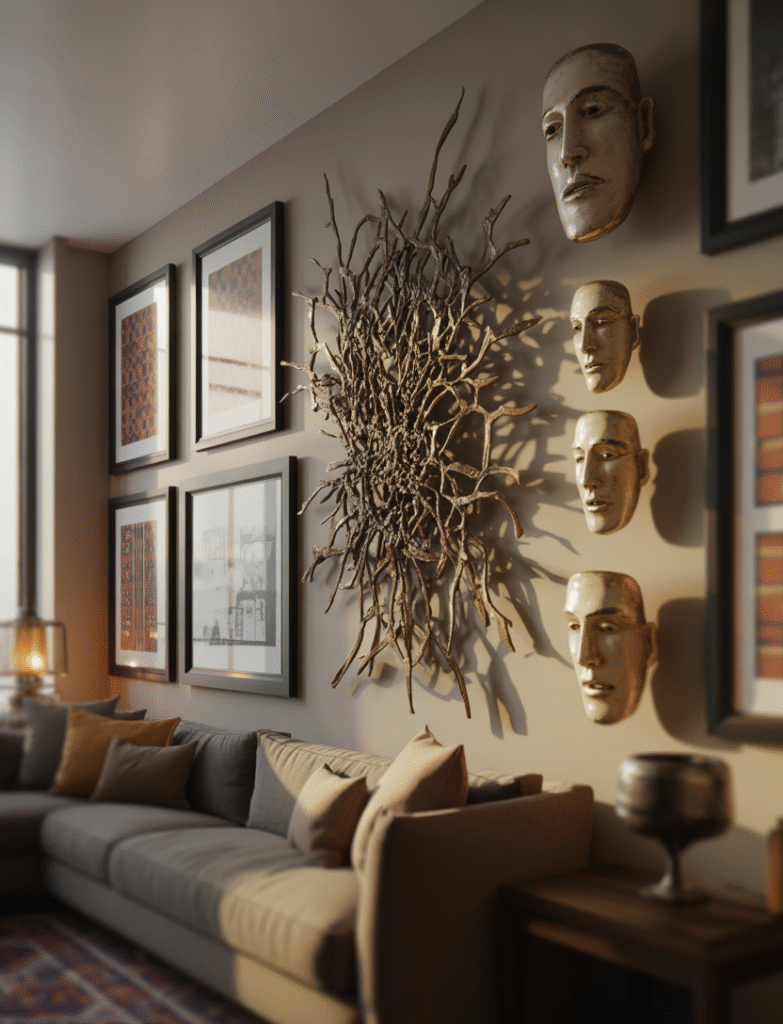Working underground doesn’t have to feel uninspired. A basement office can become one of the most productive and serene corners of your home — if designed thoughtfully. The challenge with a basement office with no windows isn’t just the absence of daylight; it’s the lack of visual cues that energize and connect us.
Through lighting, texture, proportion, and creative finishes, a windowless basement can transform into a calm, design-forward workspace. Here’s how to make your basement office bright, functional, and motivating — even without a single view outside.
Start With a Bright, Balanced Palette
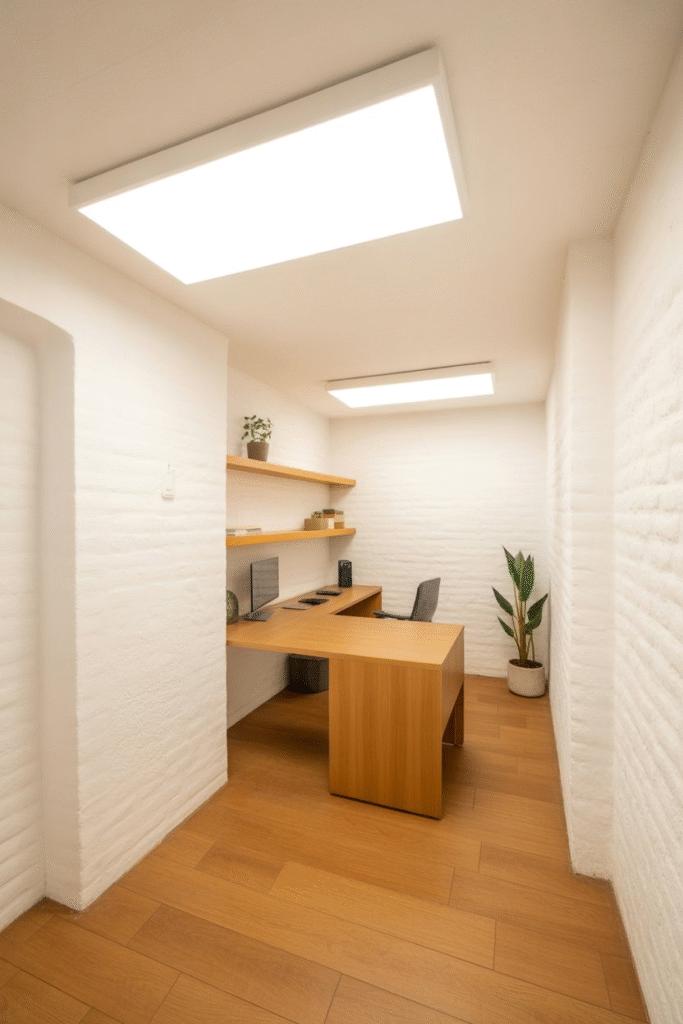
Color becomes your natural light substitute. Soft off-whites, pale taupe, warm greige, or pastel clay tones visually expand a closed-in space. The key is warmth: too stark, and the walls feel cold; too dark, and they close in.
- Choose eggshell or satin finishes to reflect light.
- Use one continuous tone for walls, trim, and ceiling to remove visual breaks.
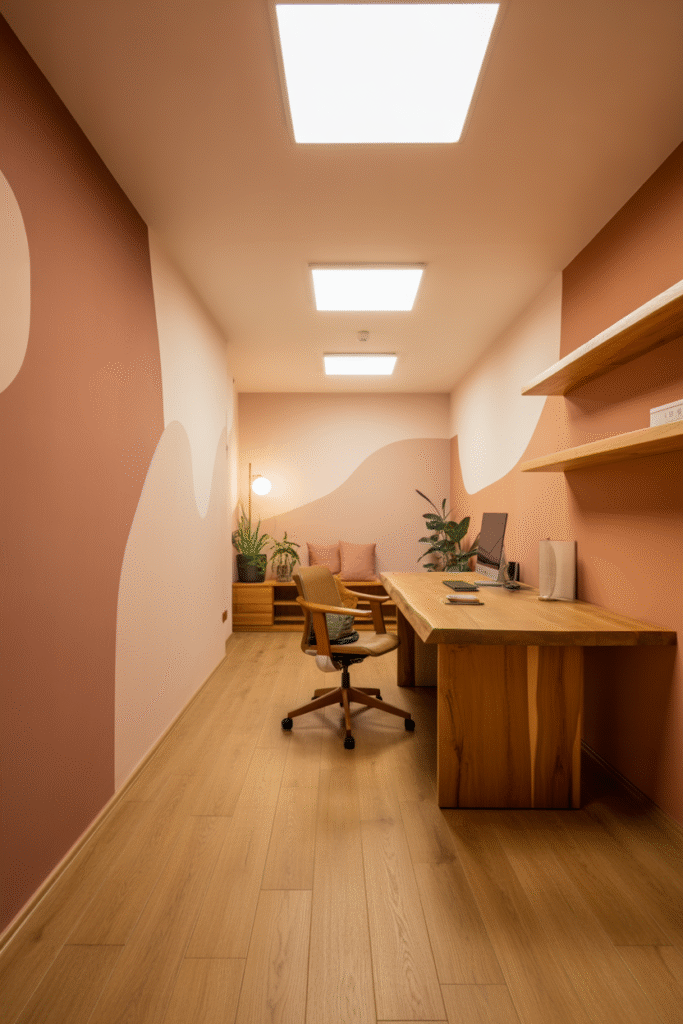
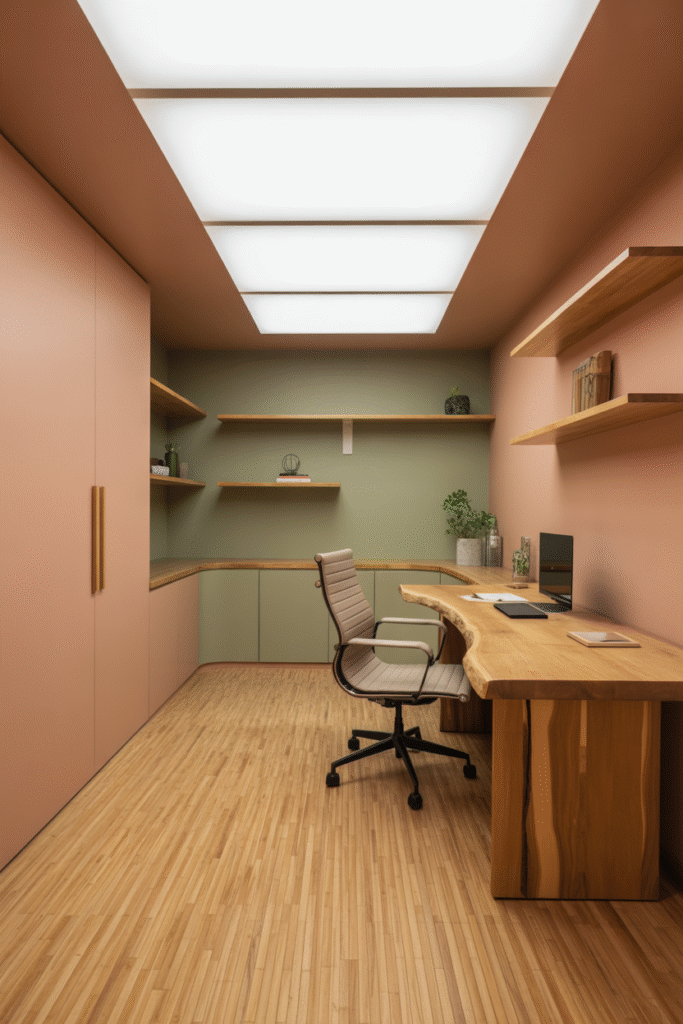
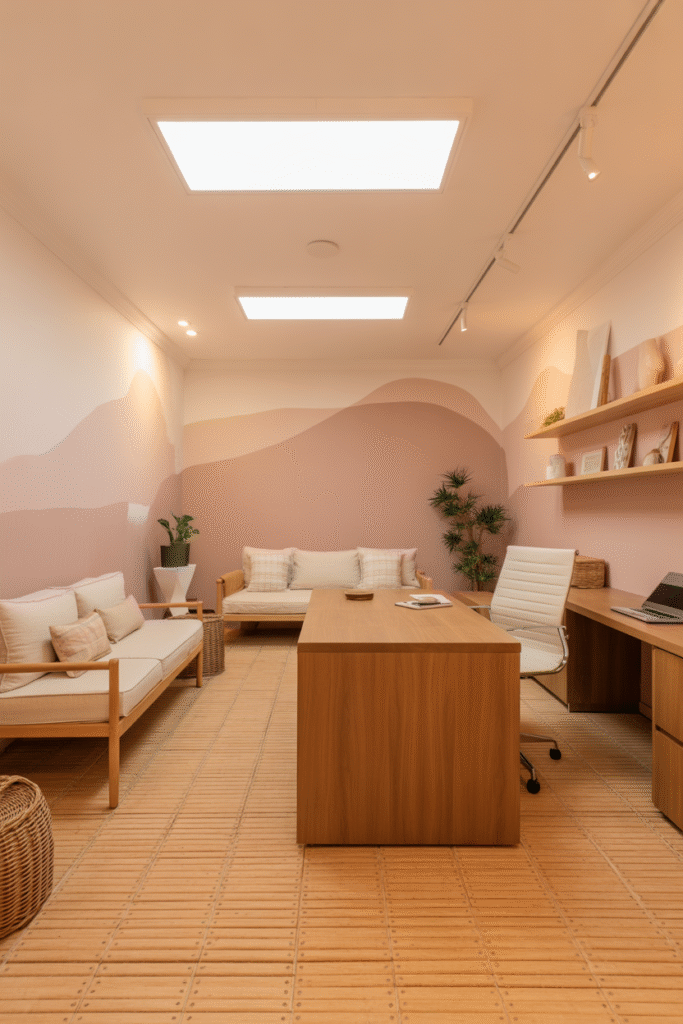
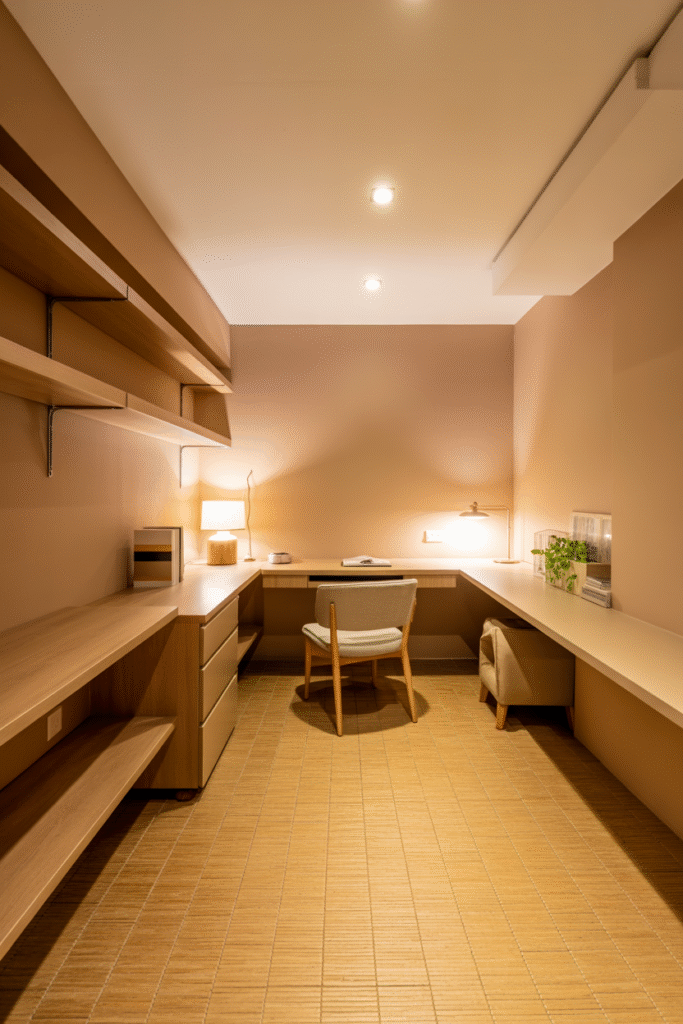
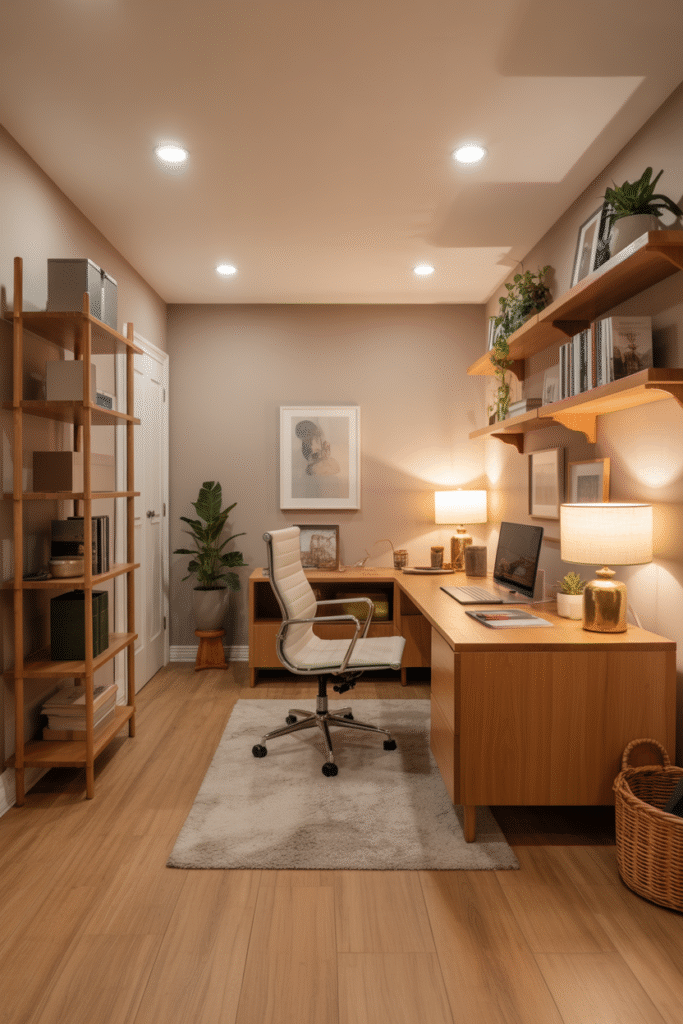
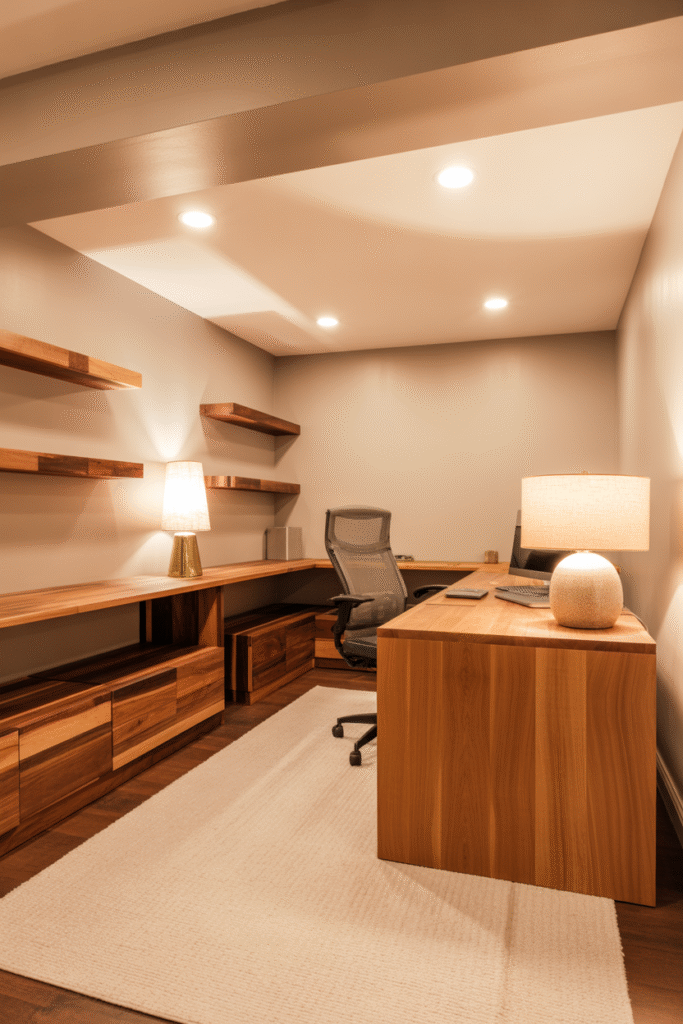
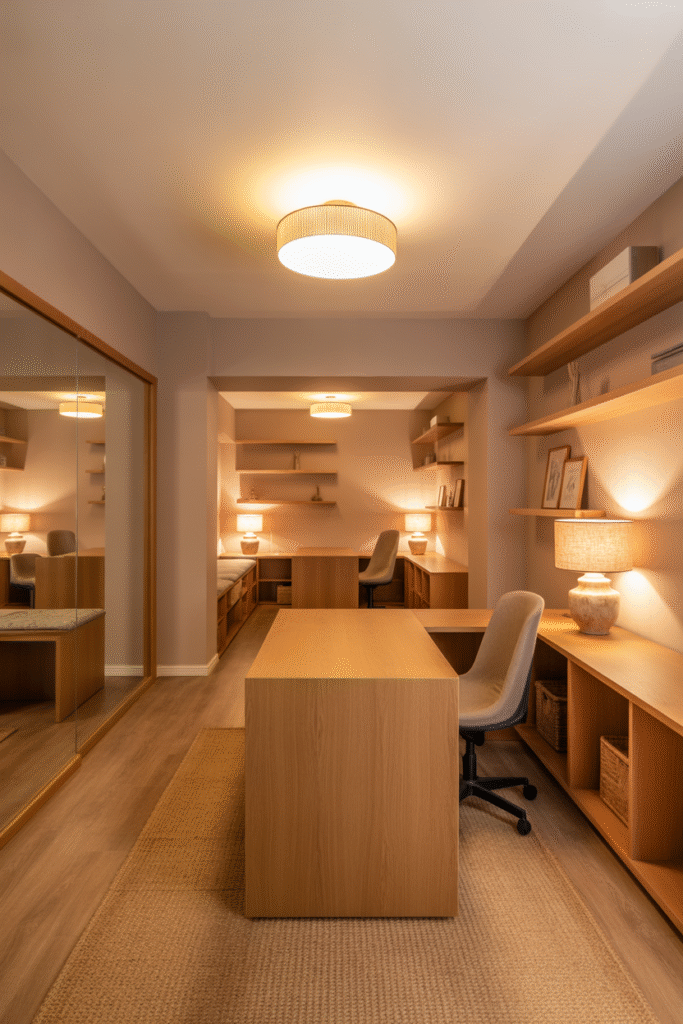
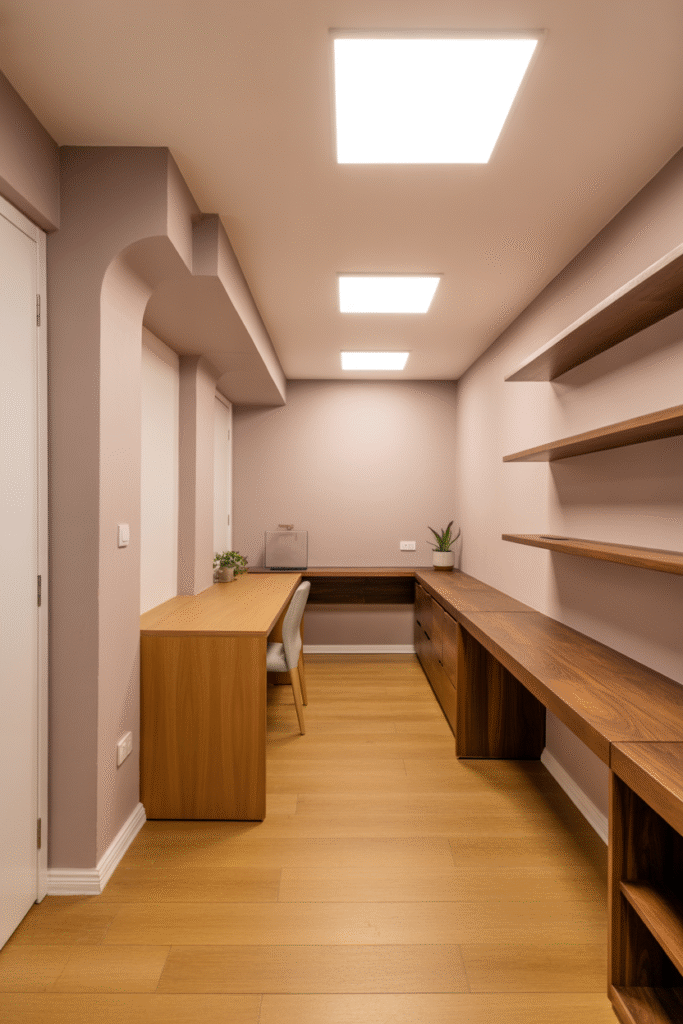
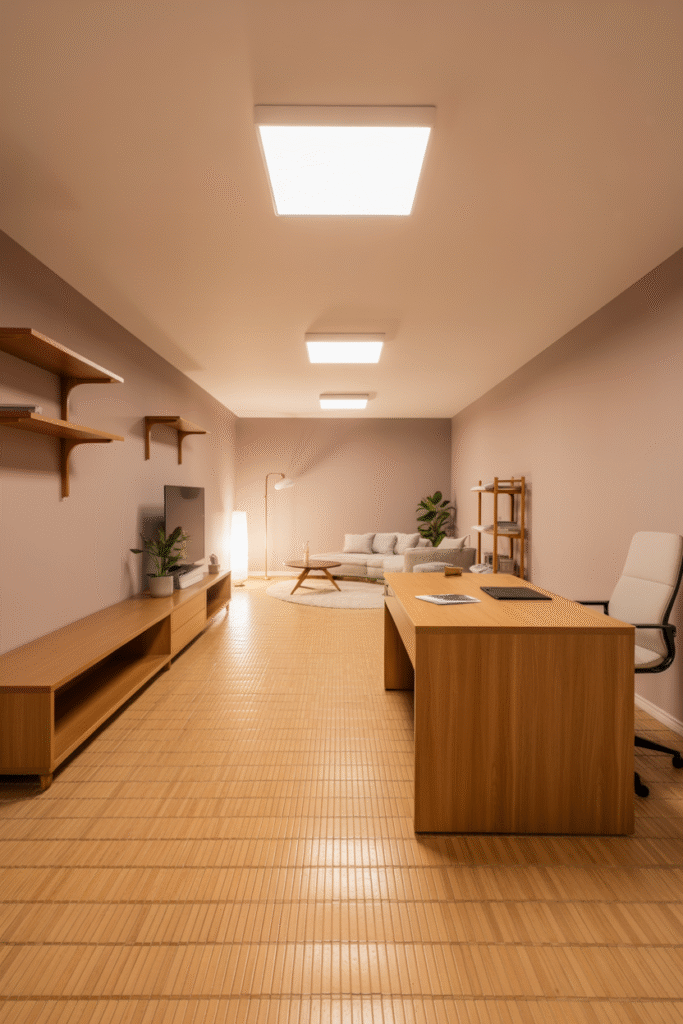
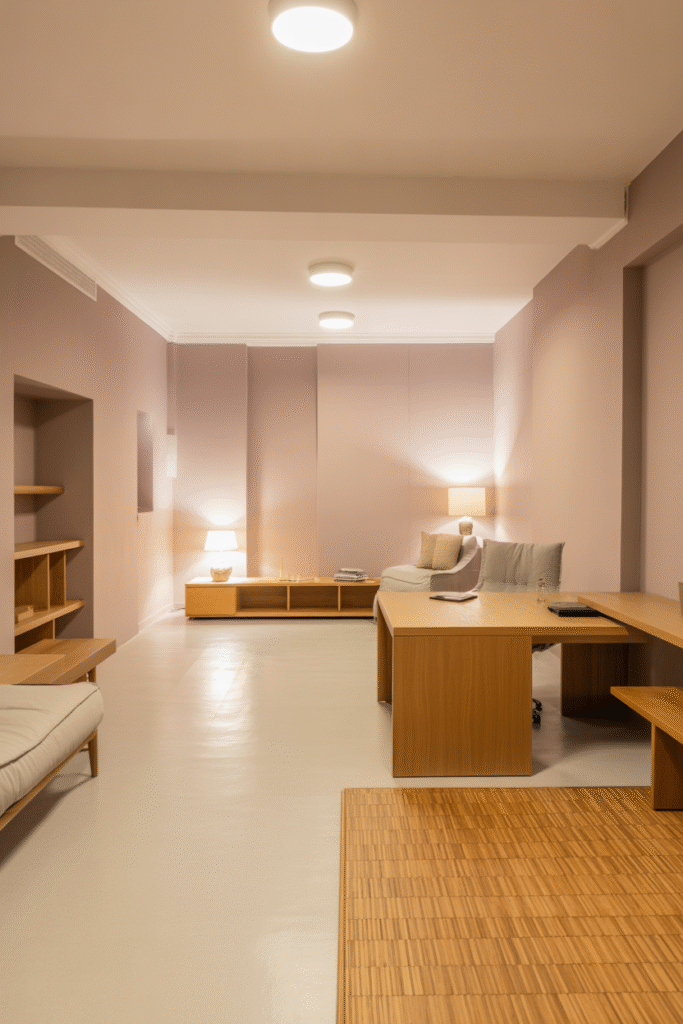
Layer Artificial Light Like Natural Light
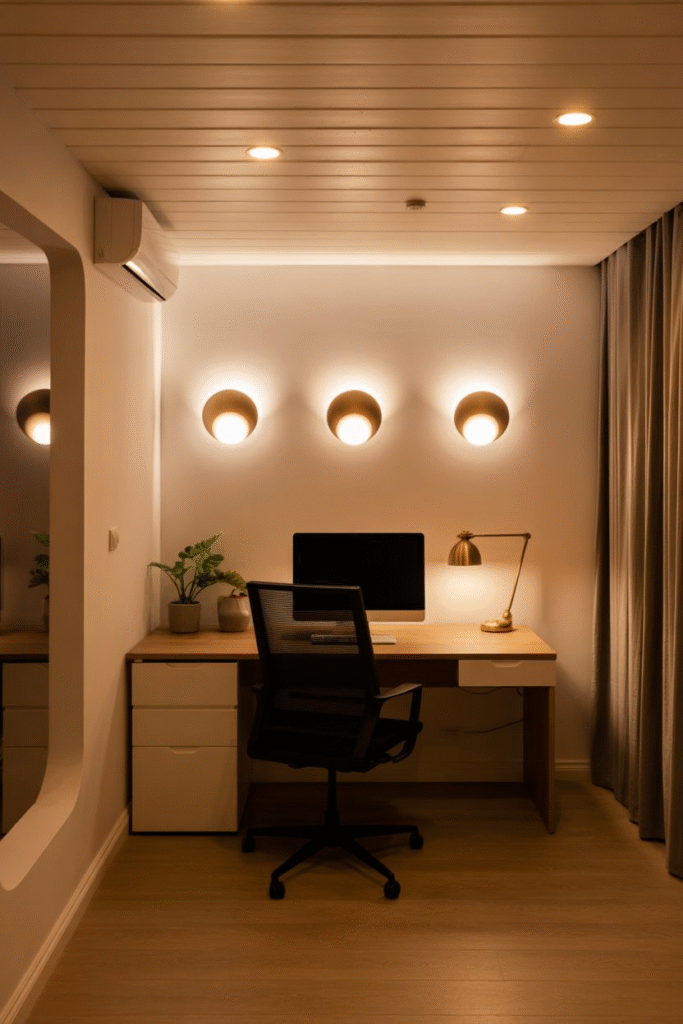
Without sunlight, you must create it. Blend overhead ambient light with mid-level sconces and localized task lighting. Layer warm LEDs across zones so shadows are soft and flattering, not harsh.
- Use 2700–3000K bulbs for a daylight effect.
- Avoid recessed lights alone — pair with diffused wall washers or LED cove lights for dimension.
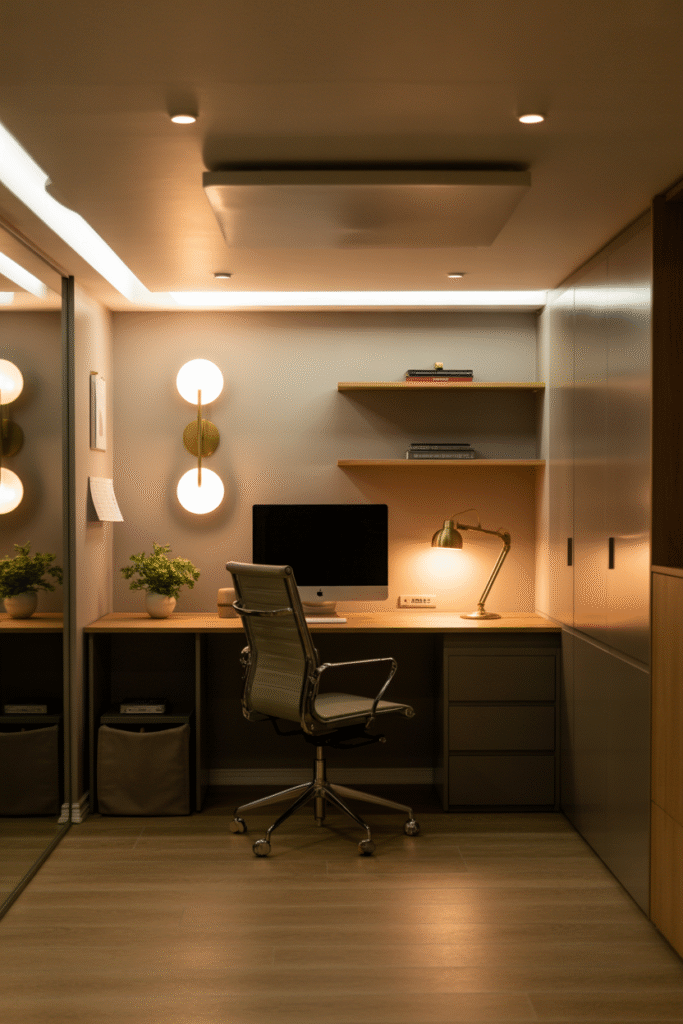
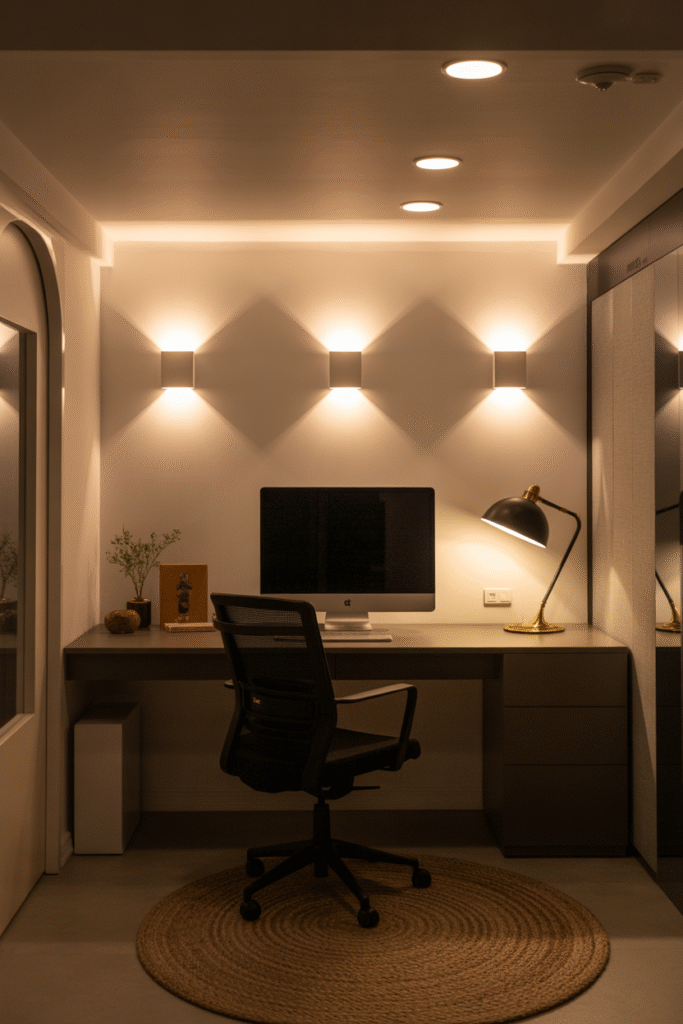
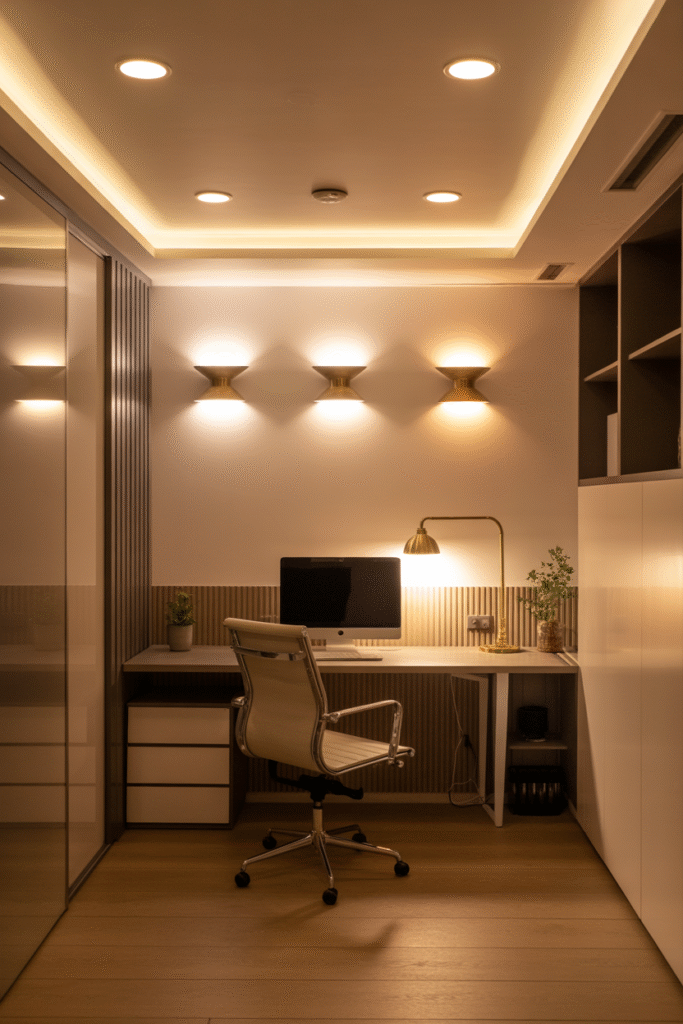
Build a Focal Point
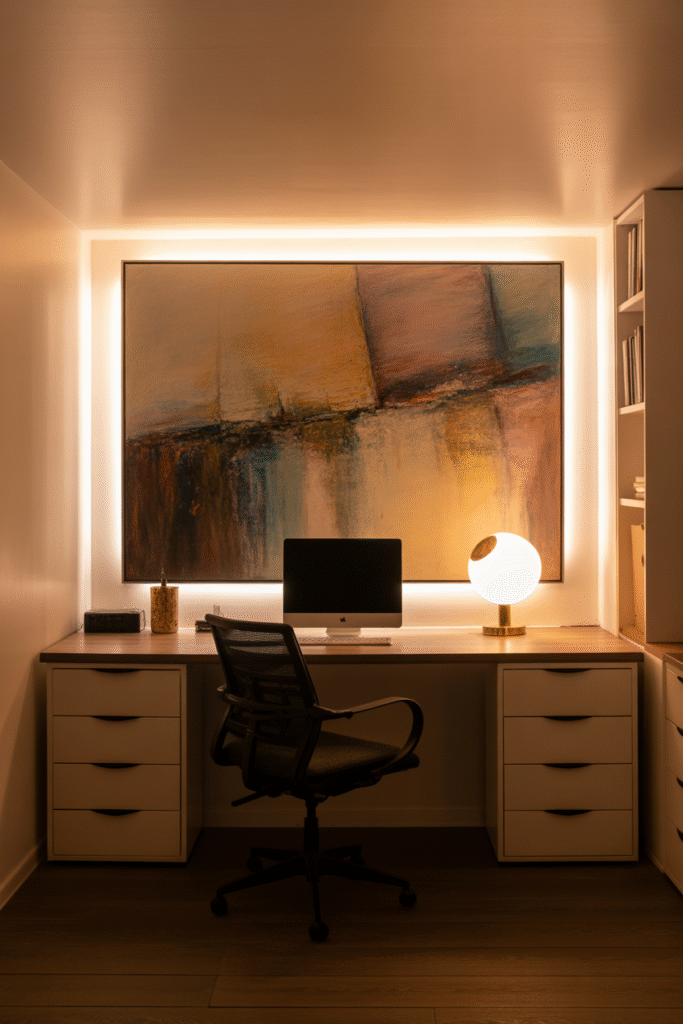
Basement offices often feel disoriented without a window view. Anchor the room with a single focal point: a large art piece, backlit shelving, or a textured accent wall. It gives the eye direction and makes the room feel intentional.
Consider a matte mural or abstract artwork positioned behind your desk to mimic a landscape’s depth.
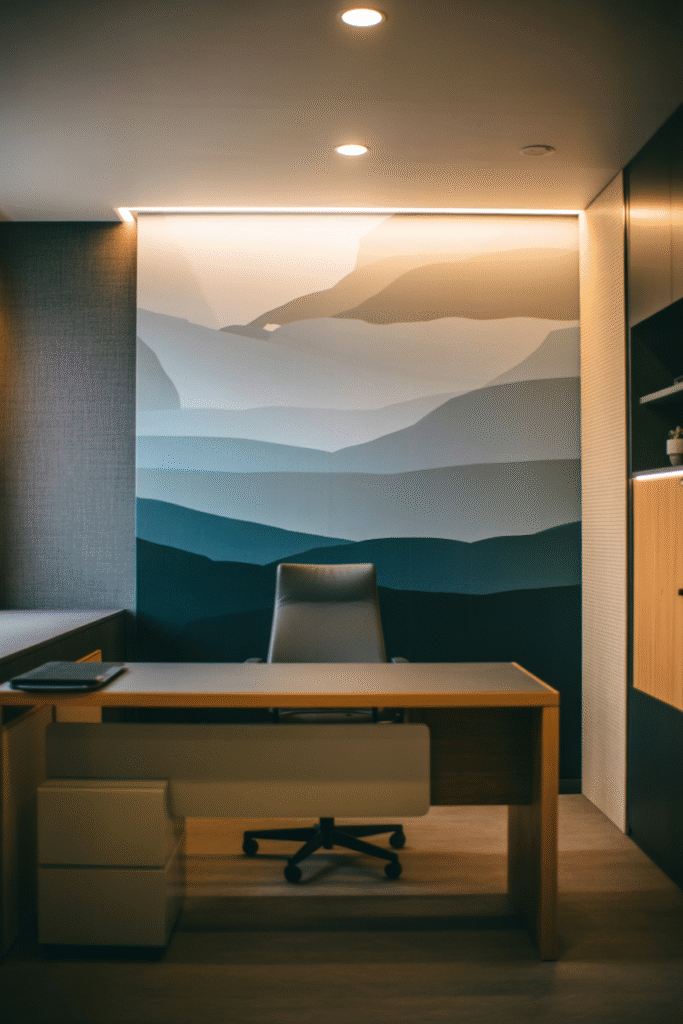
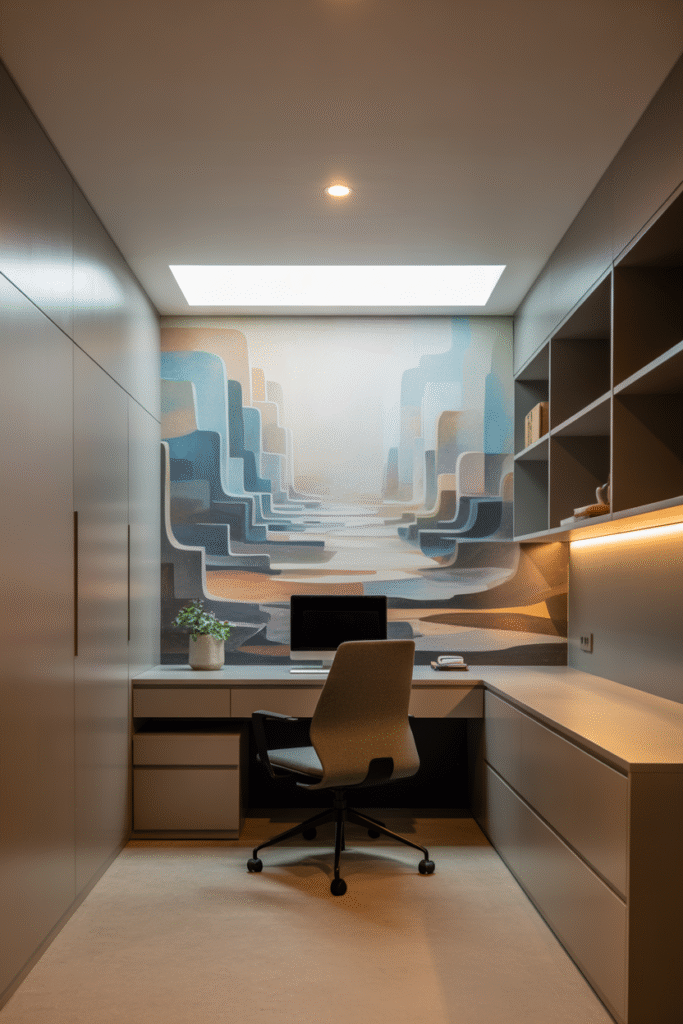
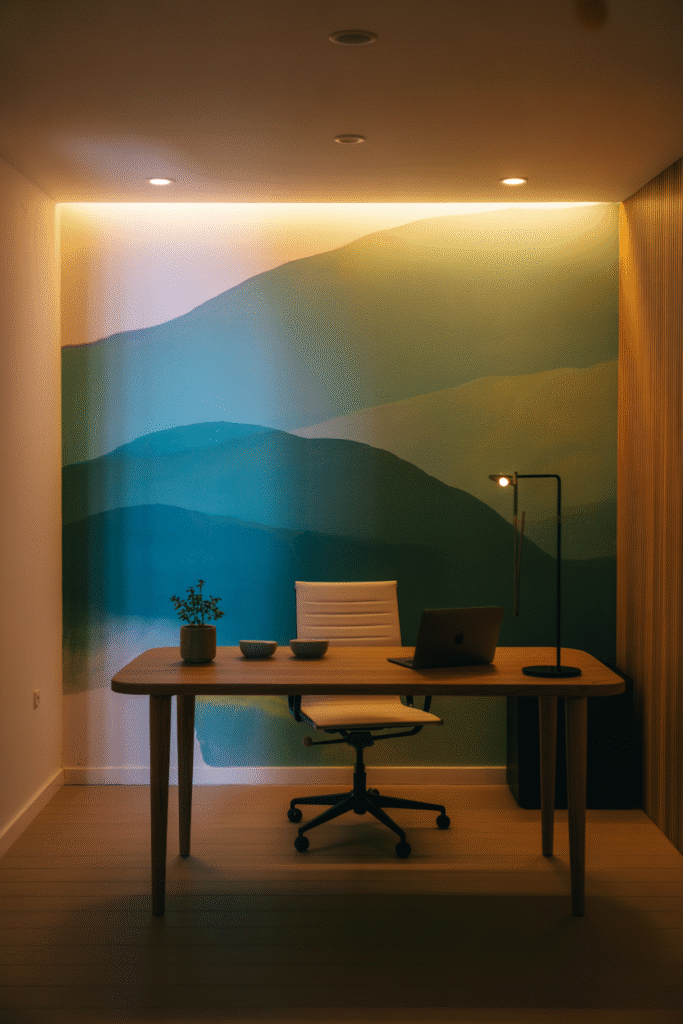
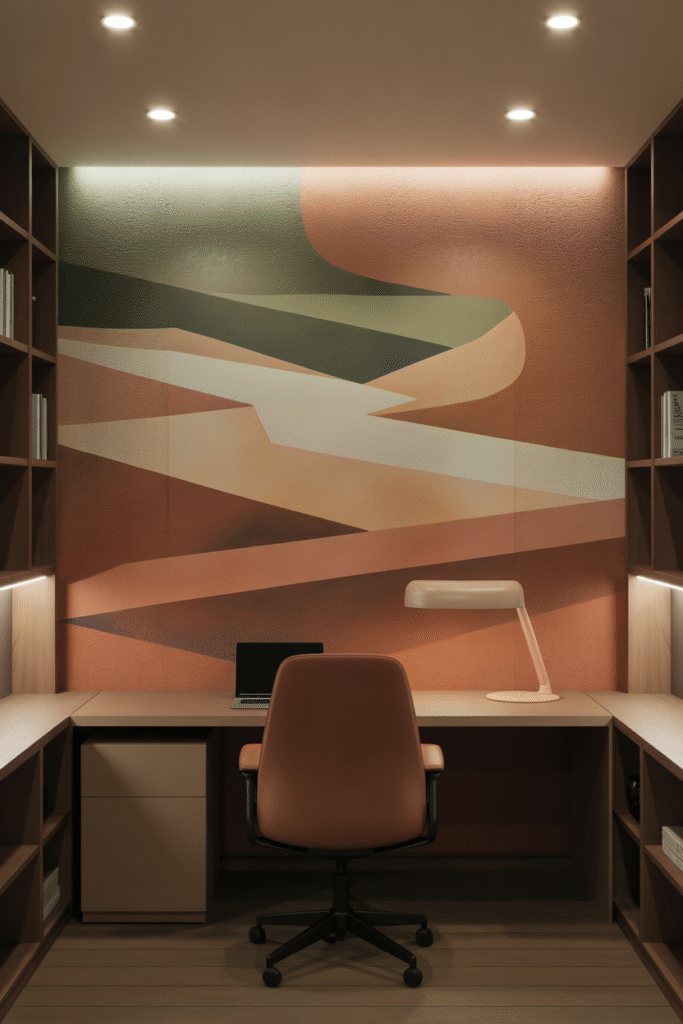
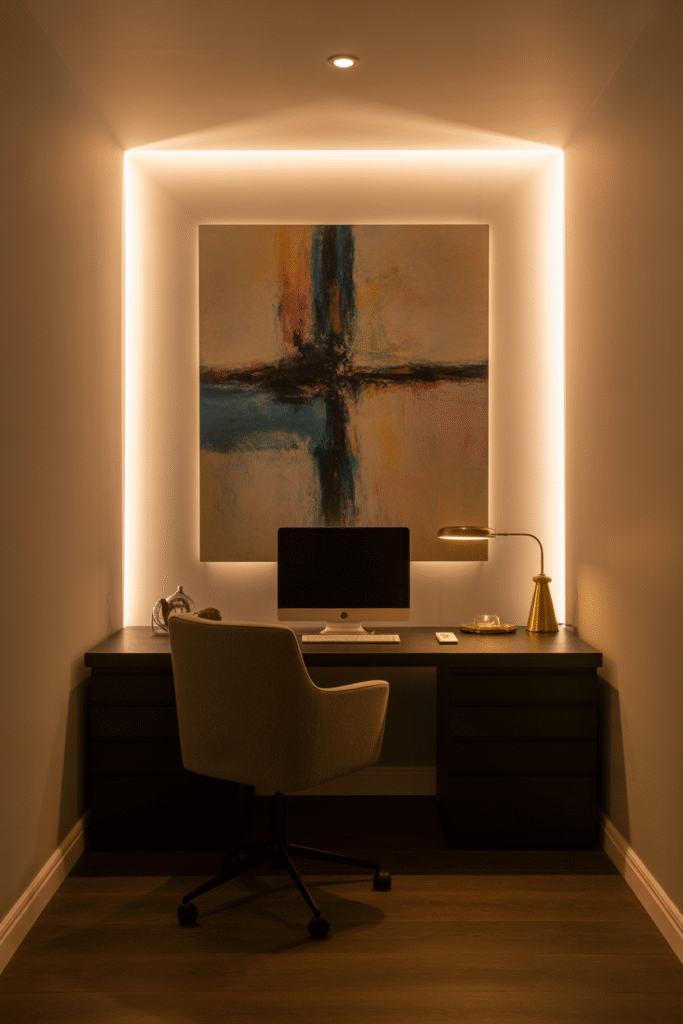
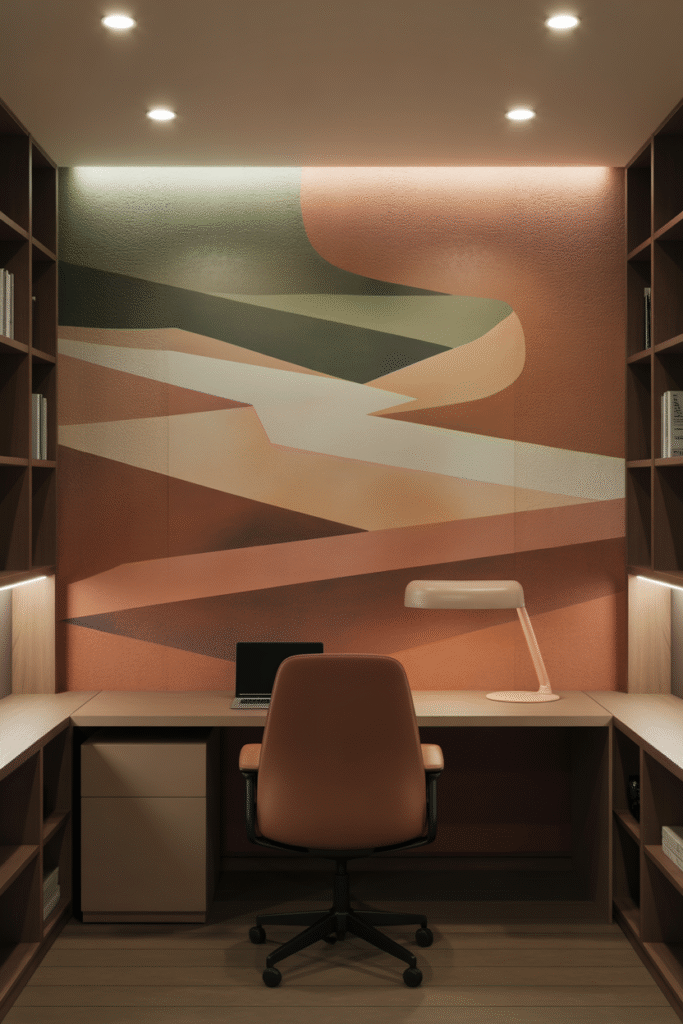
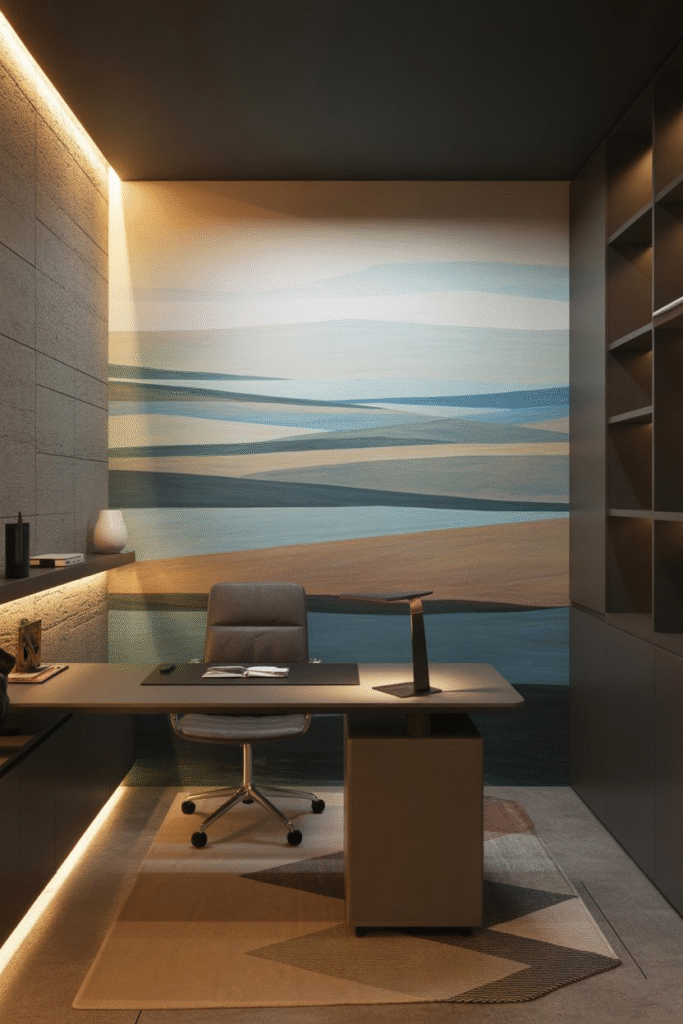
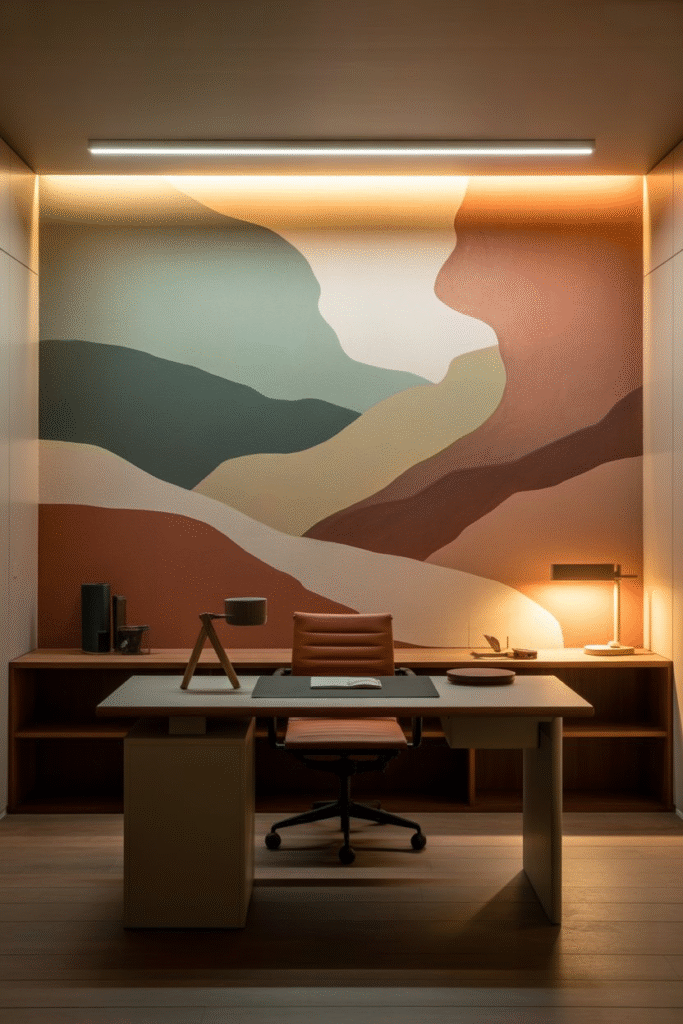
Use Reflective Surfaces Wisely
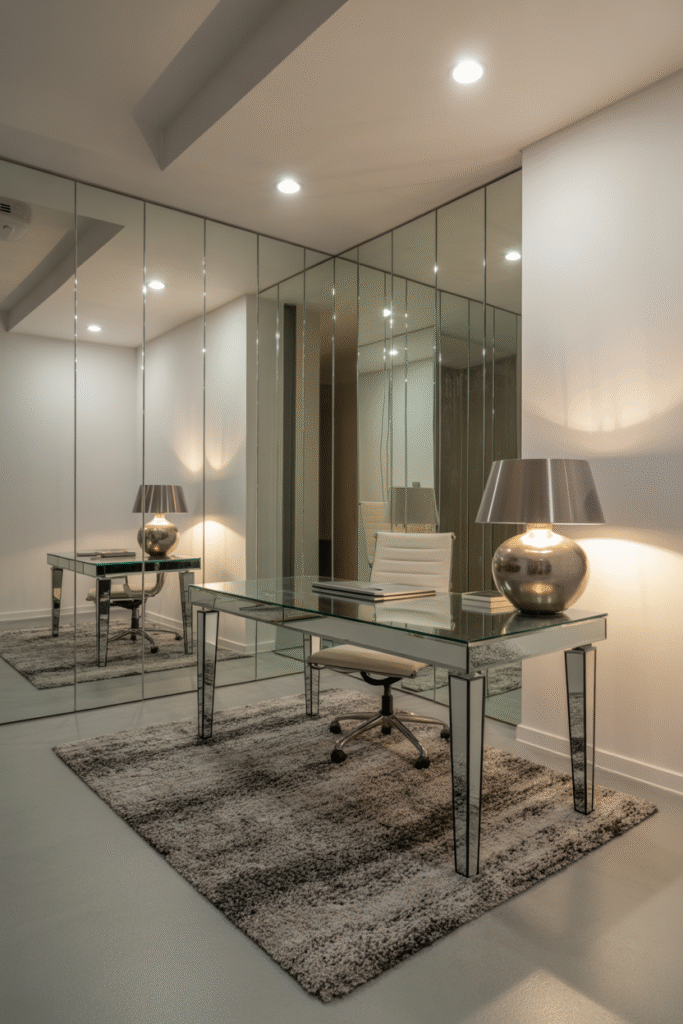
Gloss, mirror, and metal amplify brightness. Frame mirrors opposite light sources to simulate depth. Choose a lacquered desk, brushed metal lamp bases, or even glass decor elements to bounce light across the room.
Keep reflective elements subtle — too much gloss can make the space feel sterile.
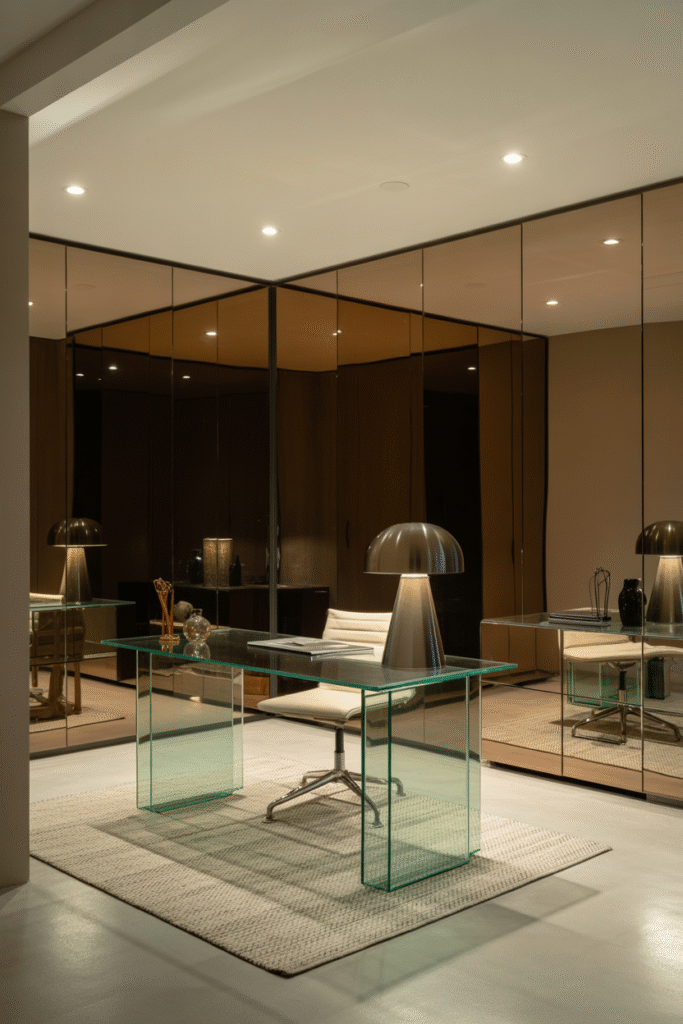
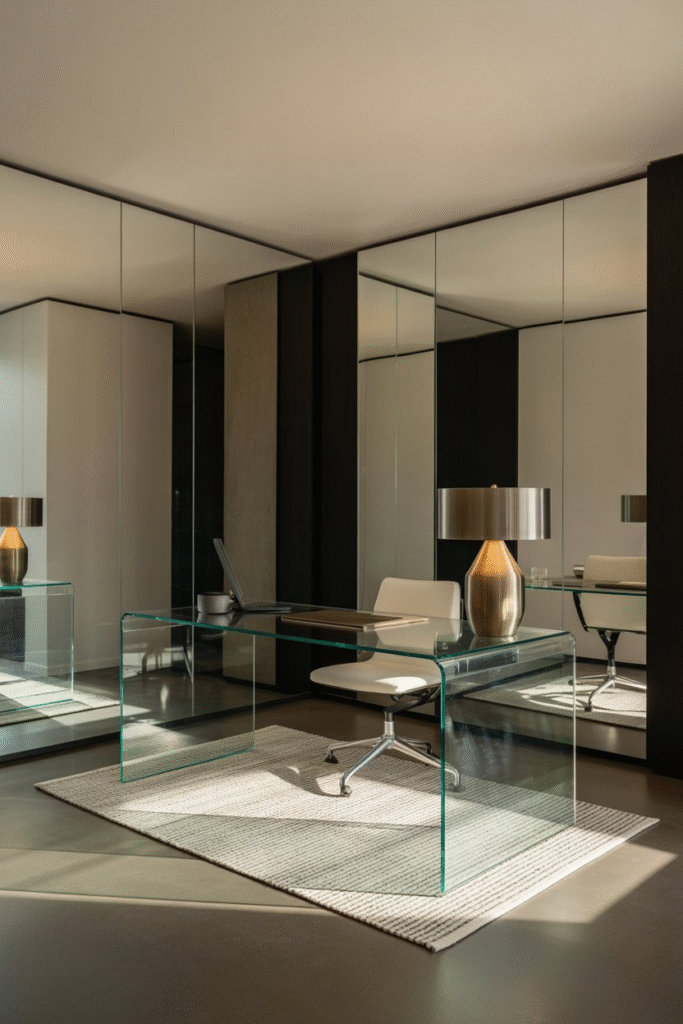
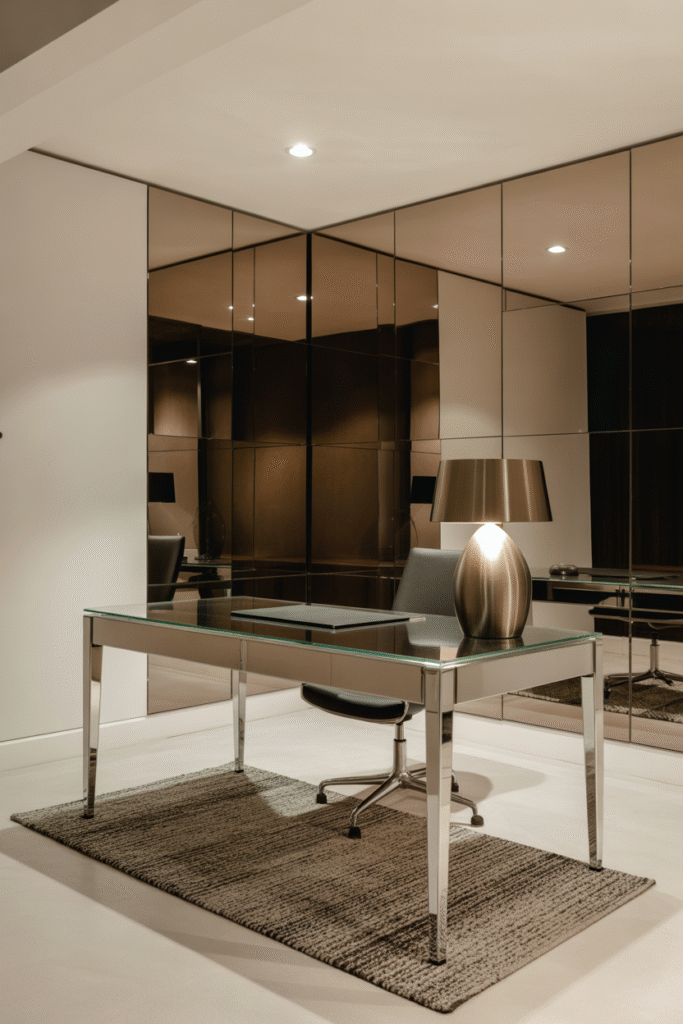
Bring the Outdoors In
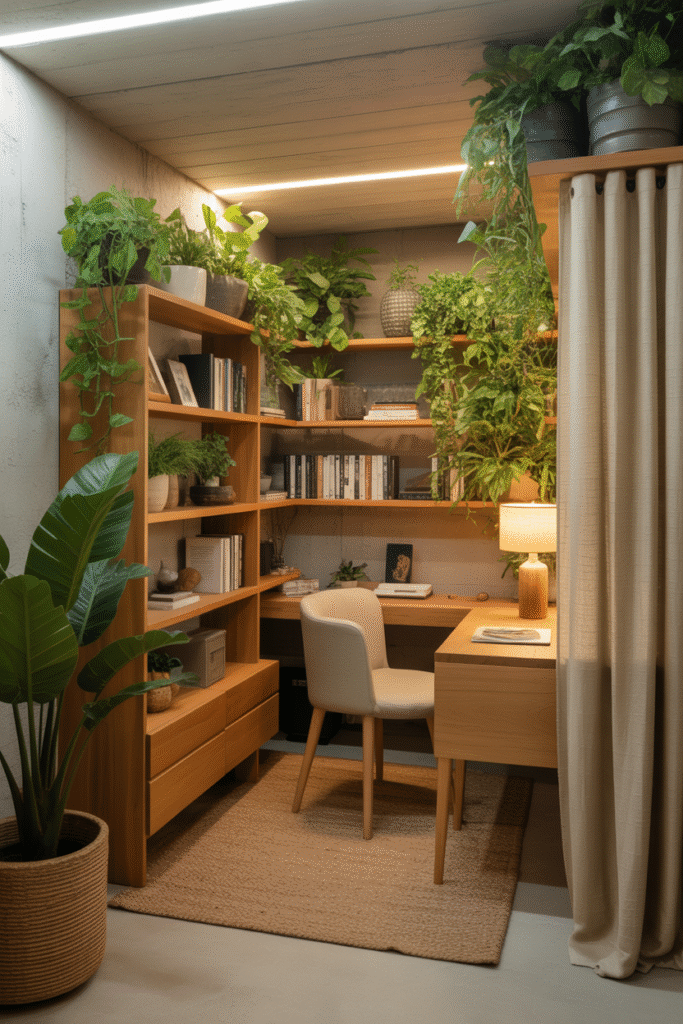
You may not have a window, but you can evoke nature. Incorporate greenery with large potted plants like peace lilies or snake plants that thrive in low light. If maintenance is a concern, use lifelike faux plants in textured planters.
Layer natural textures — rattan baskets, wooden shelves, and linen upholstery — to make the space feel alive.
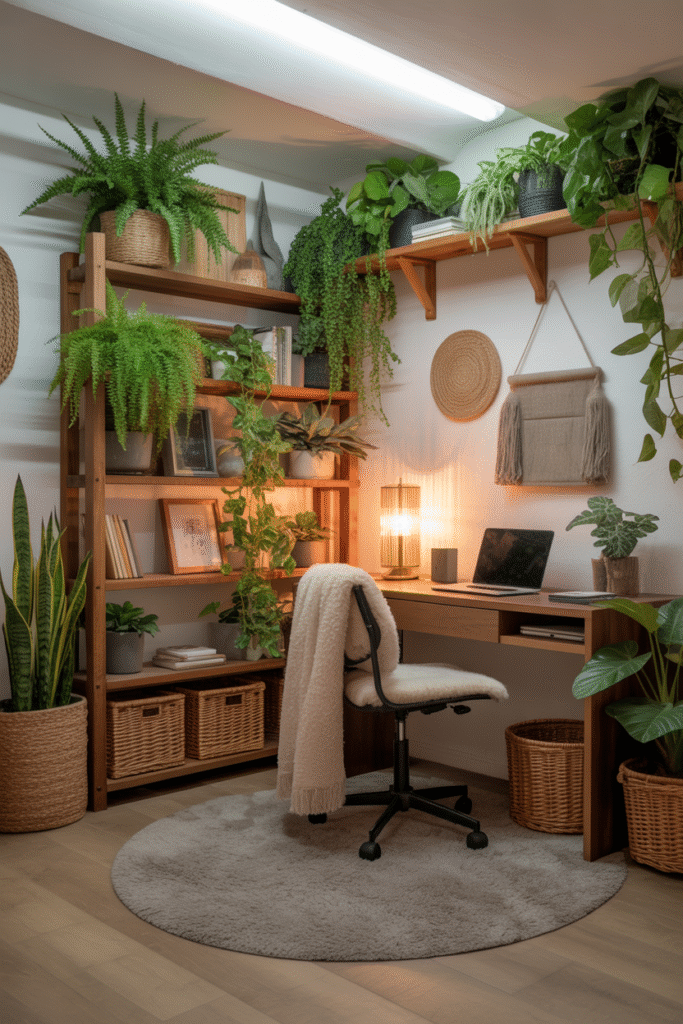
Create Visual “Windows”
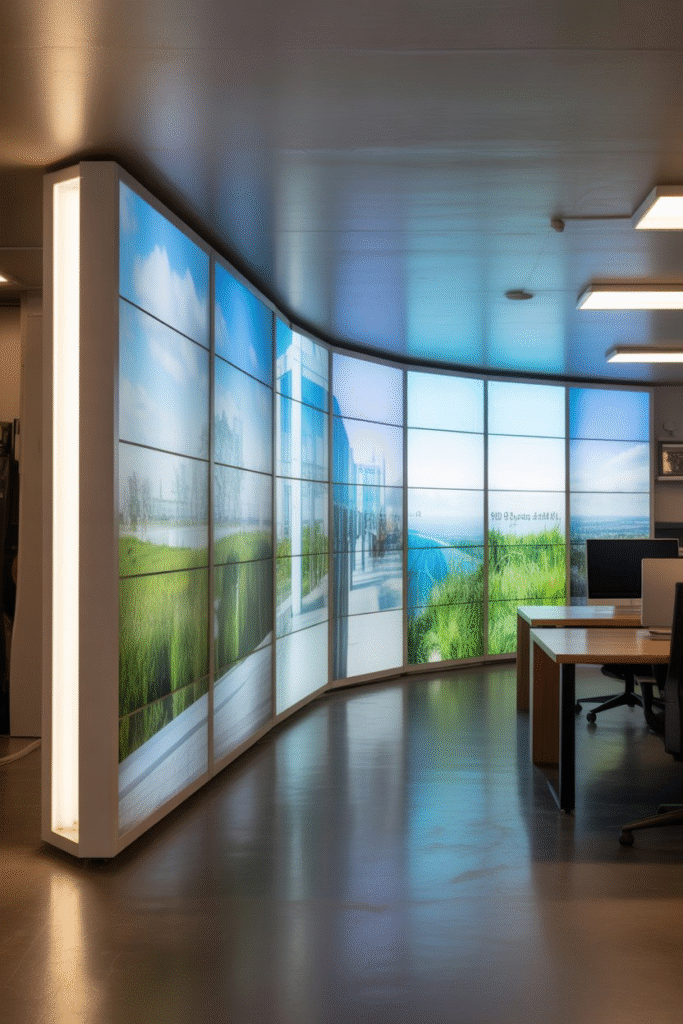
Simulate depth through design. Add framed artwork of landscapes or custom wall panels with LED backlighting to mimic daylight through blinds. Even a soft, gradient-toned abstract print can suggest a horizon.
This optical illusion tricks the eye into feeling openness where there is none.
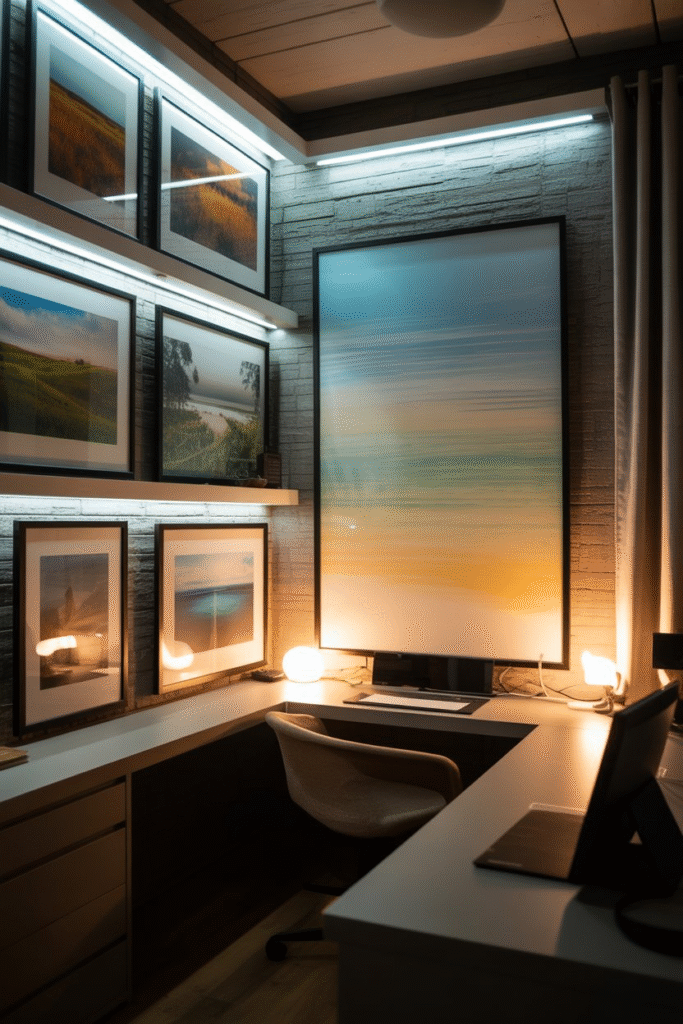
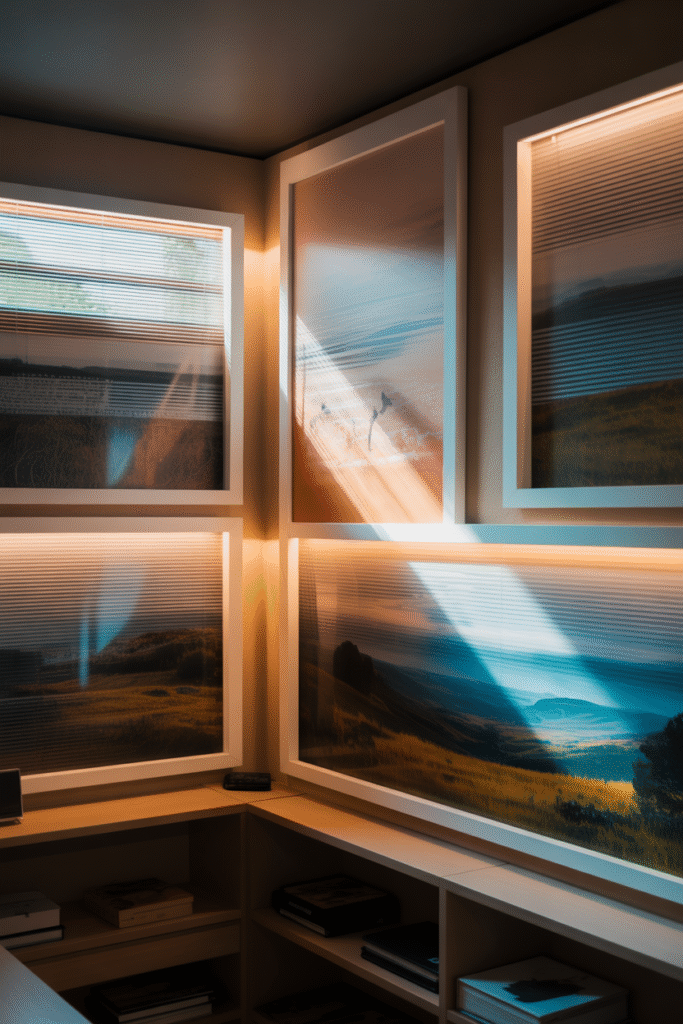
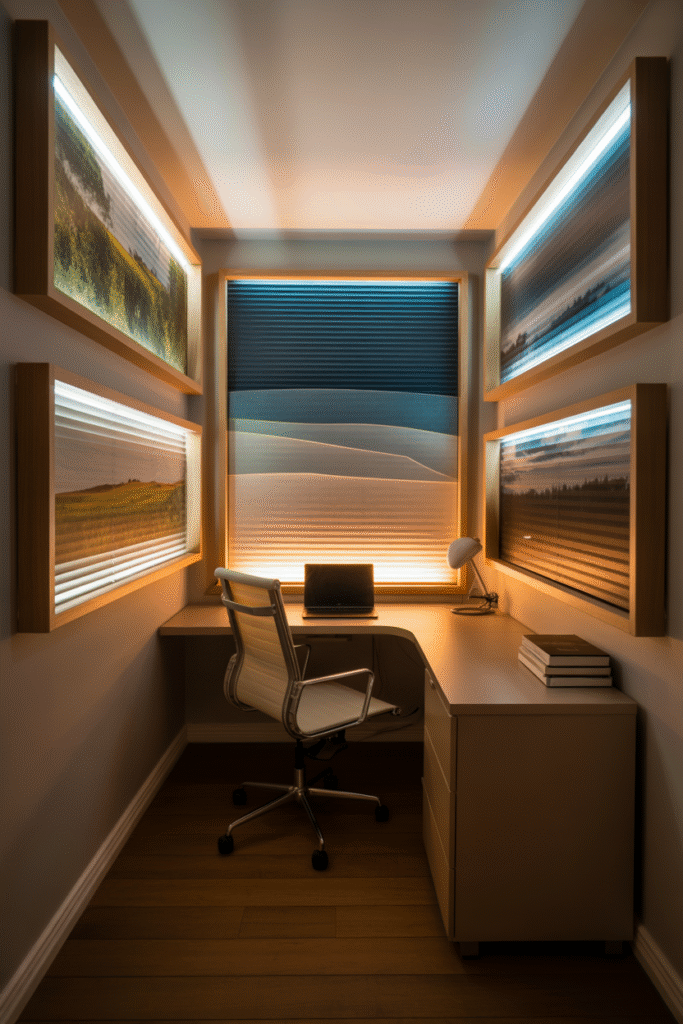
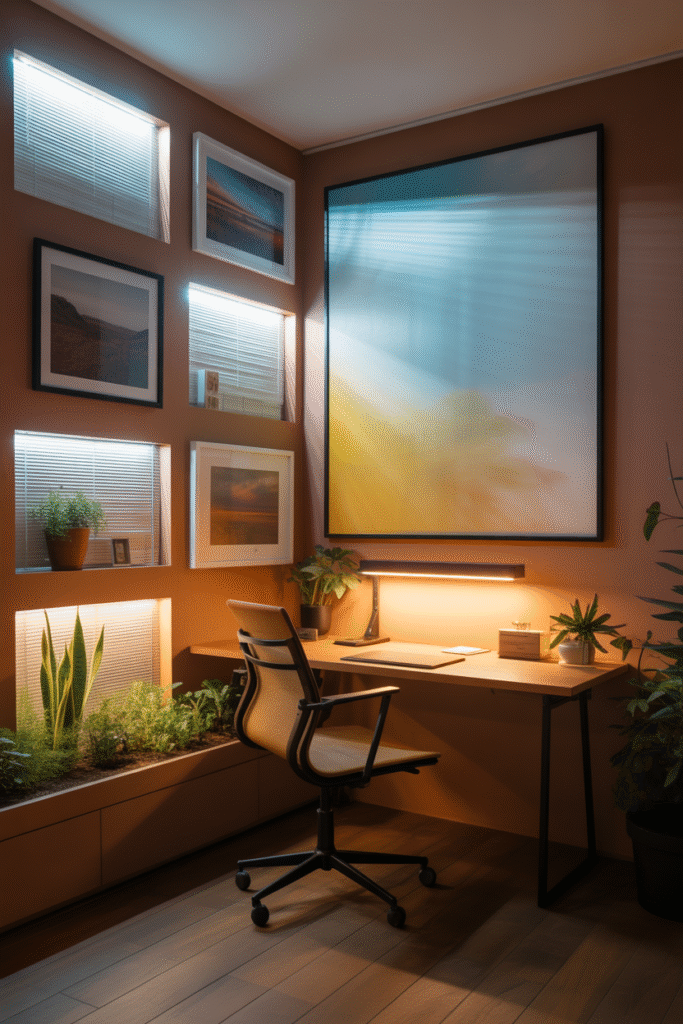
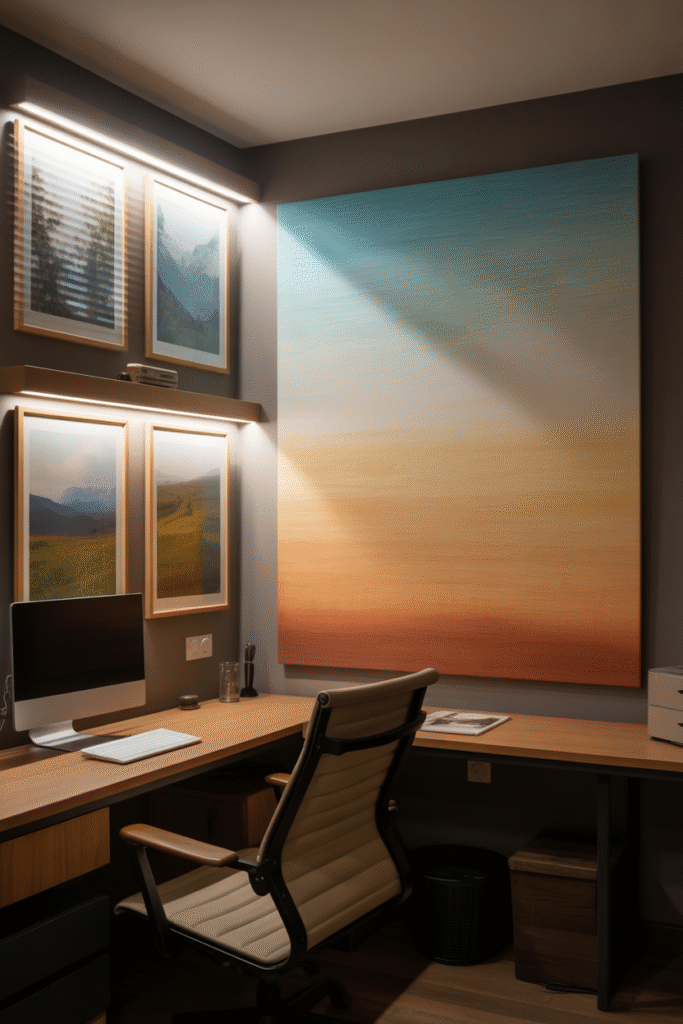
Choose Low-Profile Furniture
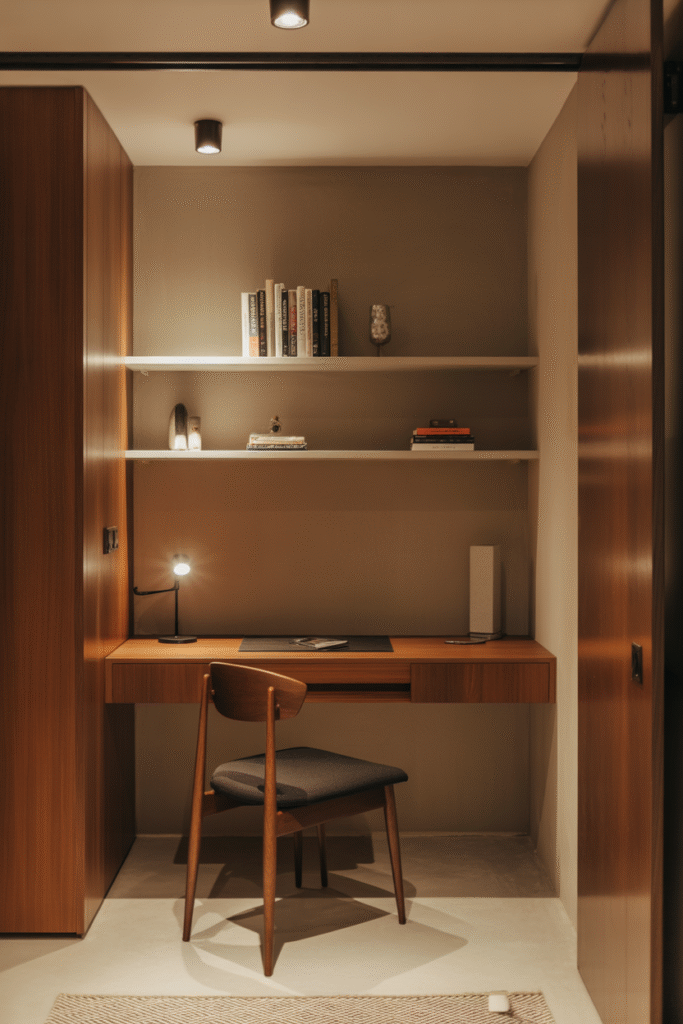
Basements often have lower ceilings; tall furniture can feel overwhelming. Select low, wide pieces — a floating desk, modular drawers, or open shelving — to maintain vertical space.
Rounded corners and streamlined legs help air circulate visually, preventing heaviness.
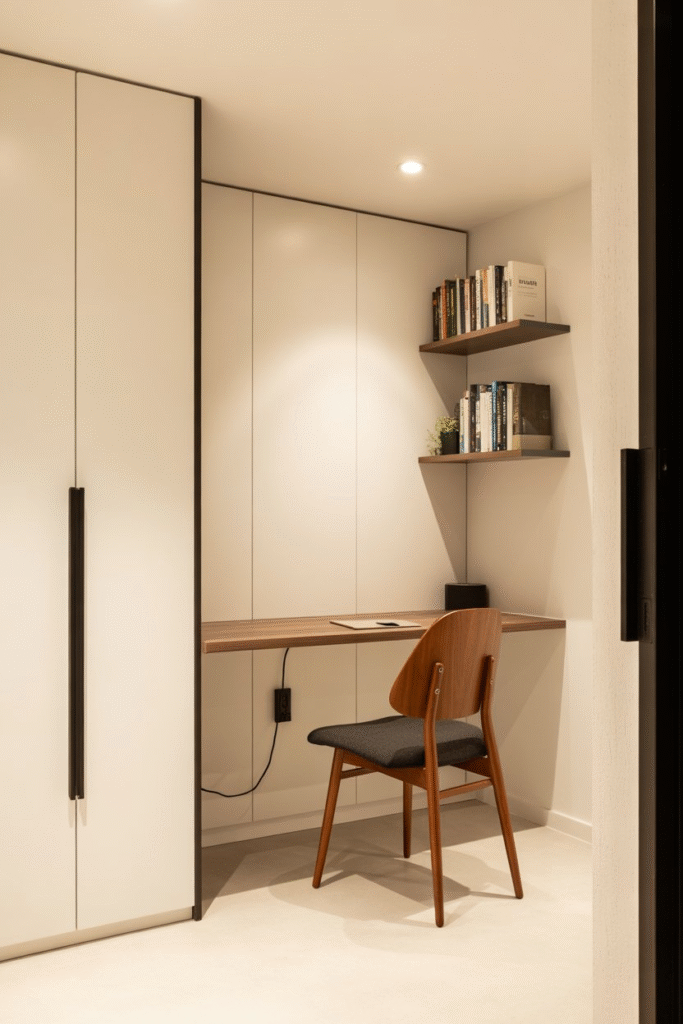
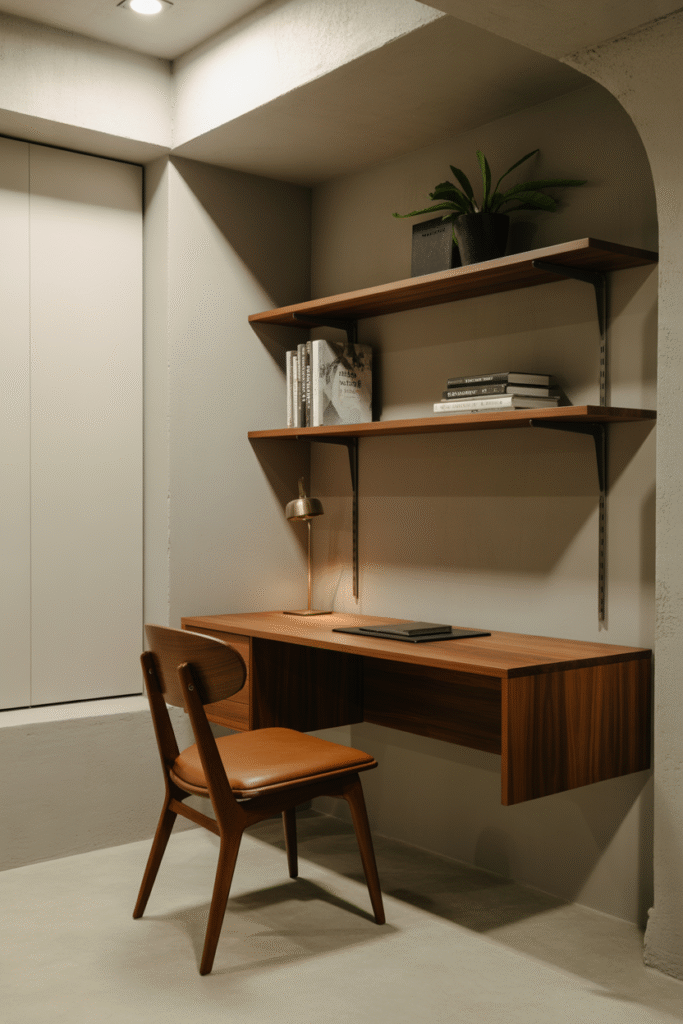
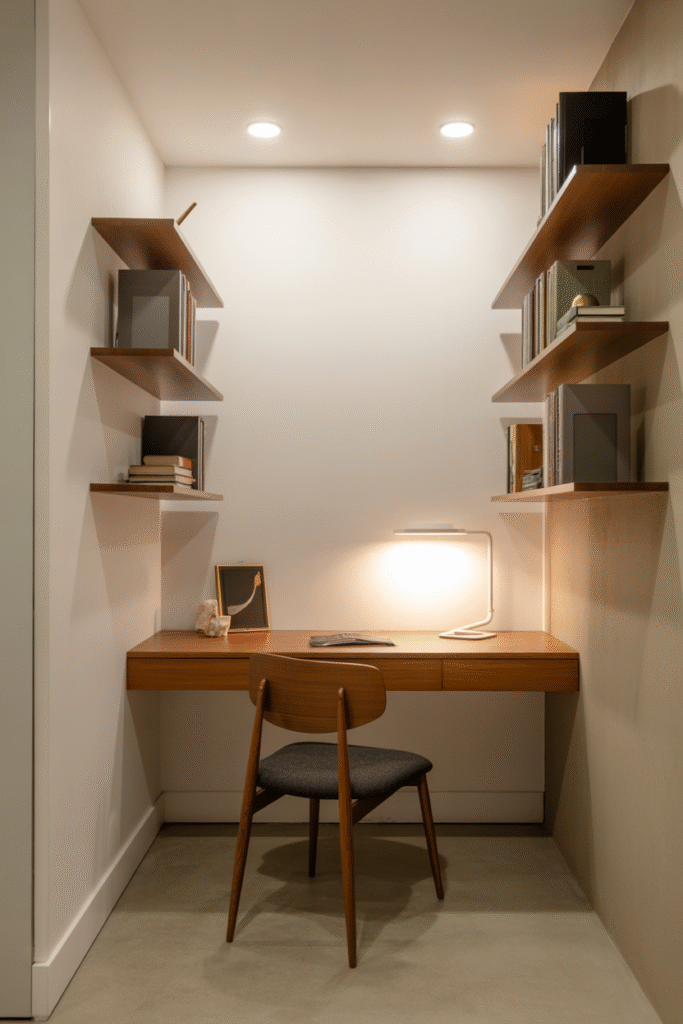
Integrate Built-In Storage
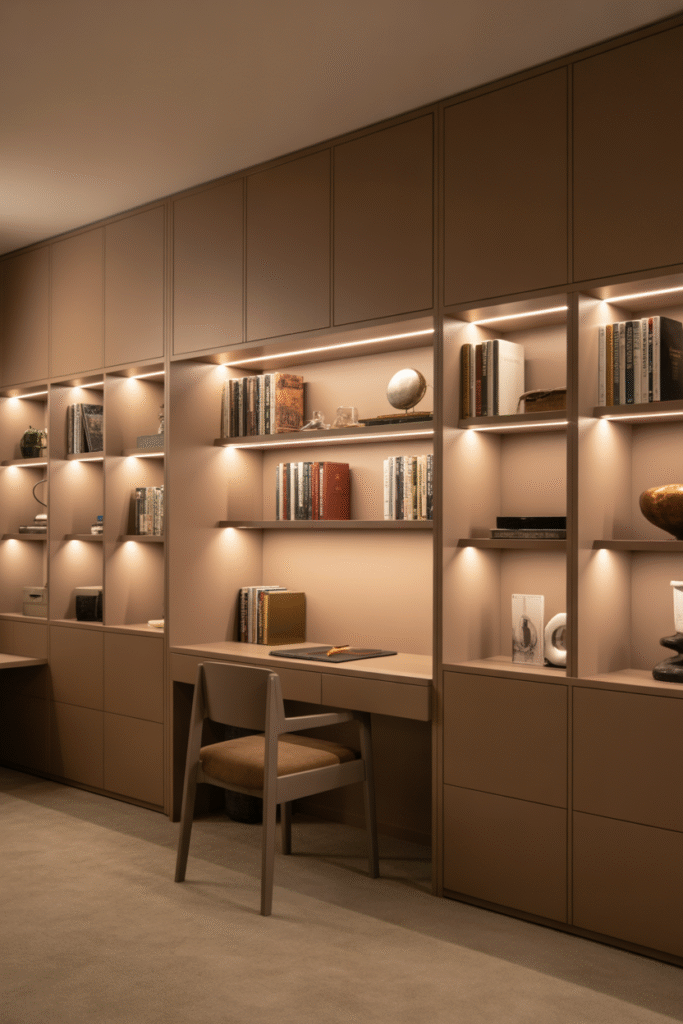
Clutter quickly shrinks small spaces. Wall-to-wall built-ins keep supplies and tech organized while maintaining visual simplicity. Use matte cabinetry that blends with the wall tone for a seamless effect.
Integrating lighting under shelves or inside cabinets adds functionality without visual noise.
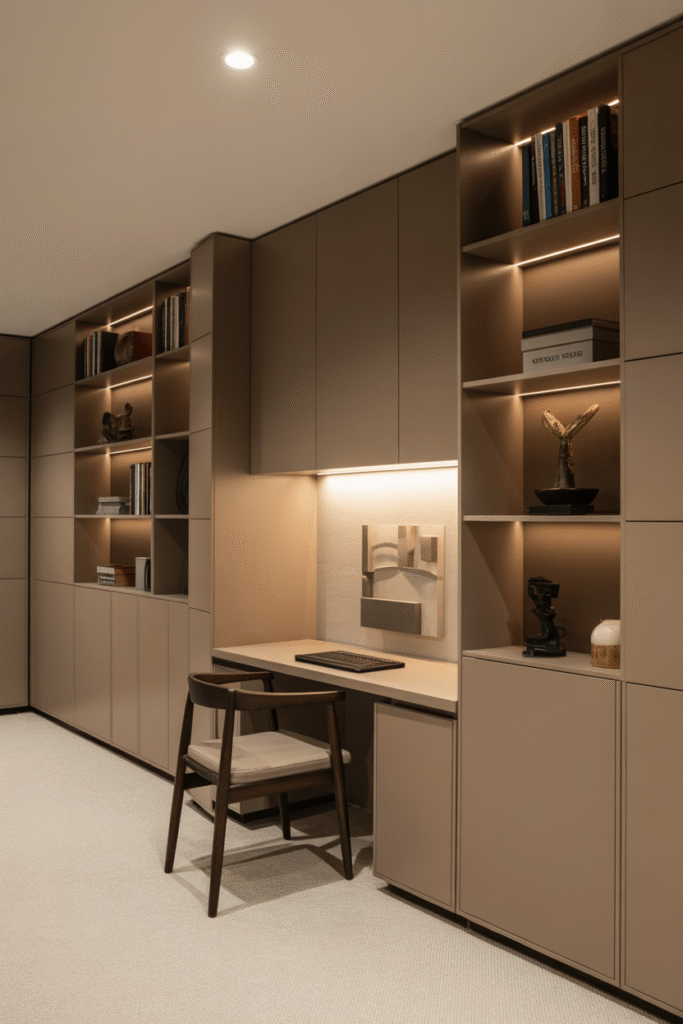
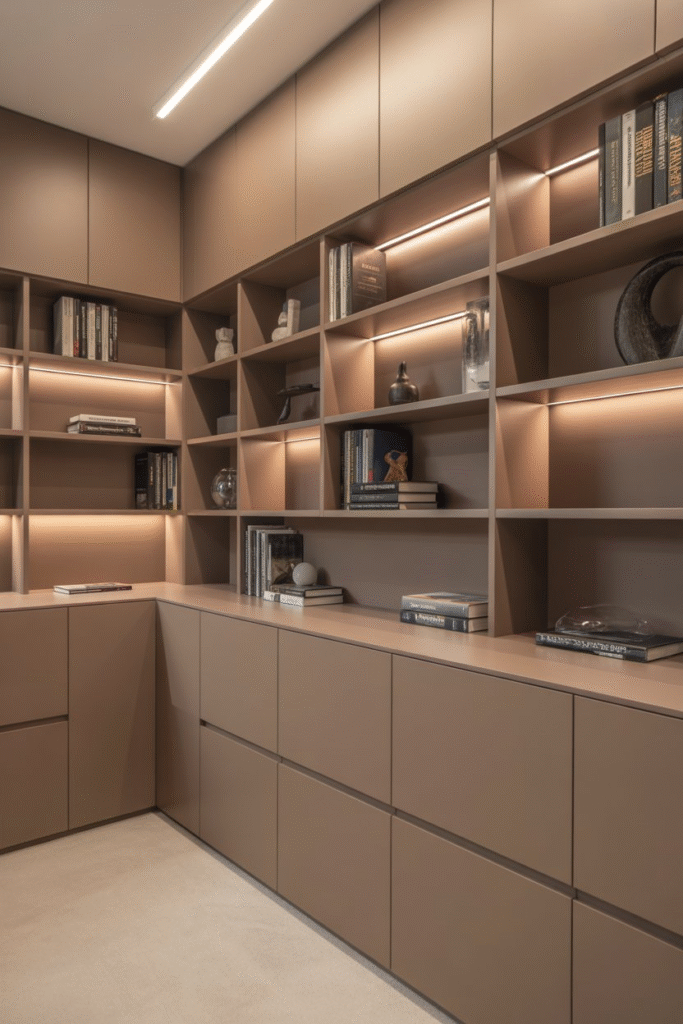
Add Acoustic Softness
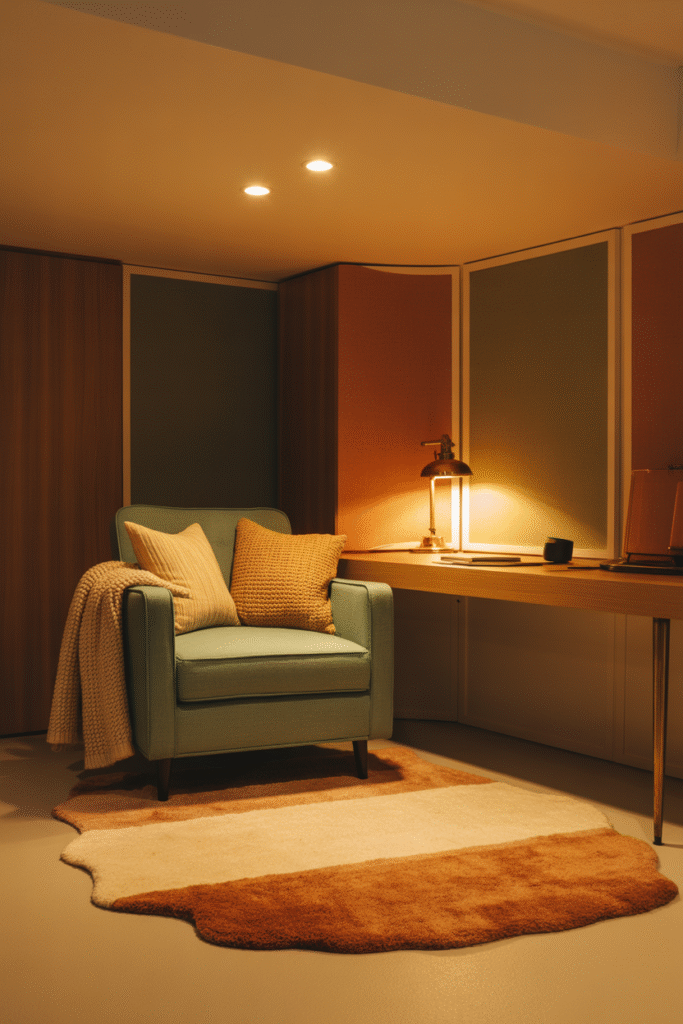
Basements echo easily. Layer rugs, upholstered chairs, and curtains to soften sound and create calm. Choose textiles in subtle patterns or tonal layering that add character without clutter.
A dense wool rug beneath your desk visually grounds the workspace while improving acoustics.
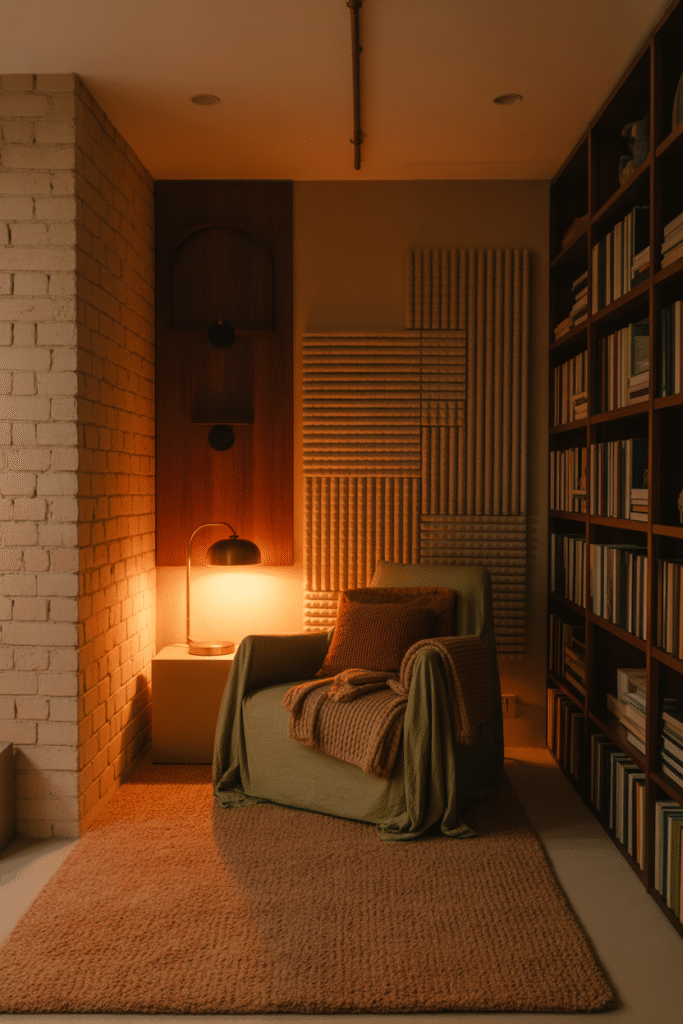
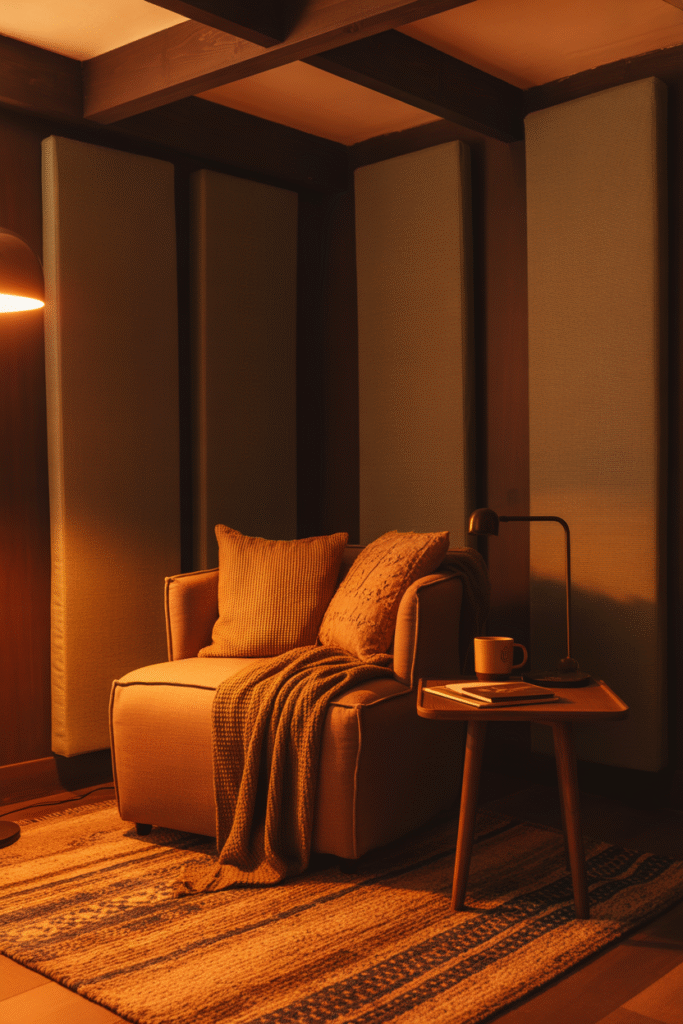
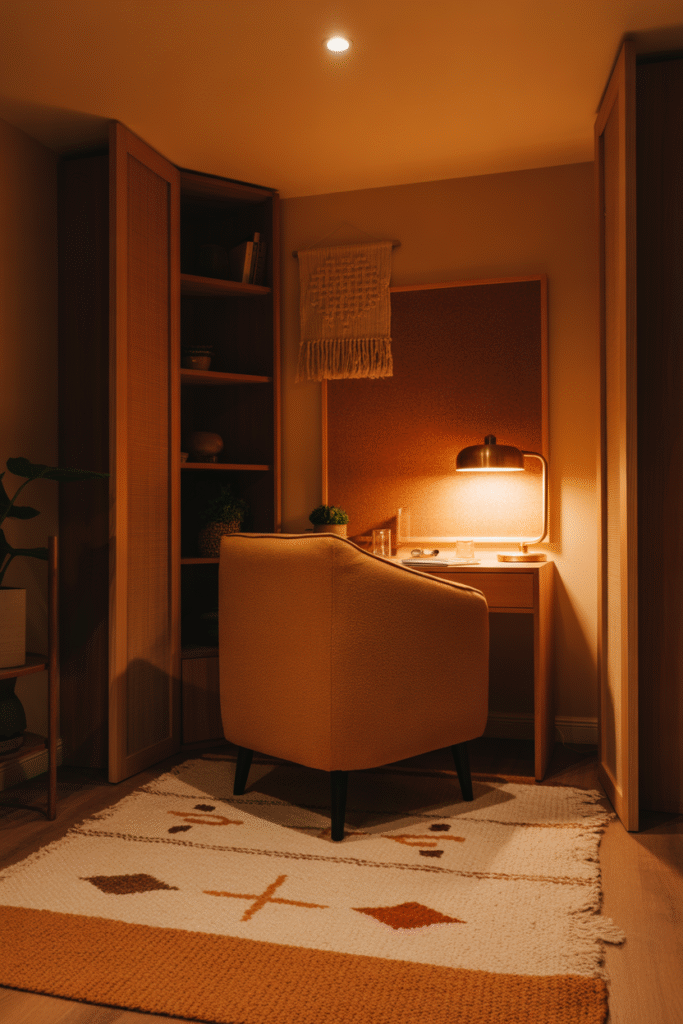
Warm the Floors
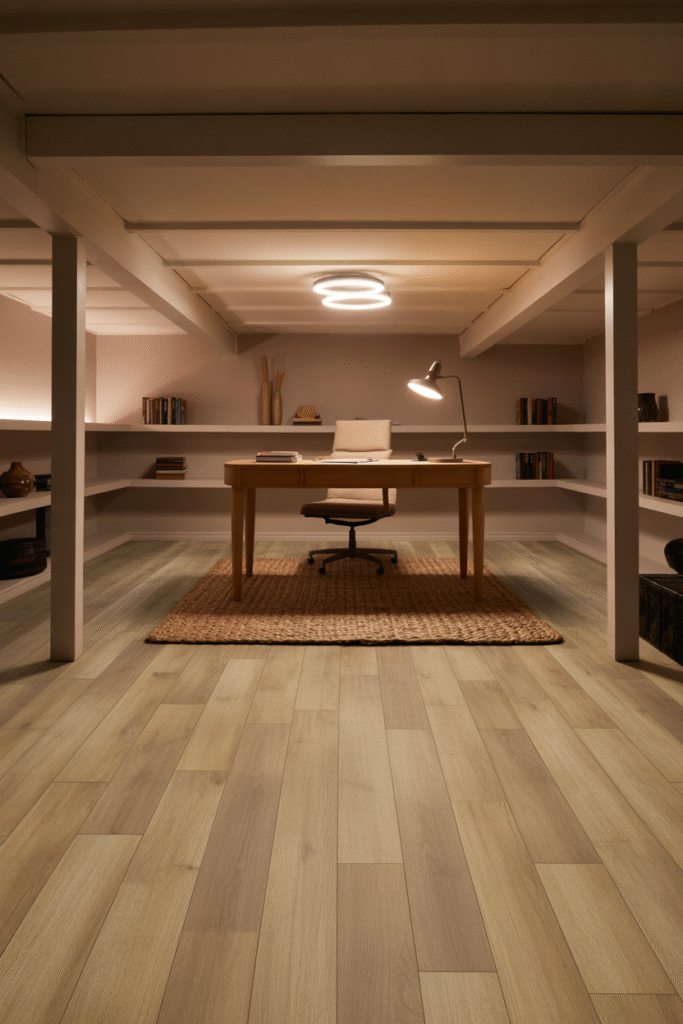
Basement flooring can feel cold and uninviting. Use luxury vinyl plank, engineered wood, or cork flooring to bring comfort. Add an area rug that defines your workstation while adding a soft visual break.
For extra comfort, consider heated floors beneath hard finishes like tile or LVP.
Play With Ceiling Treatment
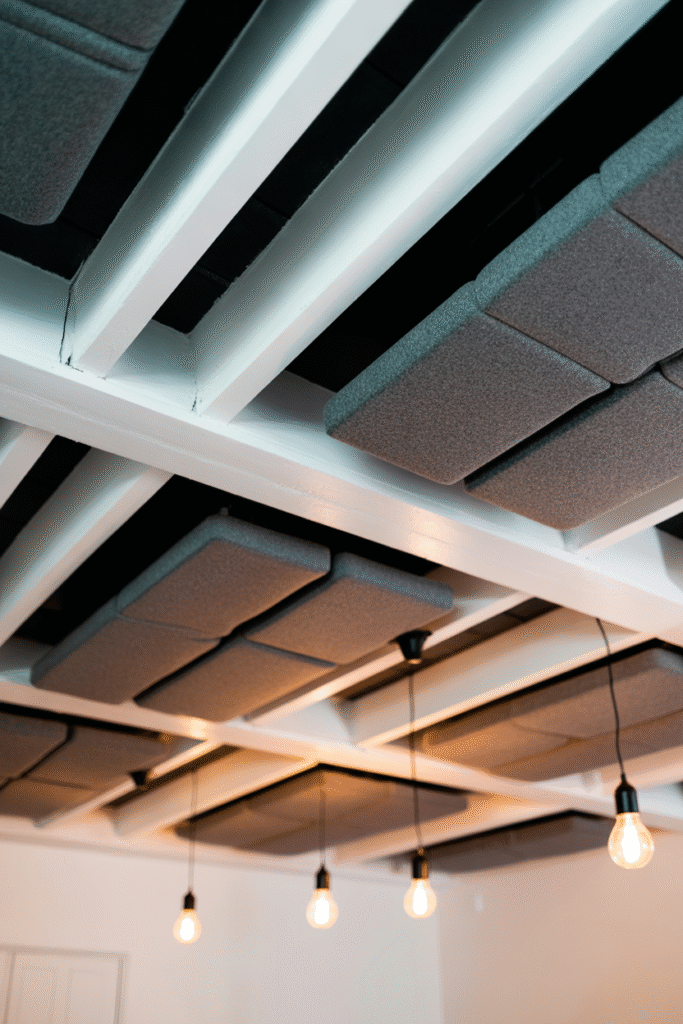
The ceiling sets the mood in a windowless space. Paint it slightly lighter than the walls for lift. If pipes or beams are exposed, embrace them — paint them matte white or black depending on your aesthetic (Scandinavian or industrial).
Adding wood slats or acoustic panels brings warmth and visual rhythm.
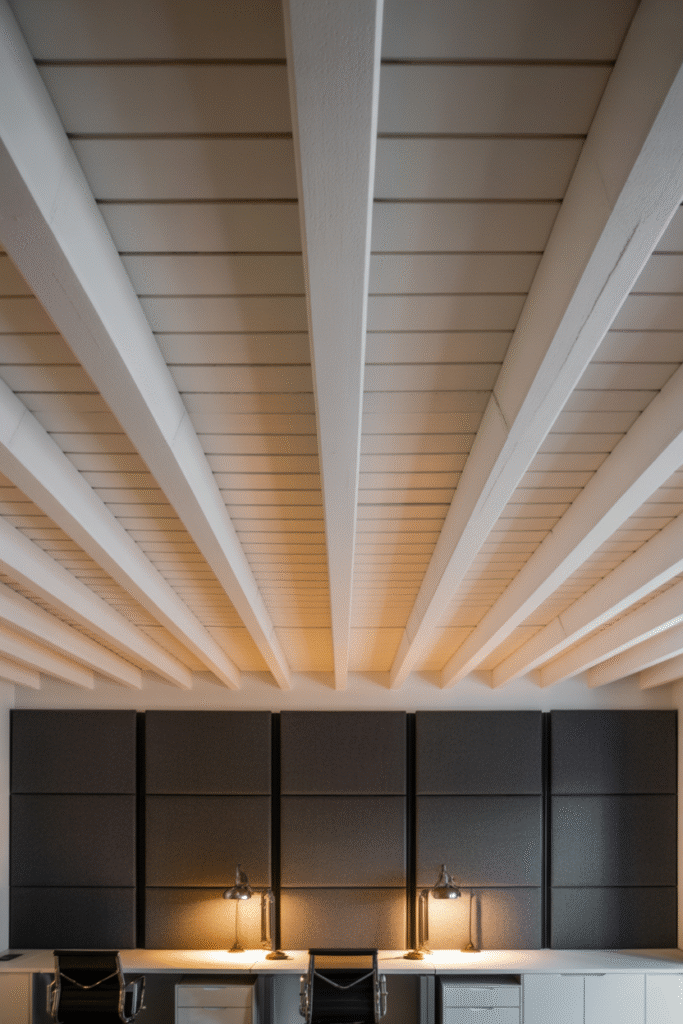
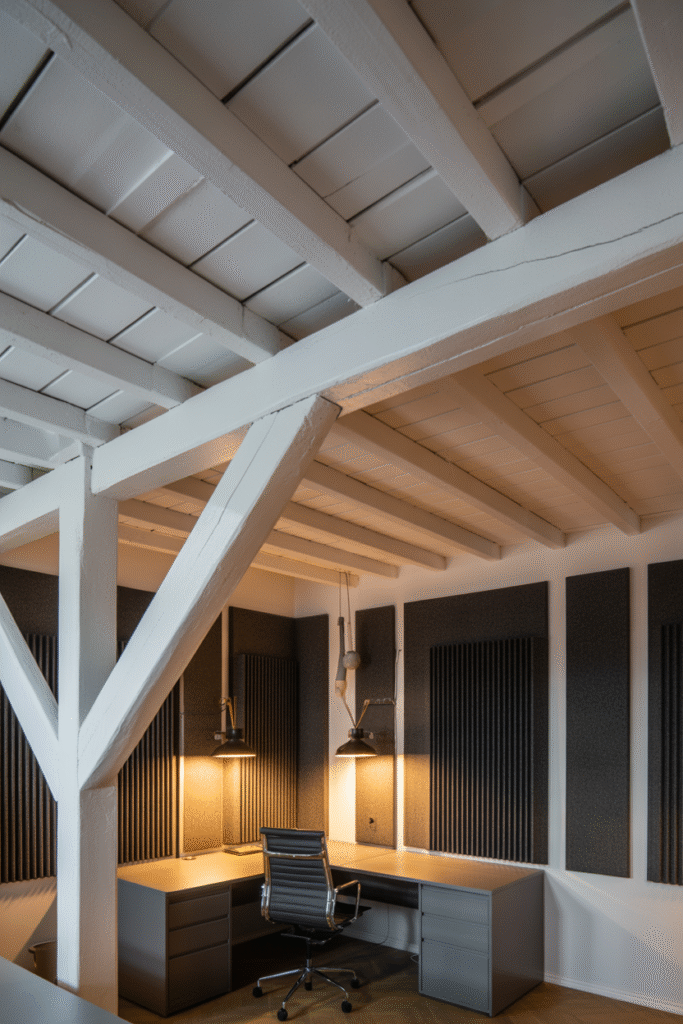
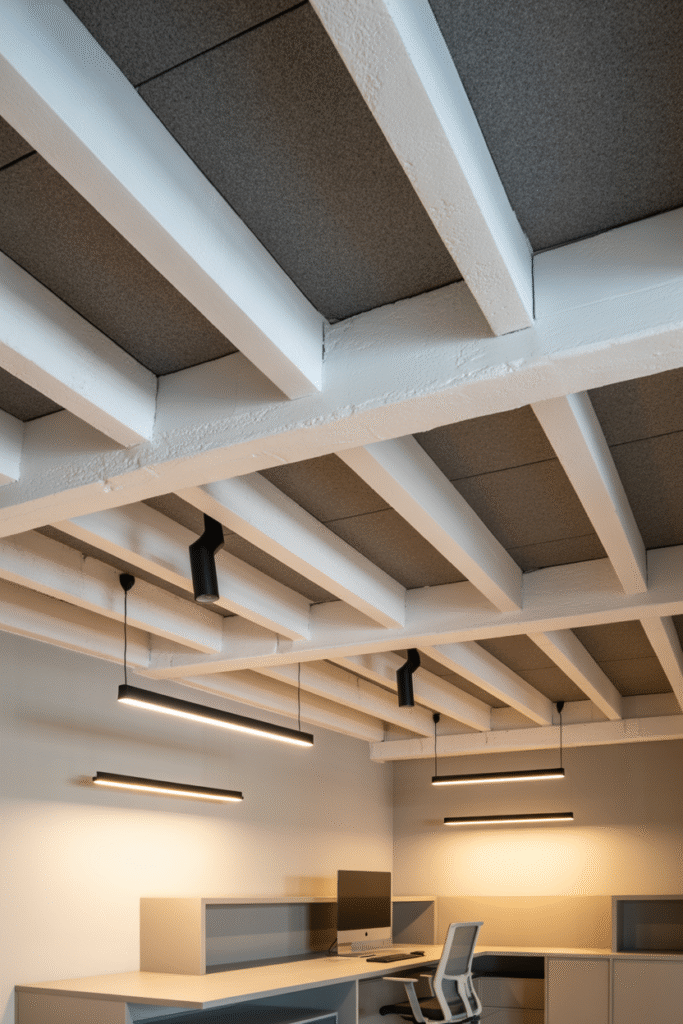
Introduce Mood Lighting
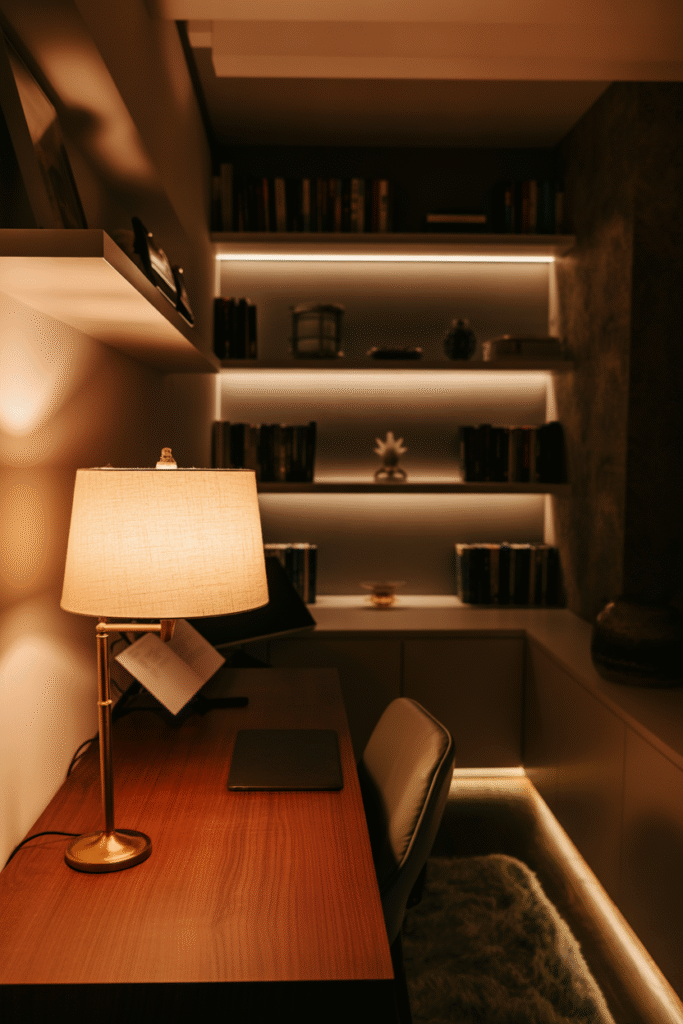
Ambient glow makes long work sessions easier. A small table lamp with a linen shade or a floor lamp in the corner creates warmth that mimics daylight fading through a window.
Consider color-tunable LED strips that shift from cool morning light to warm evening tones, aligning with circadian rhythm.
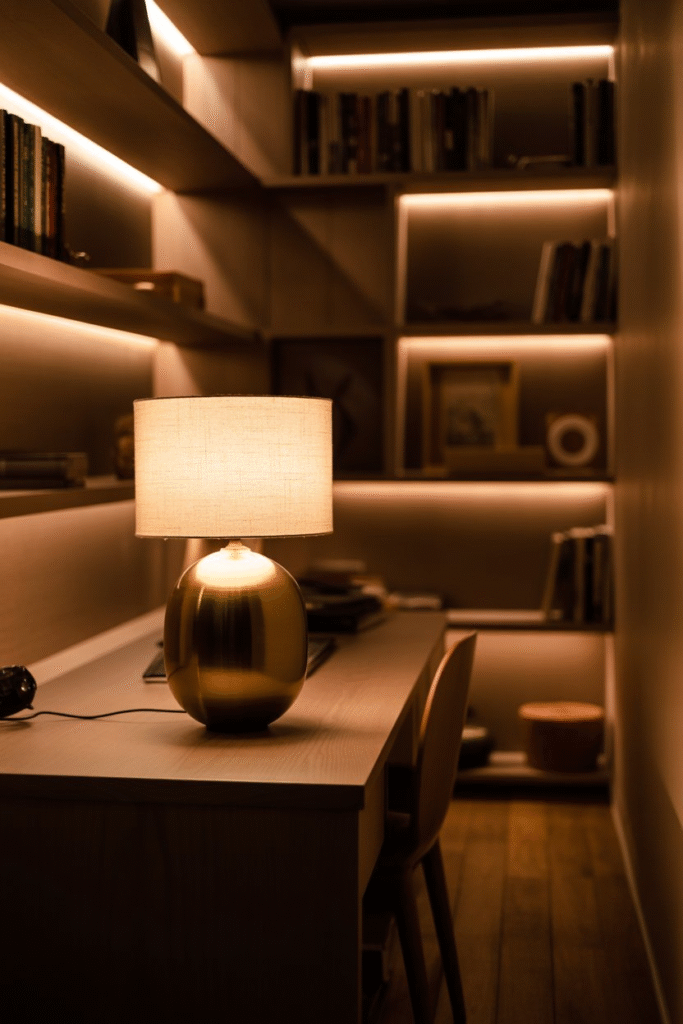
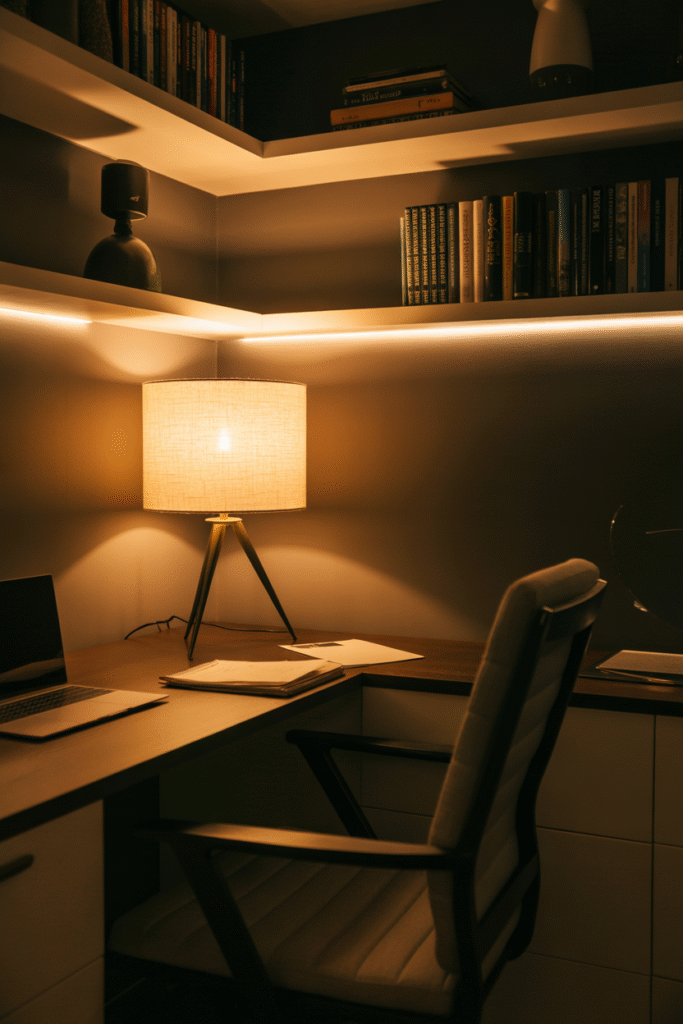
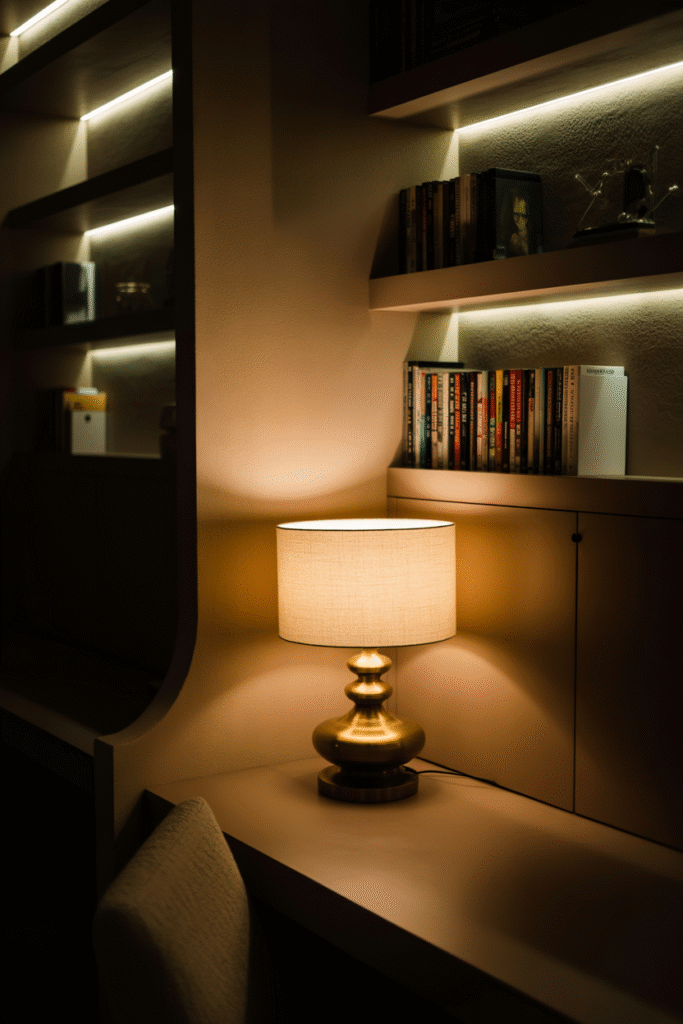
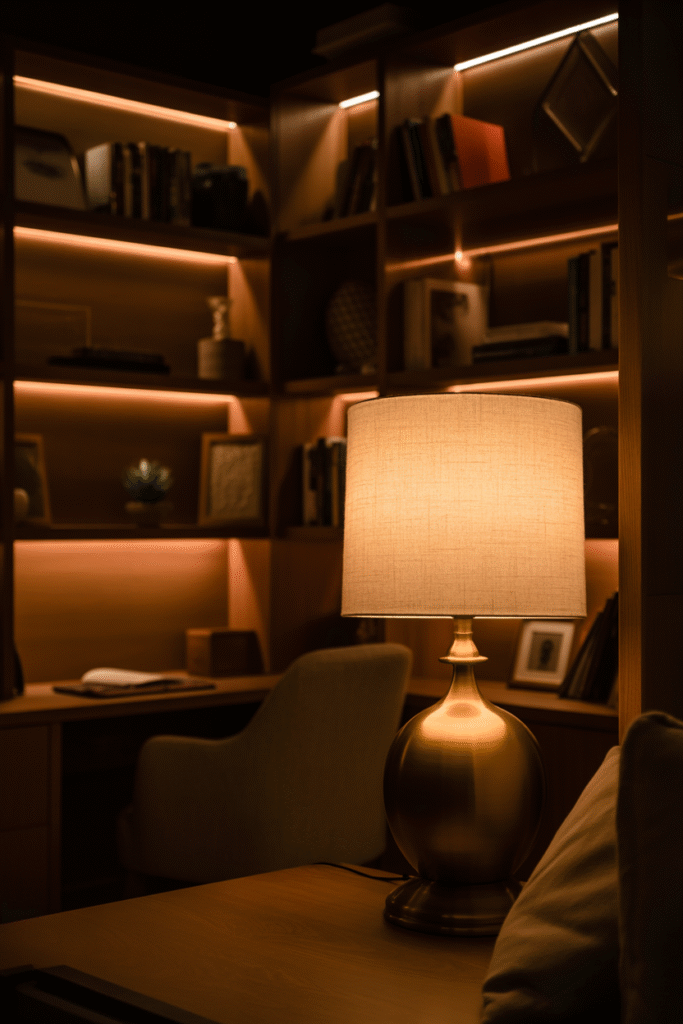
Explore Different Design Styles
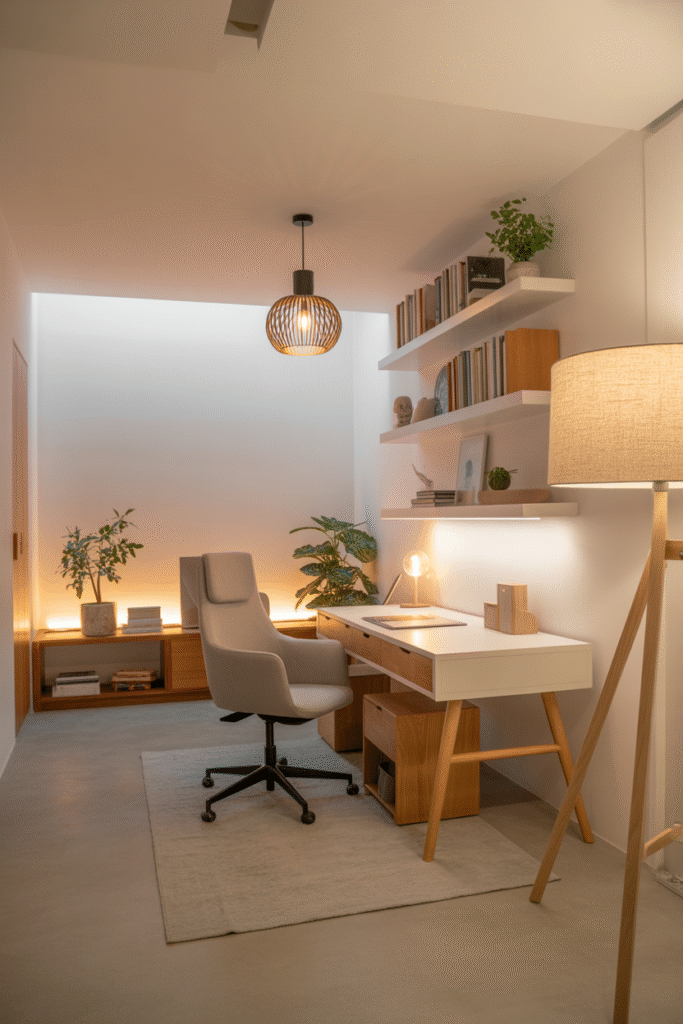
Even in a basement, style defines mood. Choose a design language that matches your workflow:
- Modern Scandinavian: Pale wood, white walls, simple desk, greenery.
- Industrial Loft: Brick veneer, black metal shelving, Edison bulbs.
- Boho Chic: Layered textiles, cane chair, jute rug, woven wall hangings.
- Mid-Century Modern: Walnut finishes, bold art, globe lighting.
- Minimal Contemporary: Floating desk, hidden storage, neutral monochrome palette.
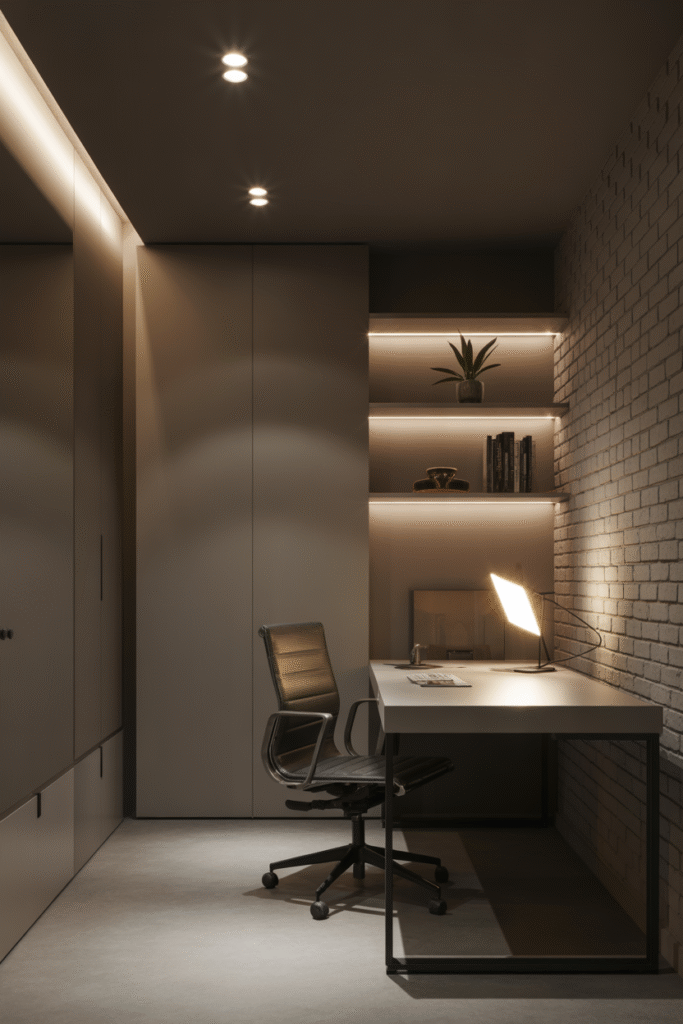
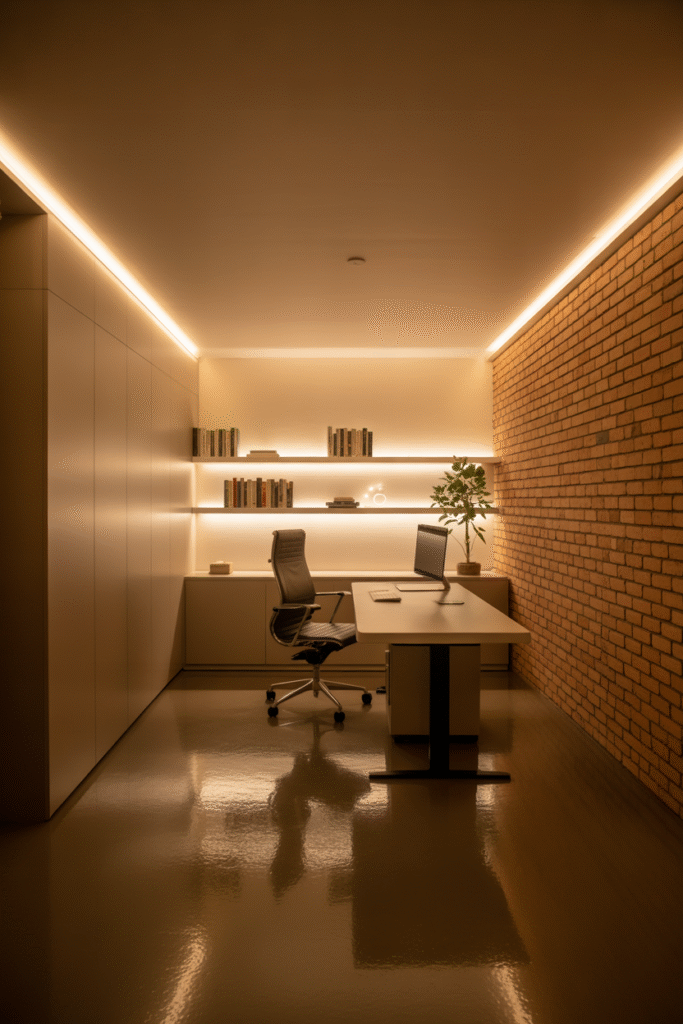
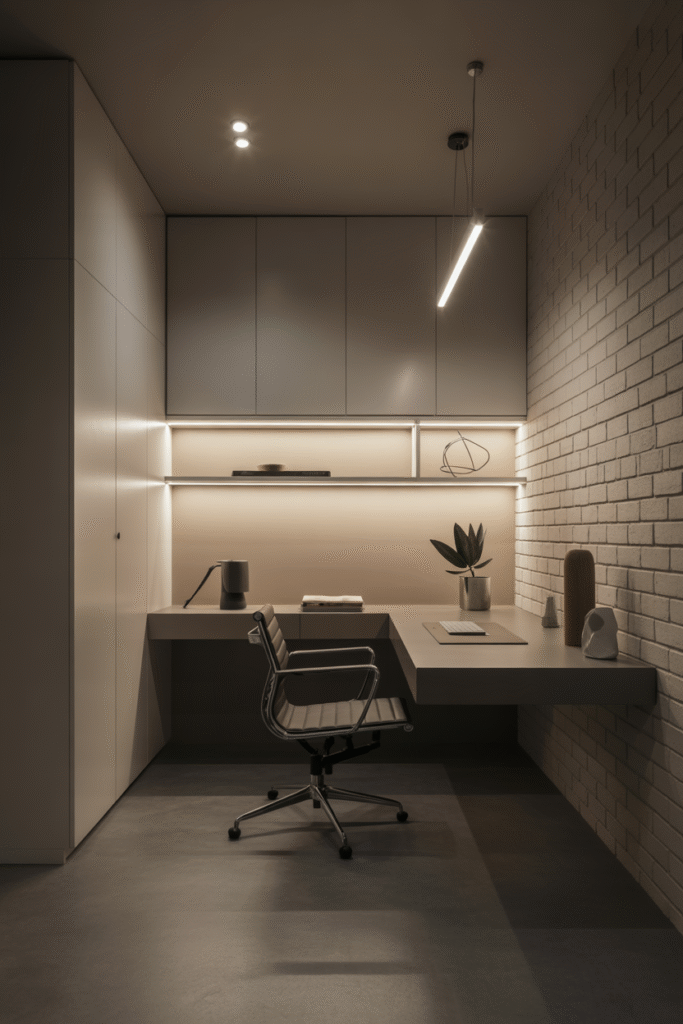
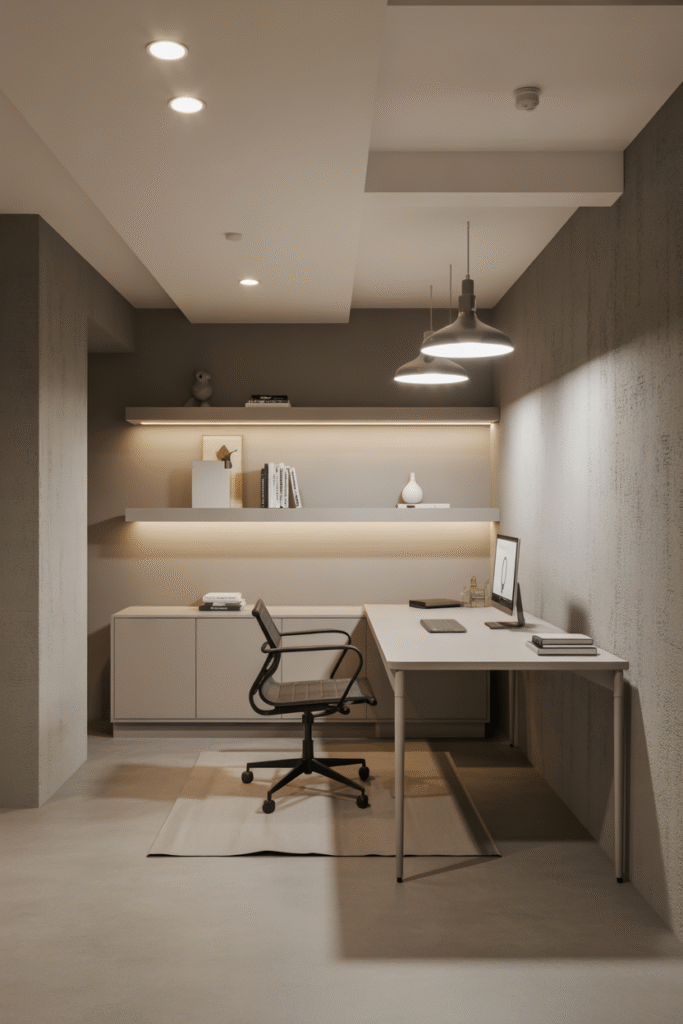
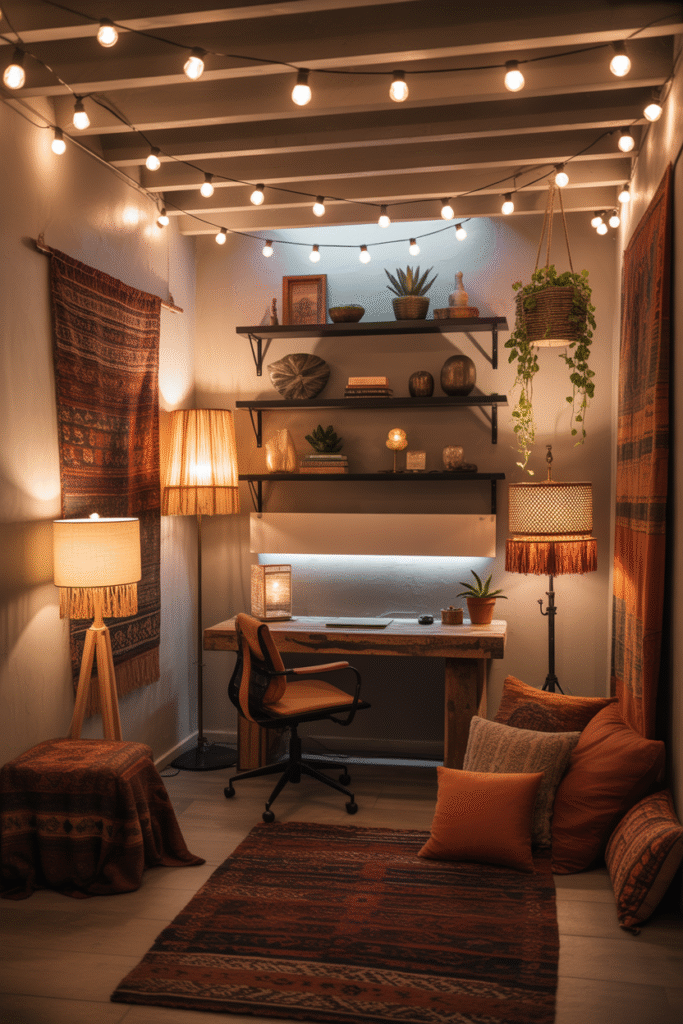
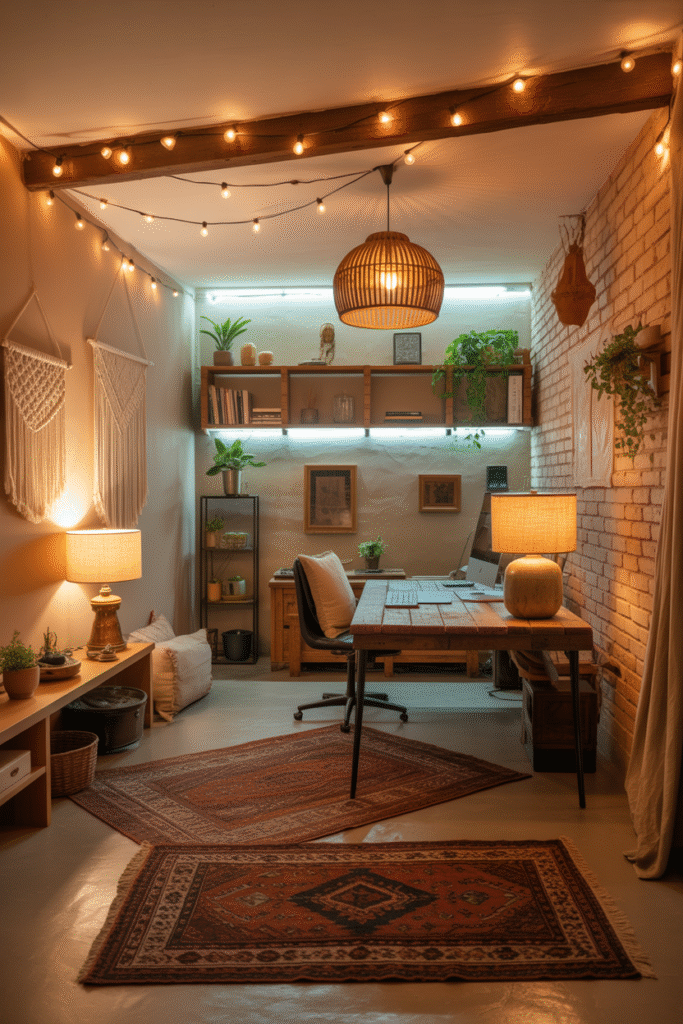
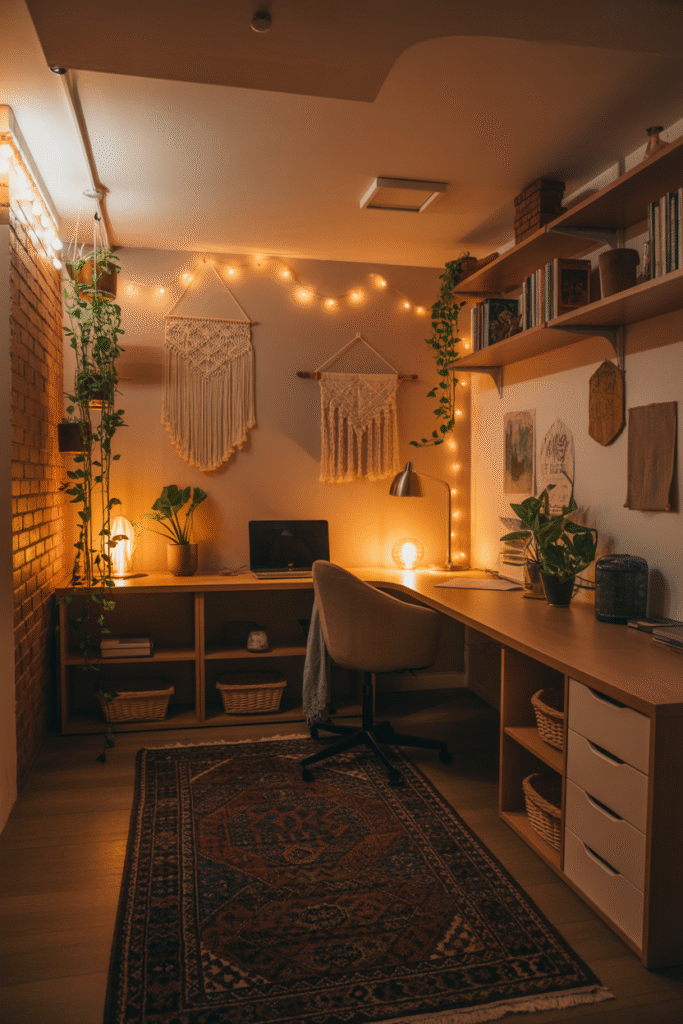
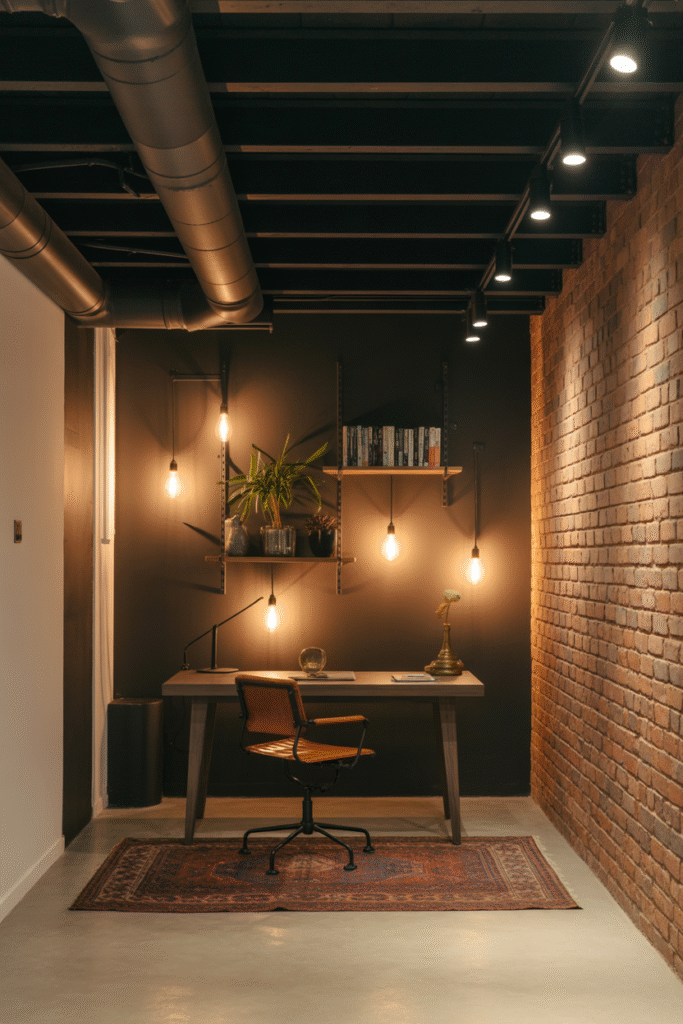
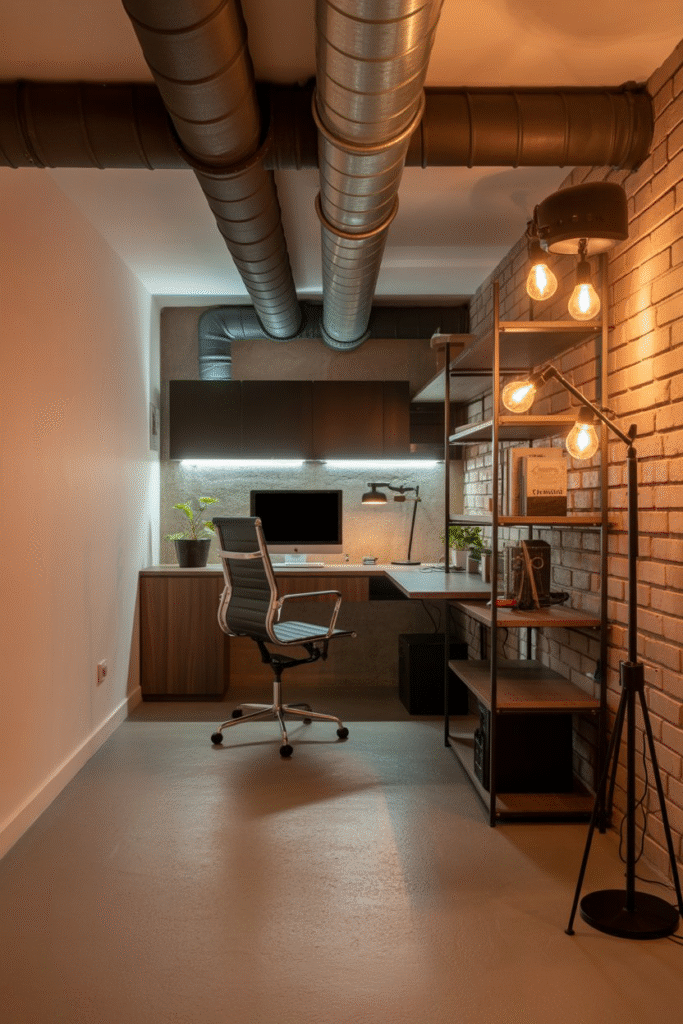
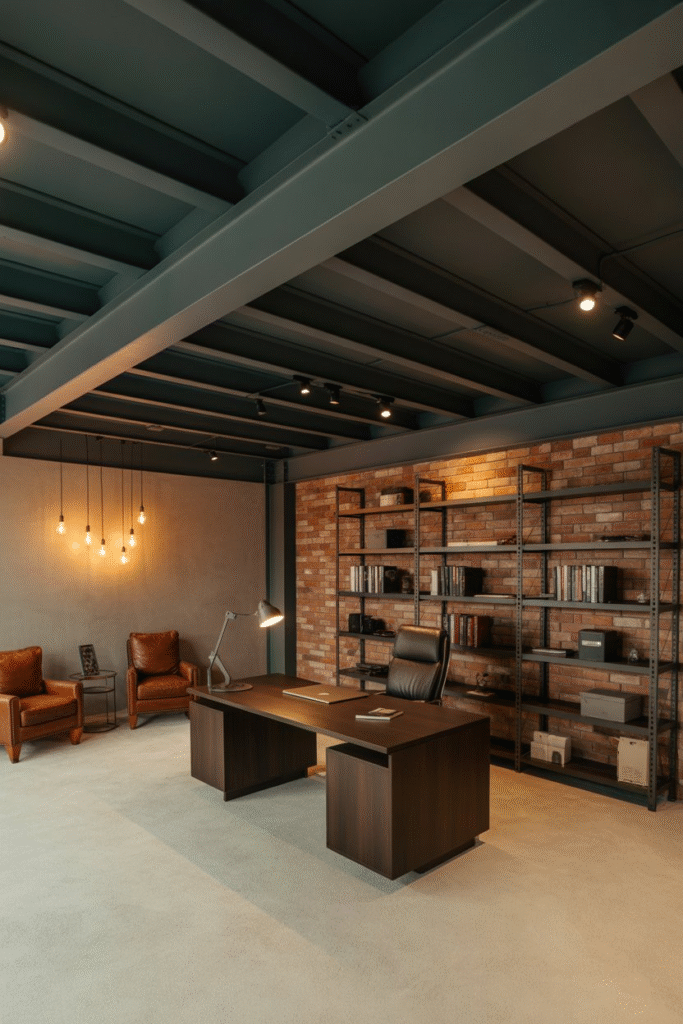
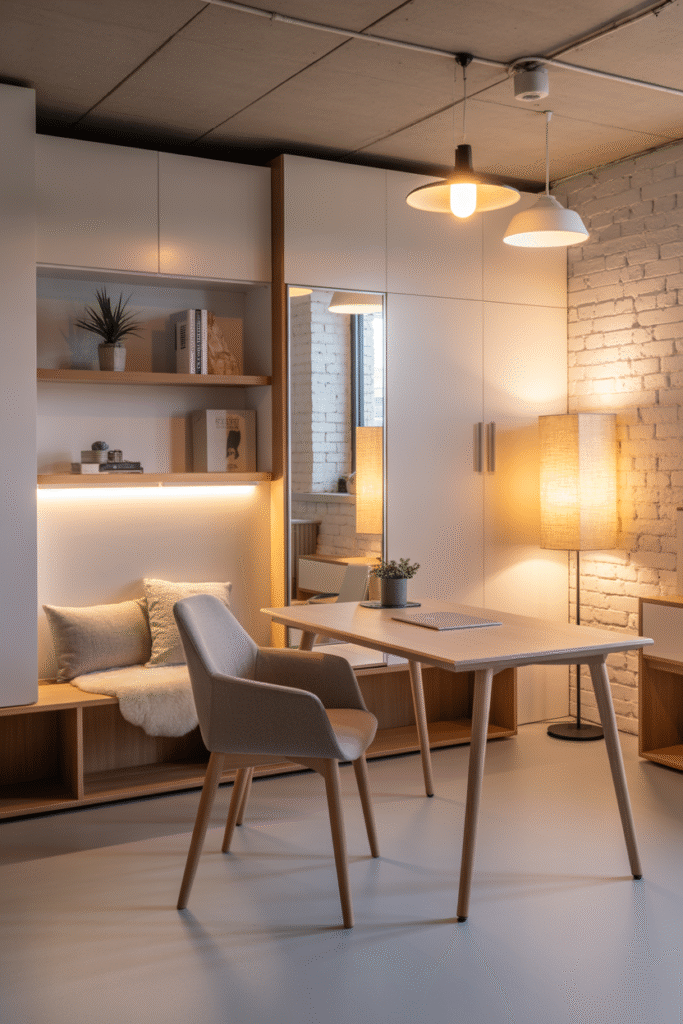
Create an Accent Wall for Depth
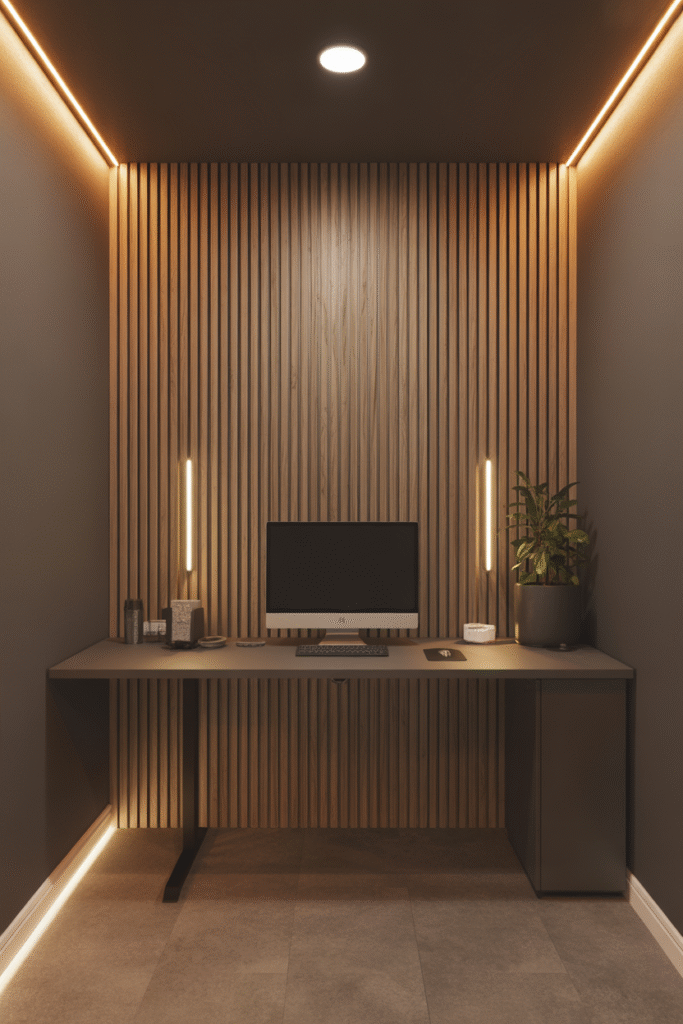
Without windows, walls can feel flat. Add interest through vertical slat wood panels, painted arches, or textured wallpaper. Choose one wall behind your desk or opposite your entry for drama.
An accent wall draws the eye and gives structure to the layout, reducing the sense of enclosure.
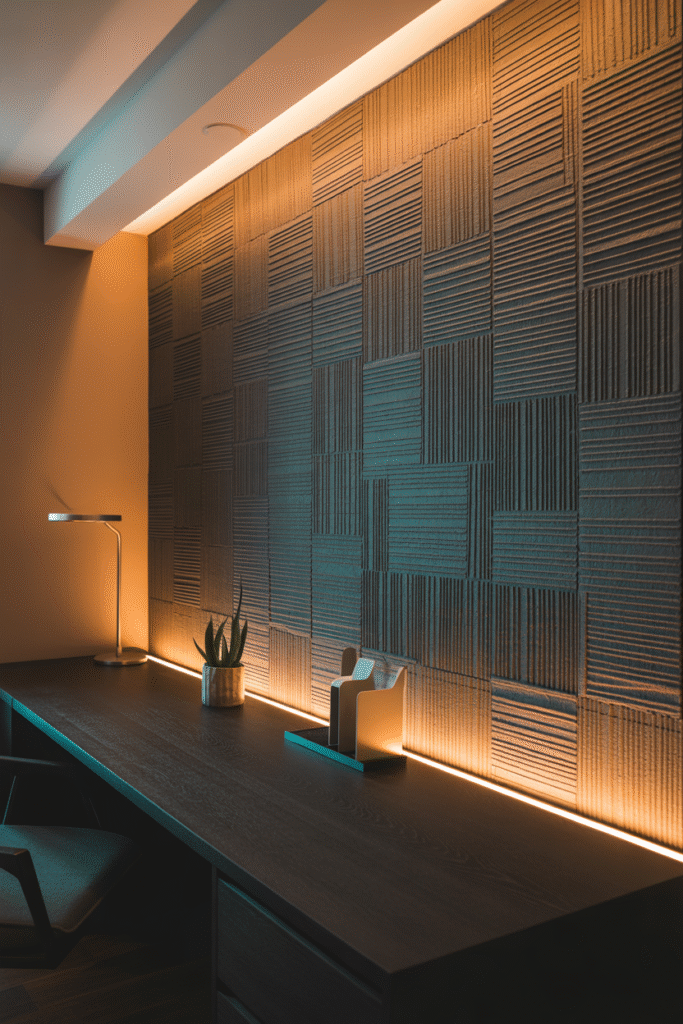
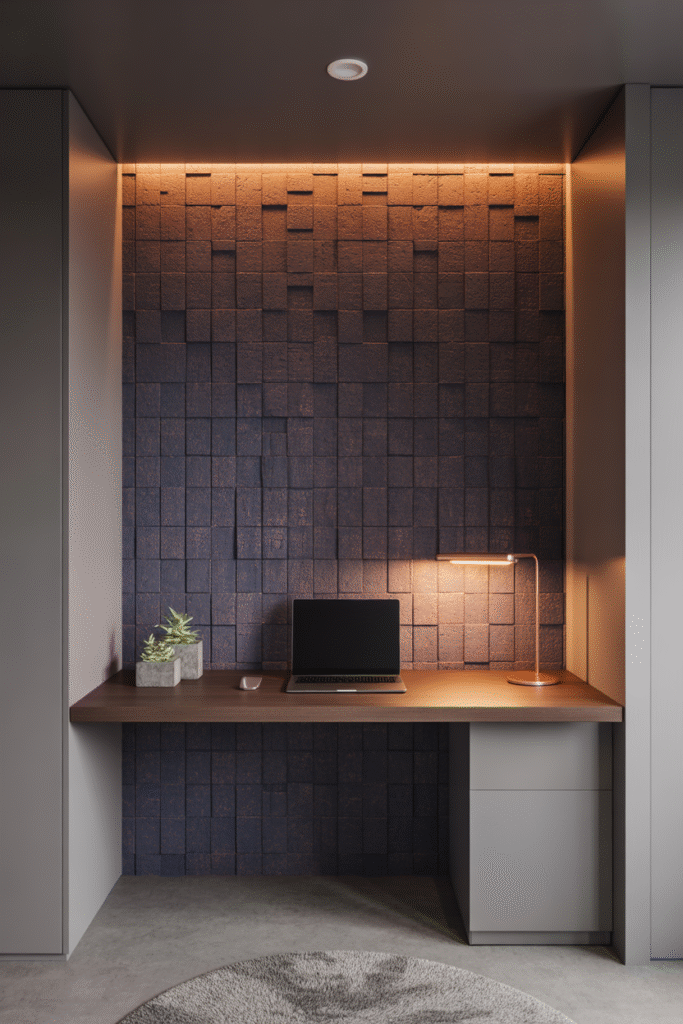
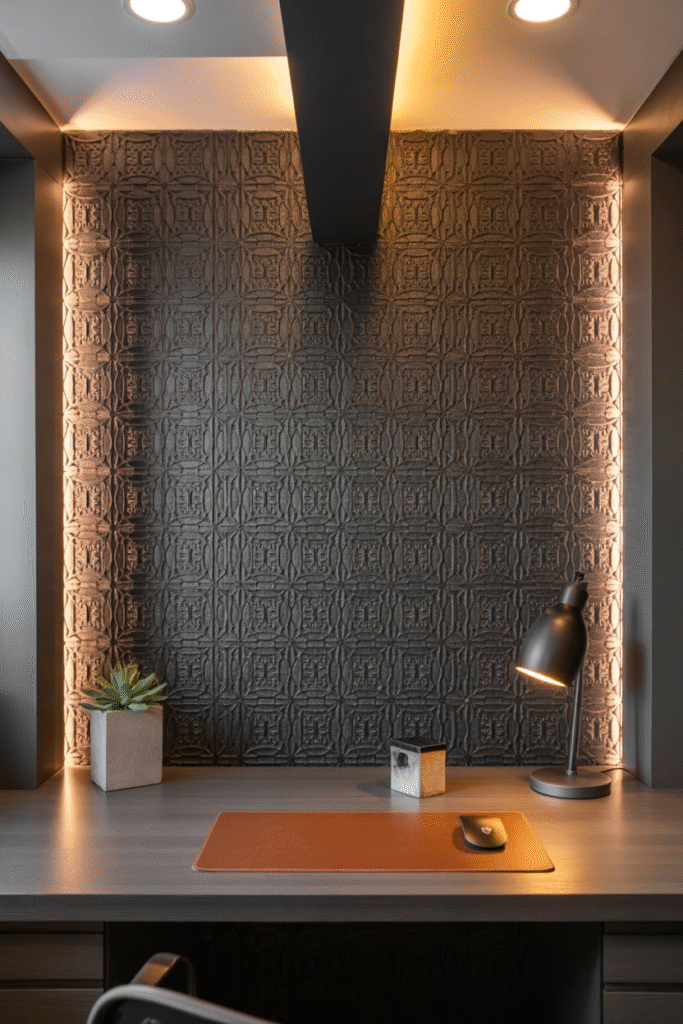
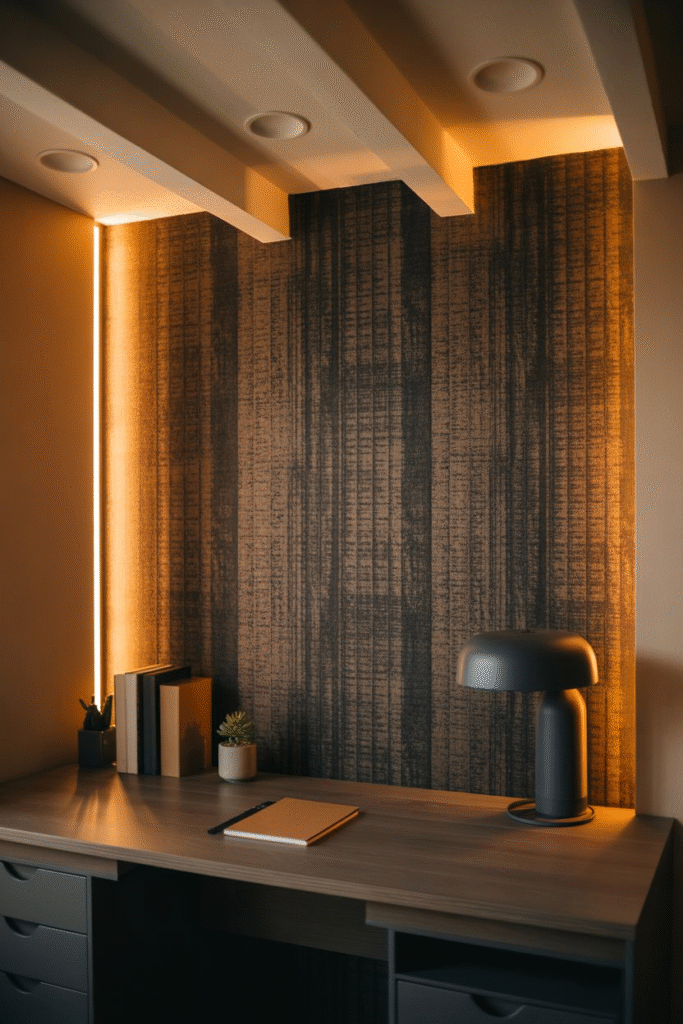
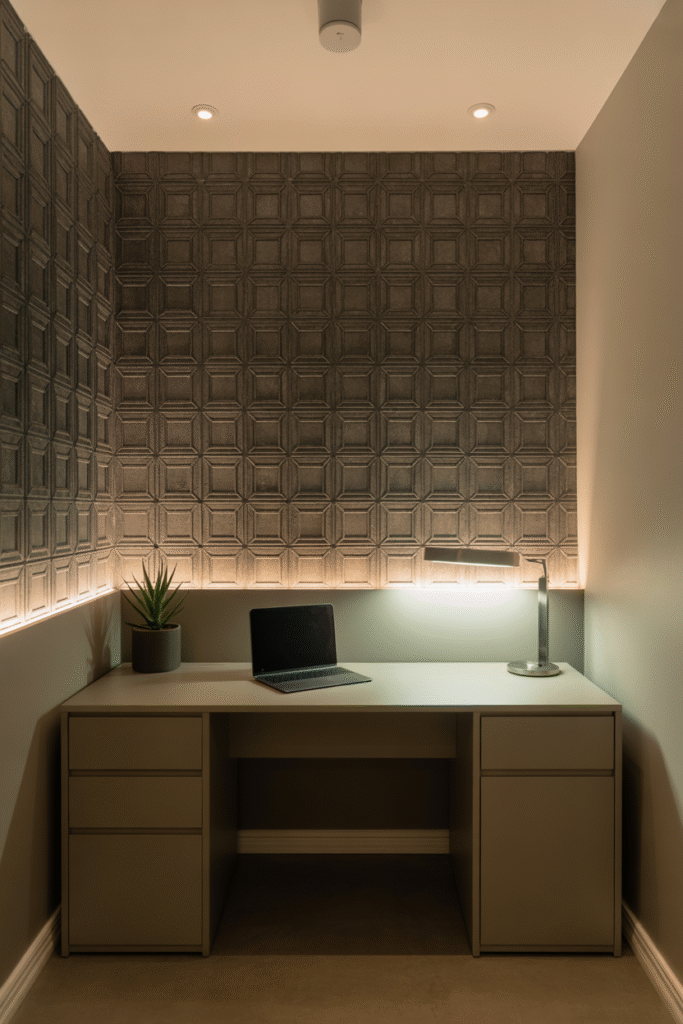
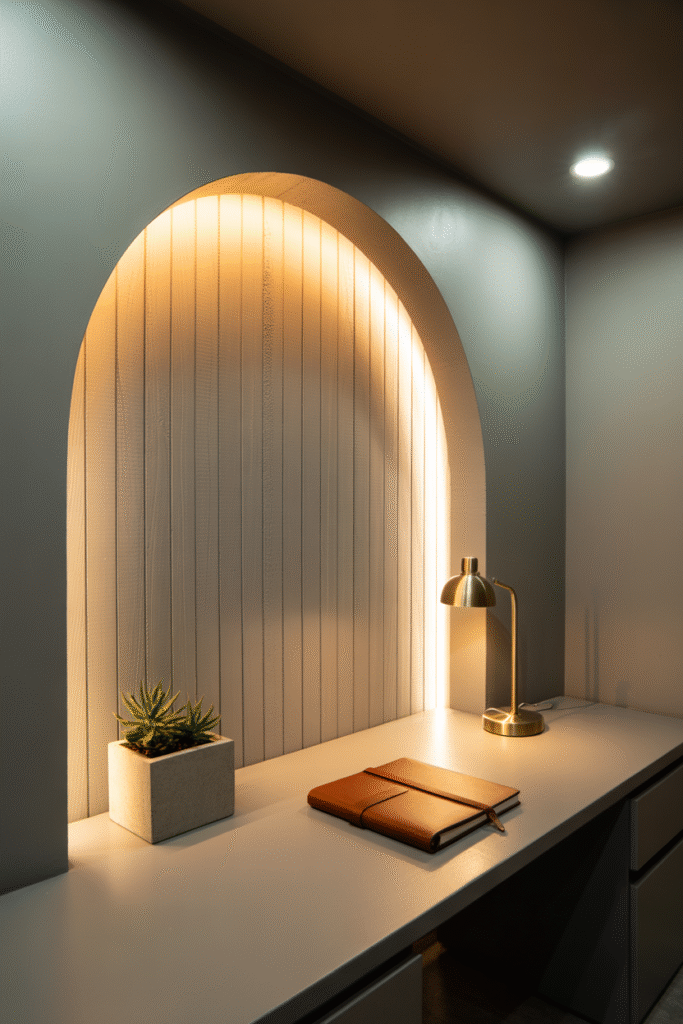
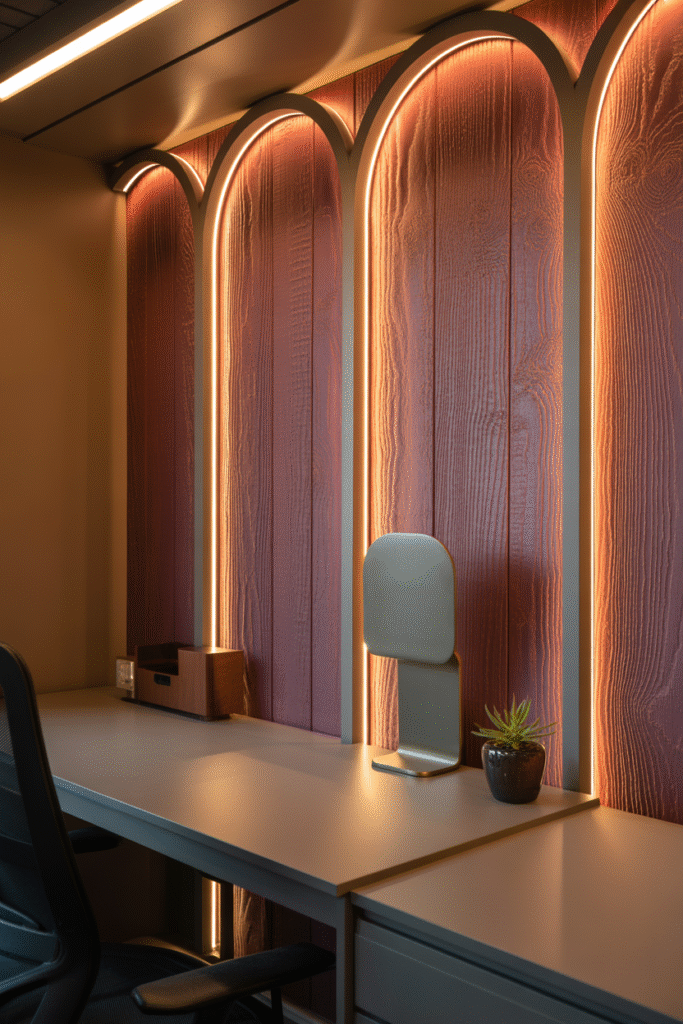
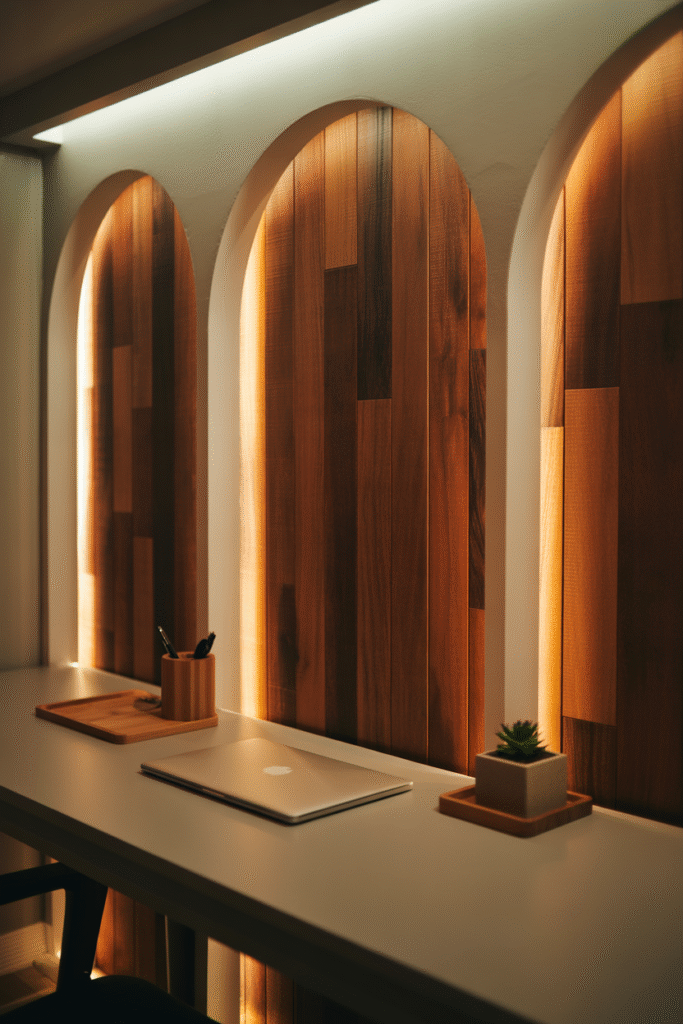
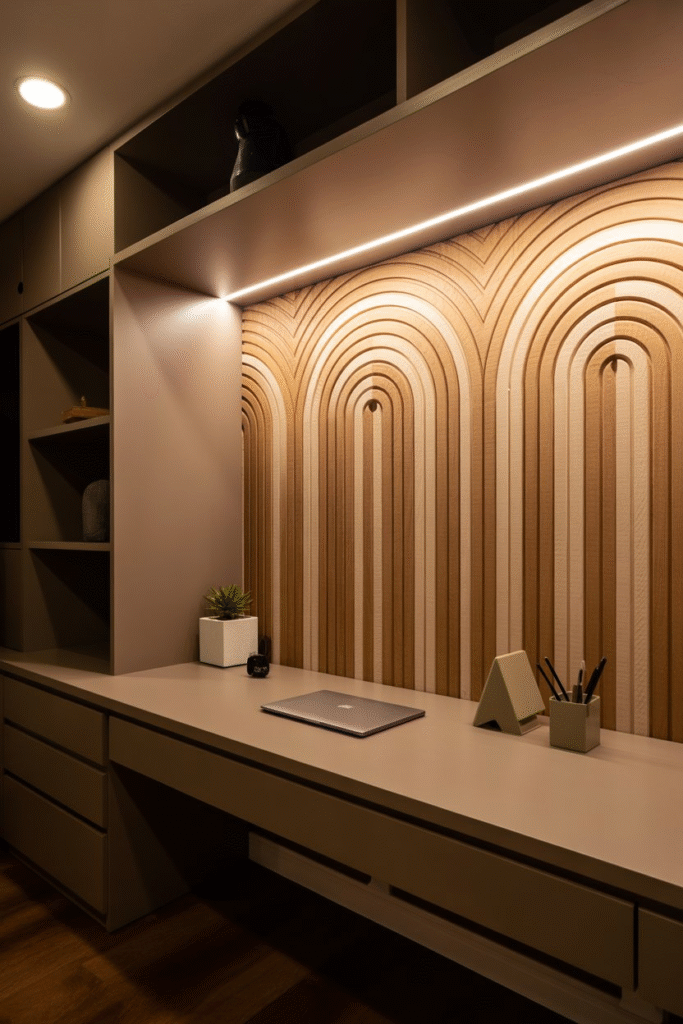
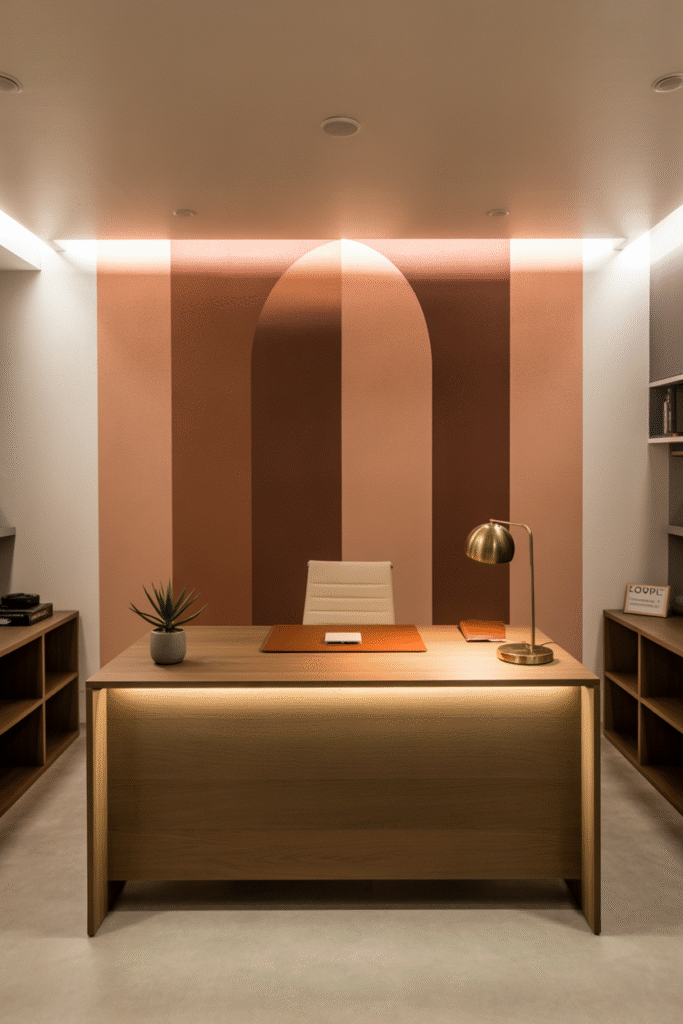
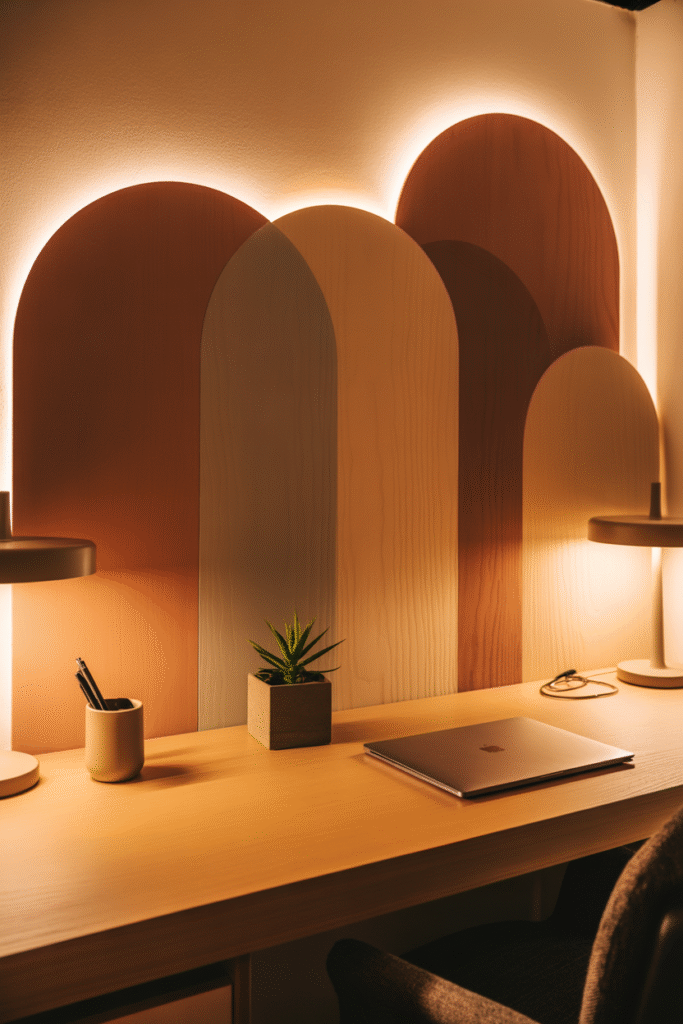
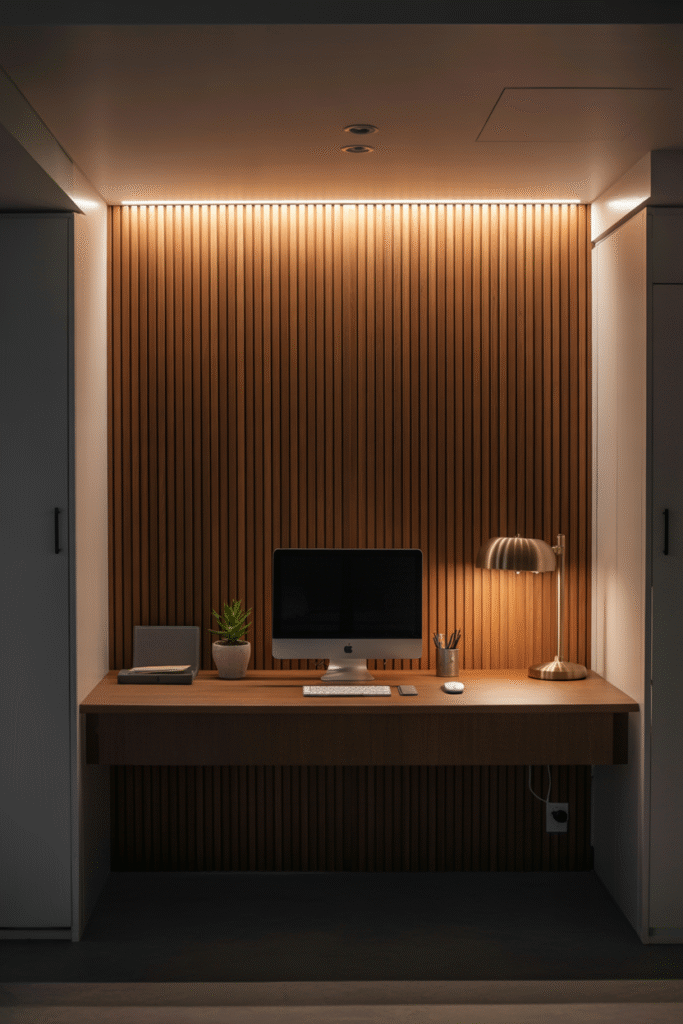
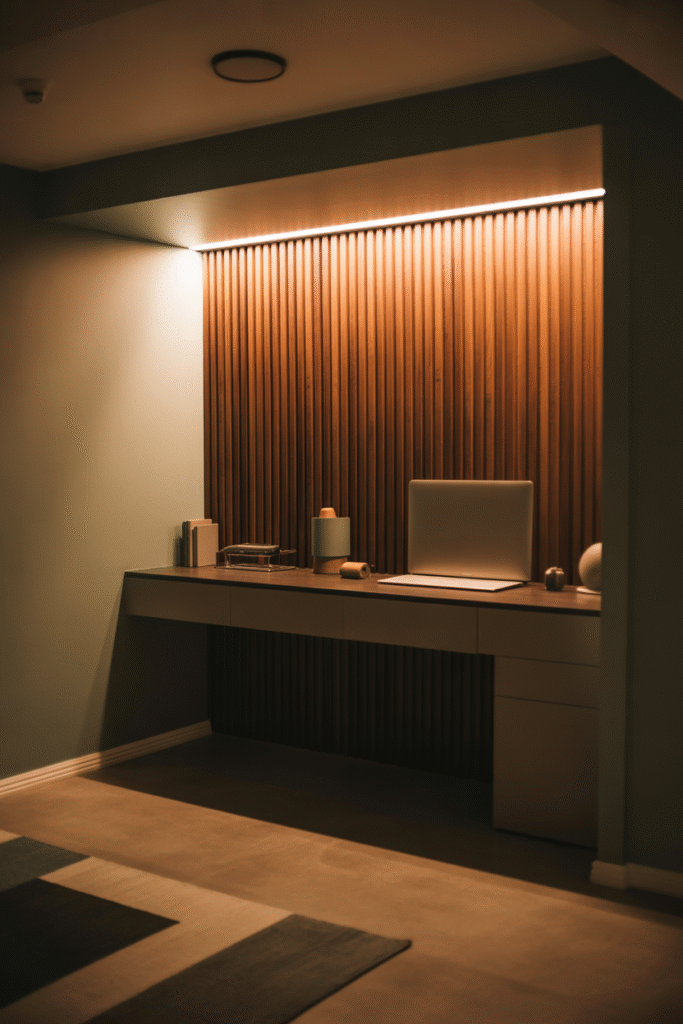
Incorporate Smart Technology
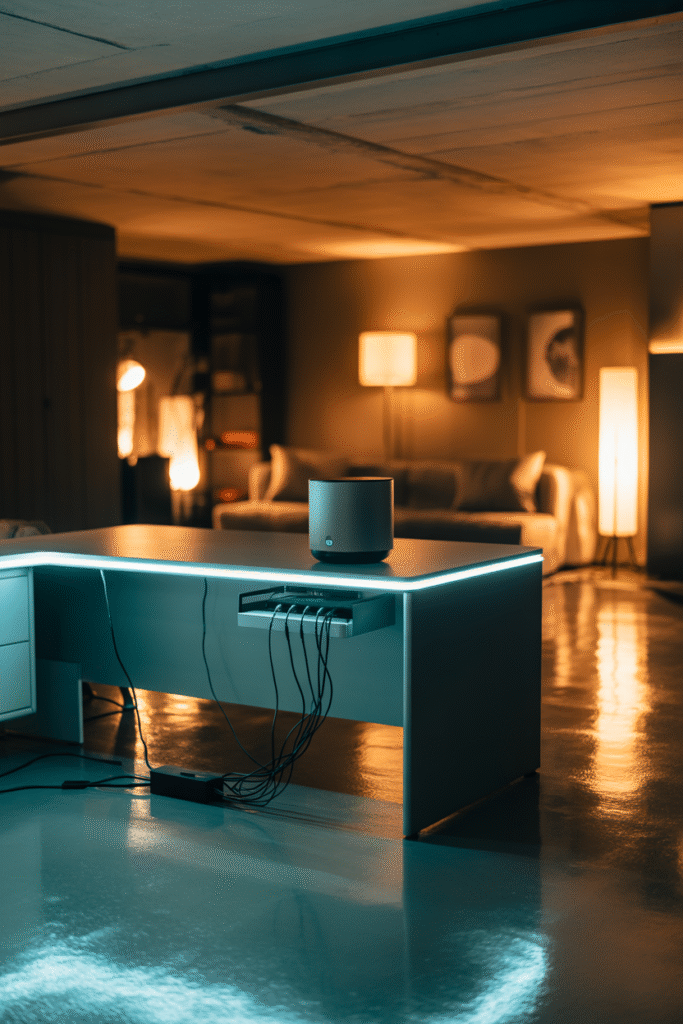
Integrate convenience through smart lighting, thermostat, and air purifiers. A well-ventilated, temperature-controlled basement office stays comfortable all day.
Voice-controlled lighting scenes (“Focus Mode,” “Relax Mode”) add functionality while preserving visual calm.
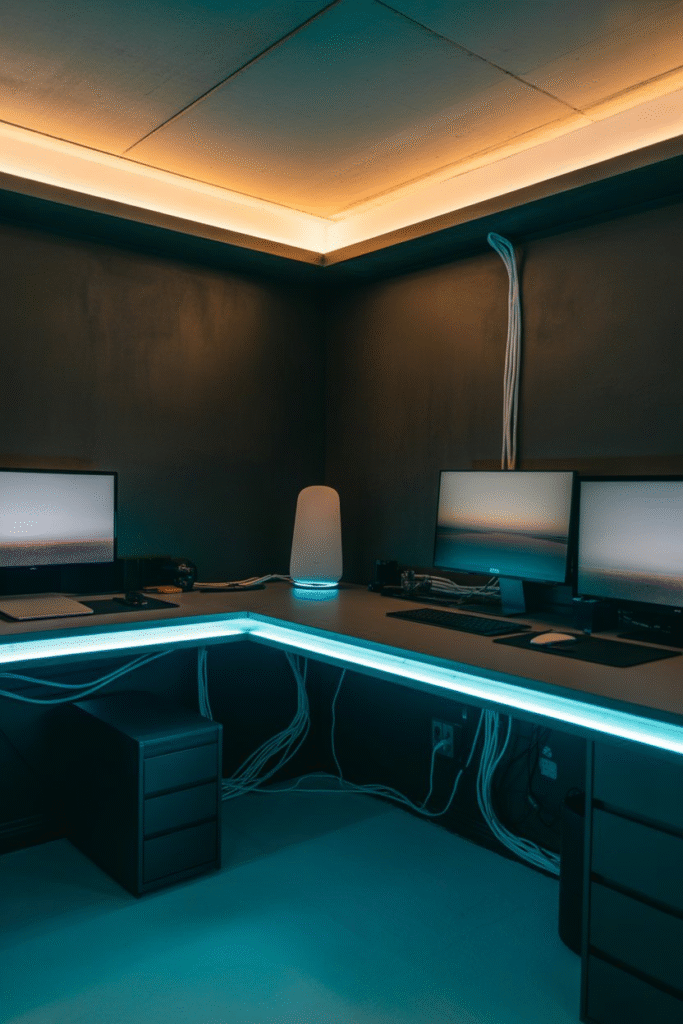
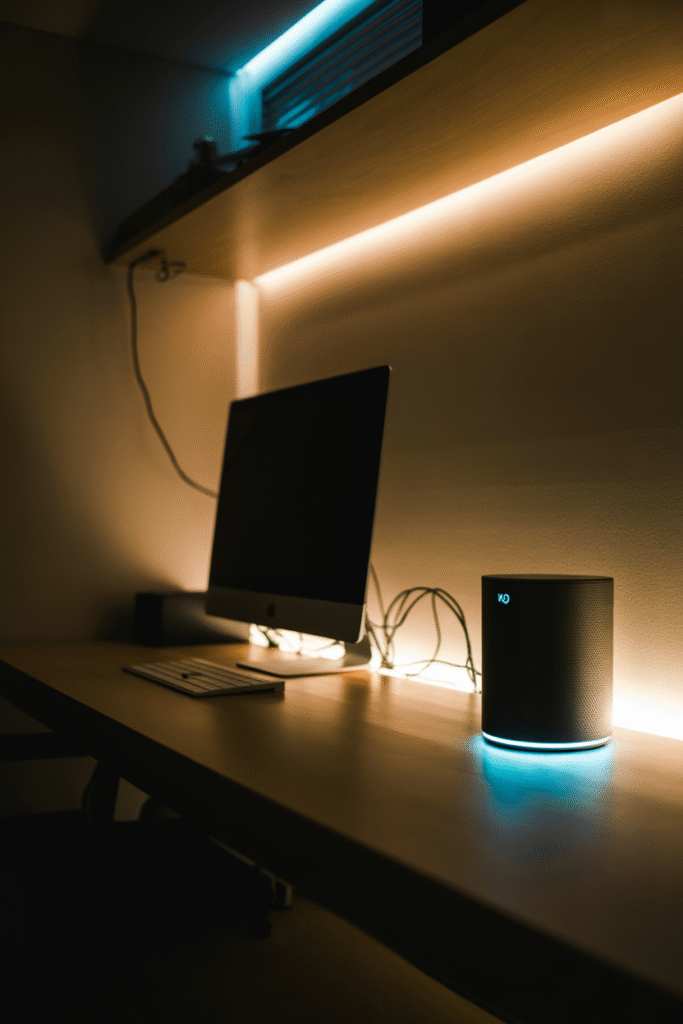
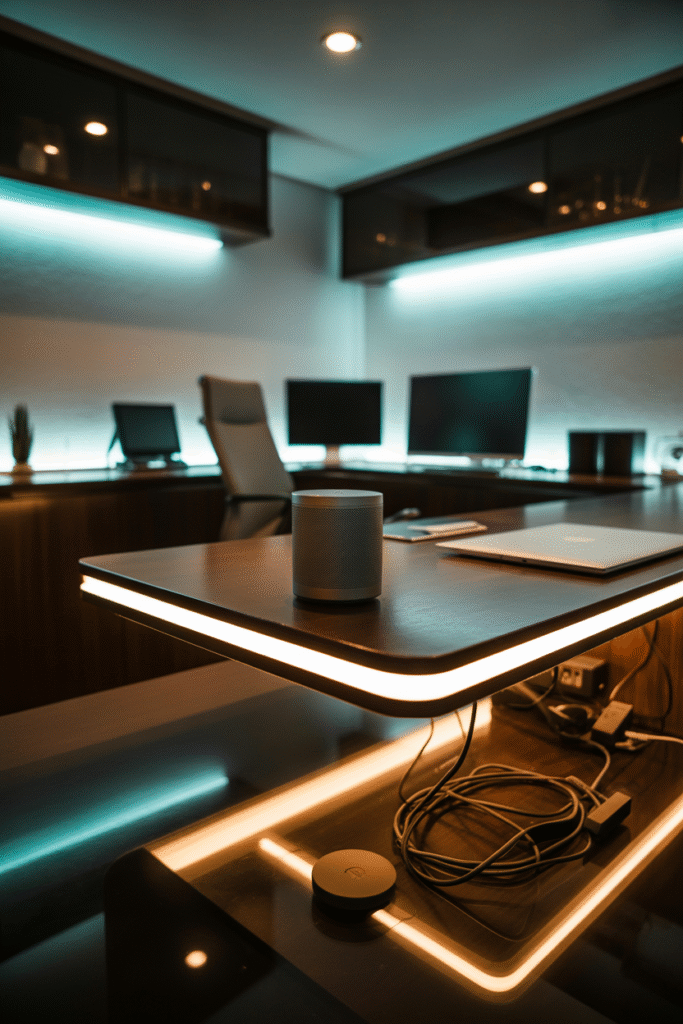
Add Personal Touches
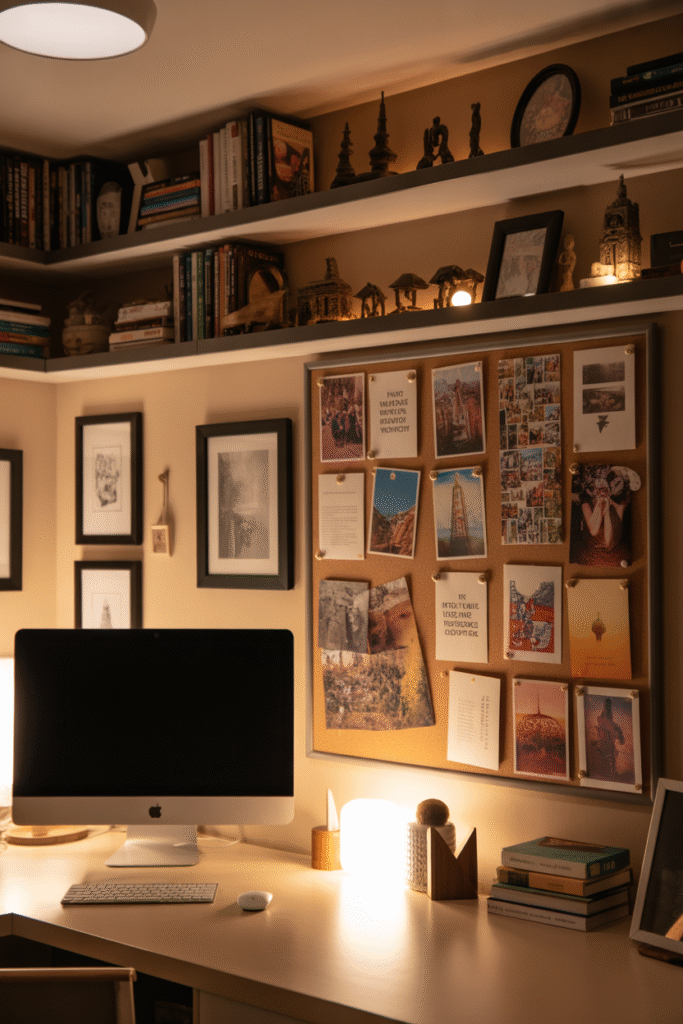
In a windowless space, personality prevents monotony. Display meaningful photos, travel souvenirs, or books that inspire creativity. Keep the visual story cohesive with consistent frame finishes or color themes.
A corkboard or pin wall behind your monitor adds texture and utility at once.
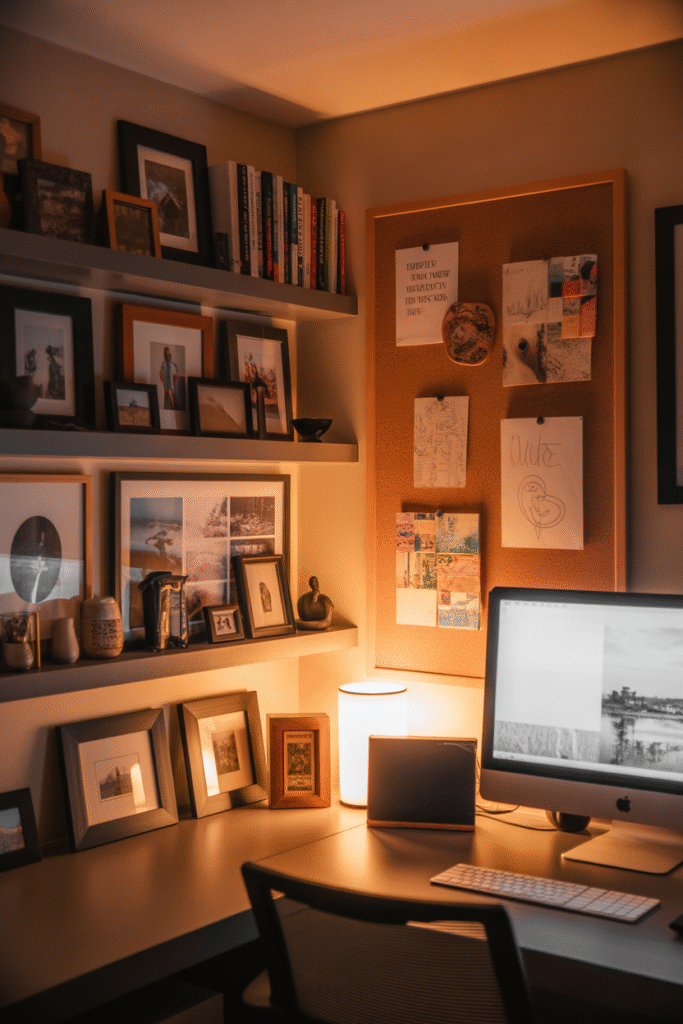
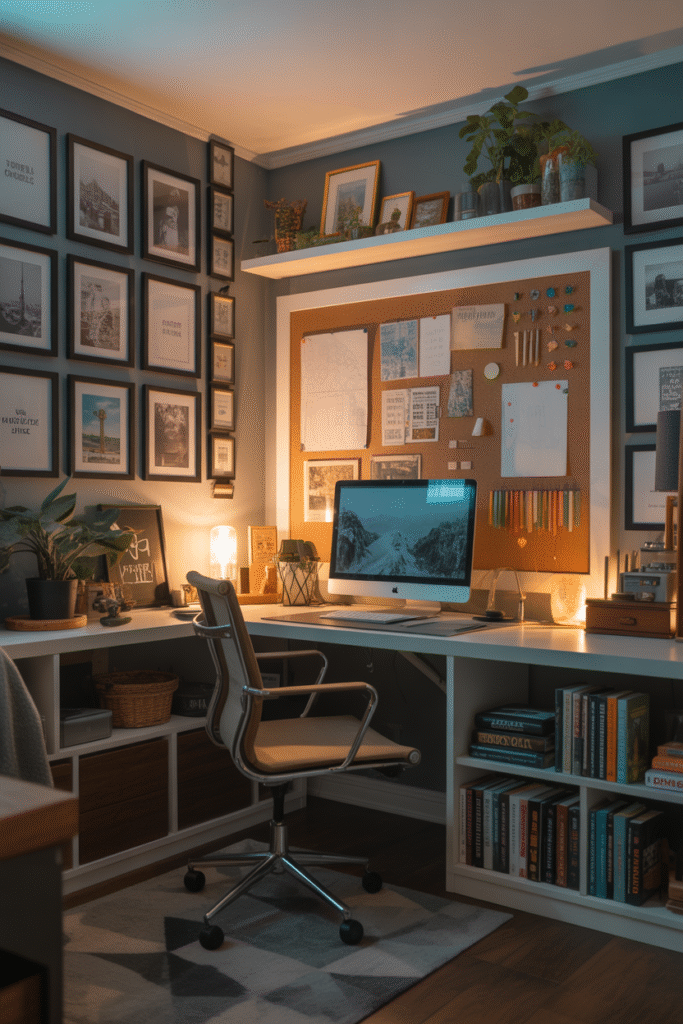
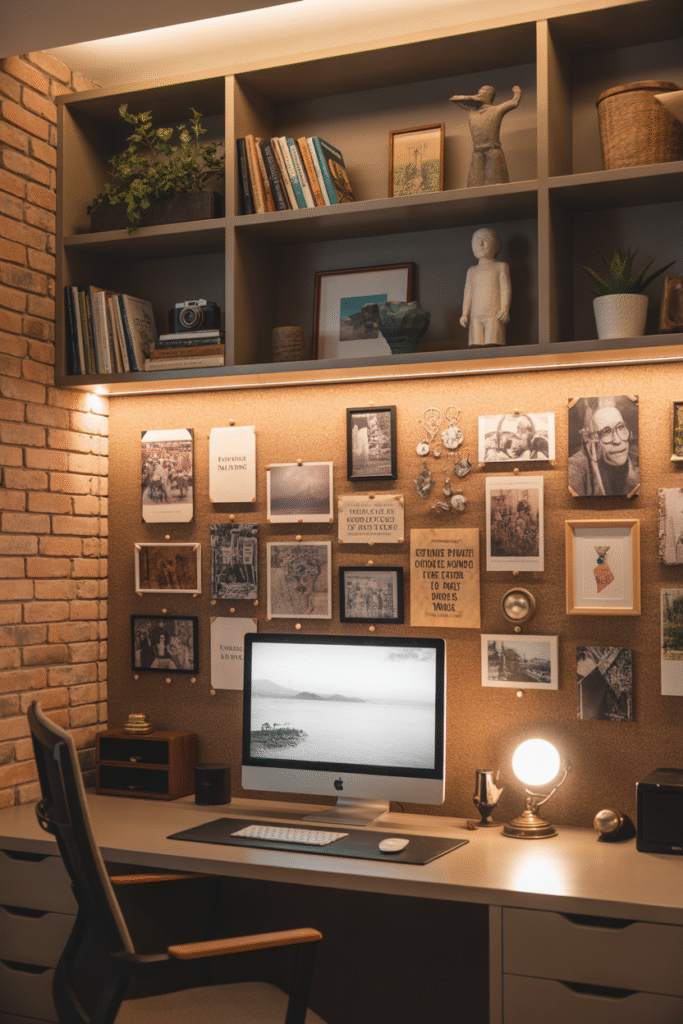
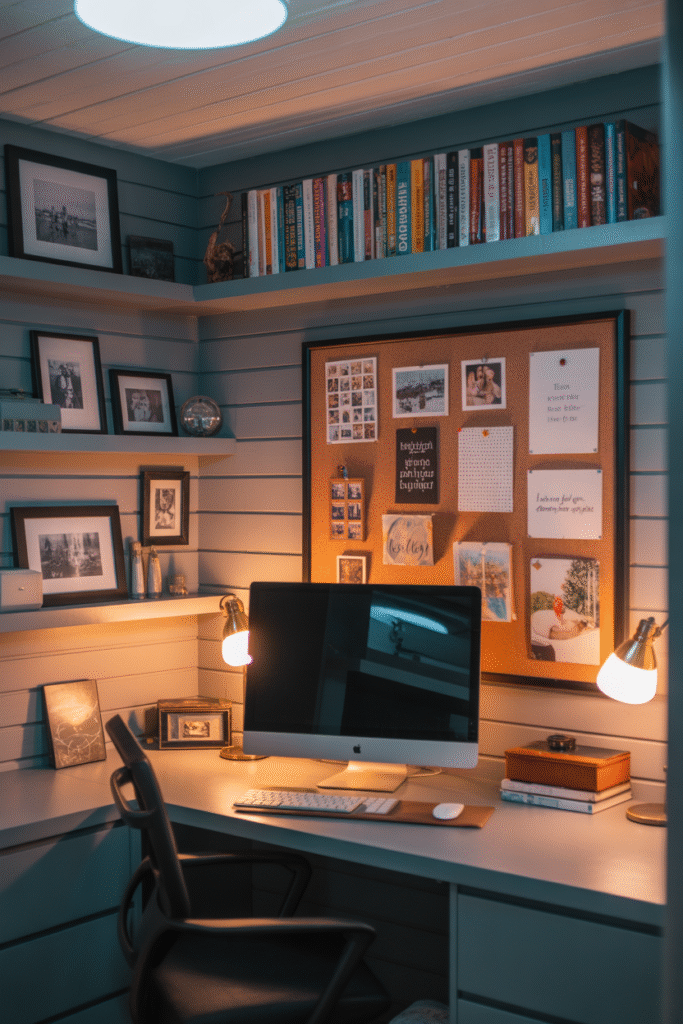
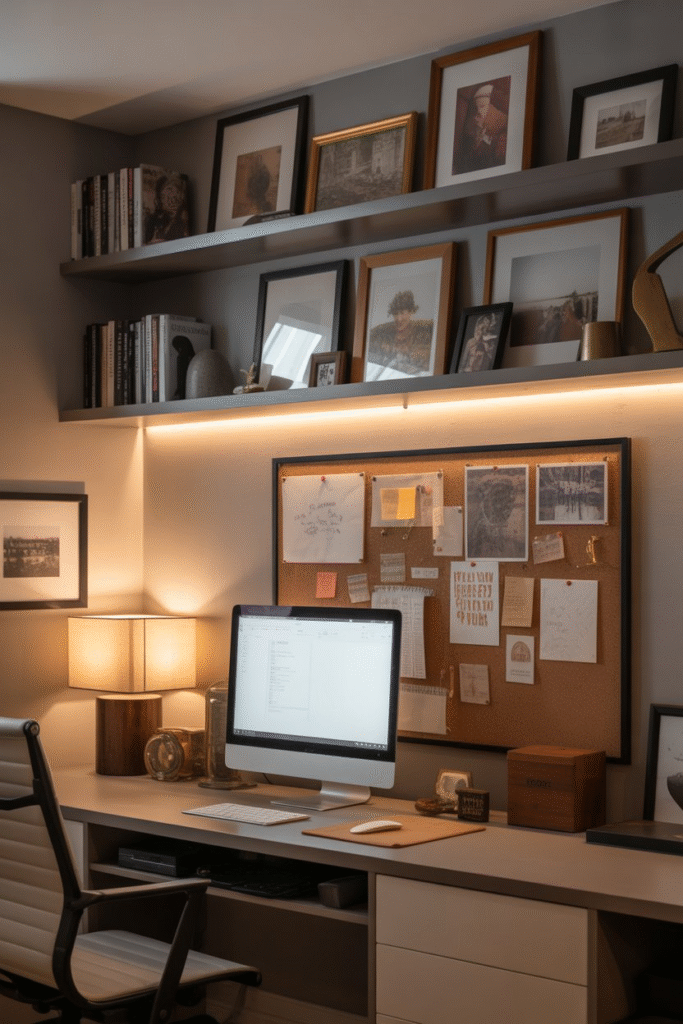
Keep Air and Energy Flowing
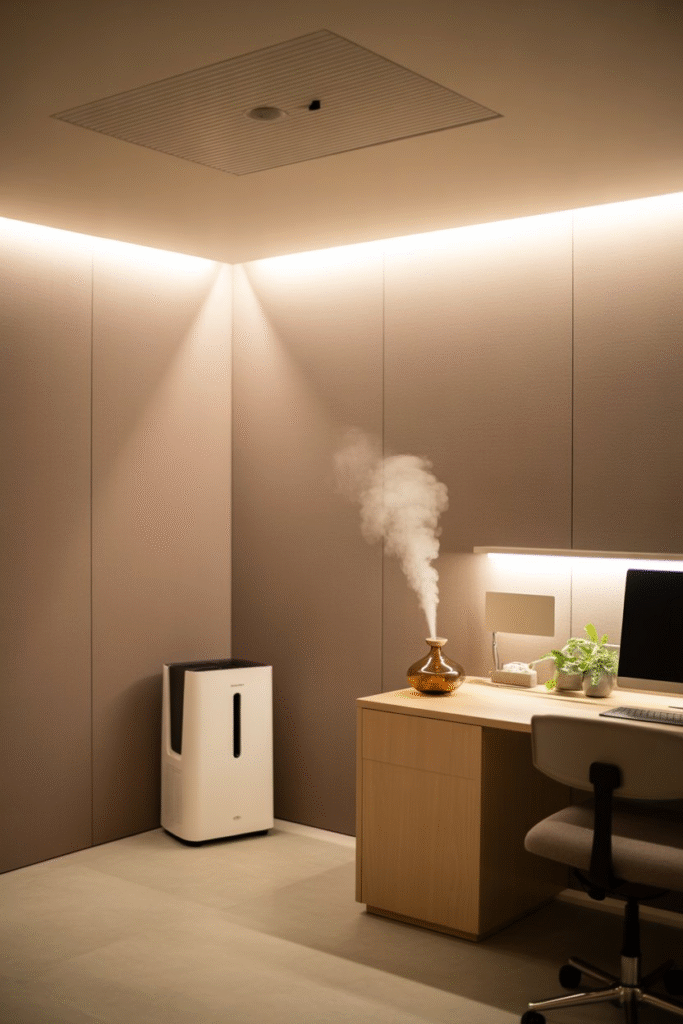
Finally, freshness defines comfort. Use a quiet air purifier or diffuser for circulation. If possible, install a vent fan connected to the upper floor for steady airflow.
The goal is to keep the basement office feeling alive — clean air, soft scent, and a balance between utility and serenity.
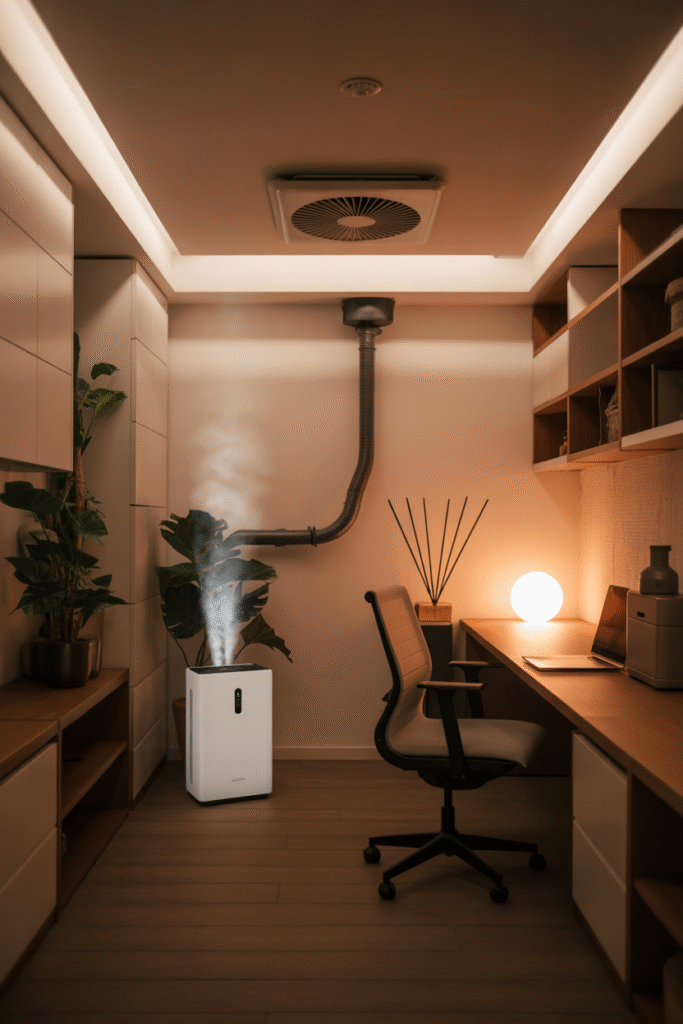
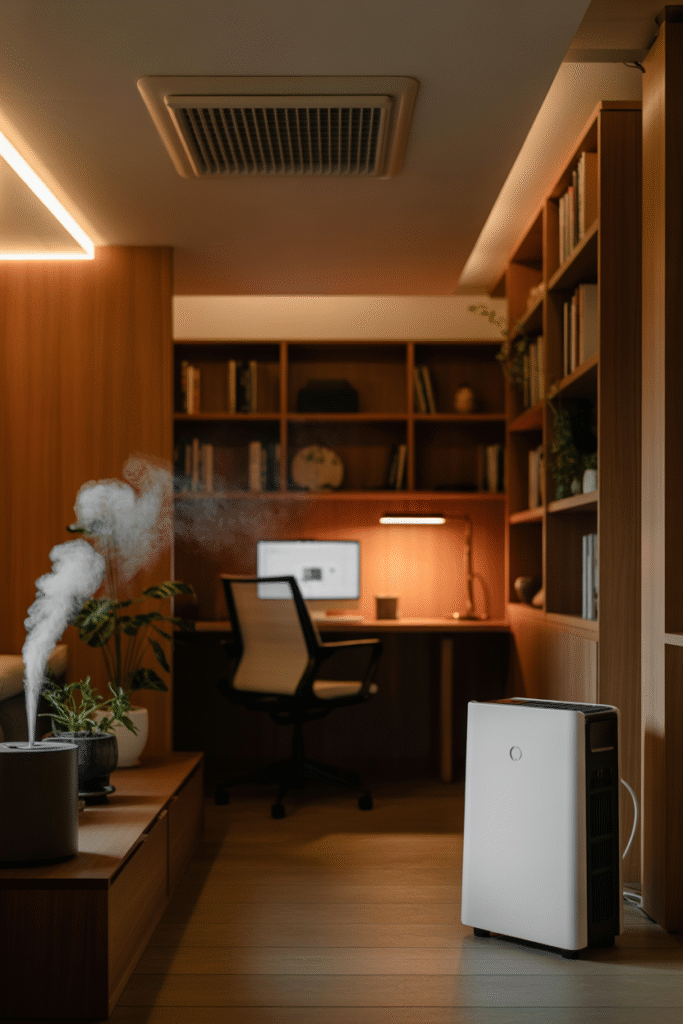
The Art of Light Without Windows
Designing a basement office with no windows is about illusion, emotion, and clever engineering. You’re not just furnishing a room; you’re creating energy where light doesn’t naturally exist. Through balanced color, layered illumination, and thoughtful materials, your underground workspace can become the most focused and tranquil area in the house — proof that great design doesn’t need a view.
